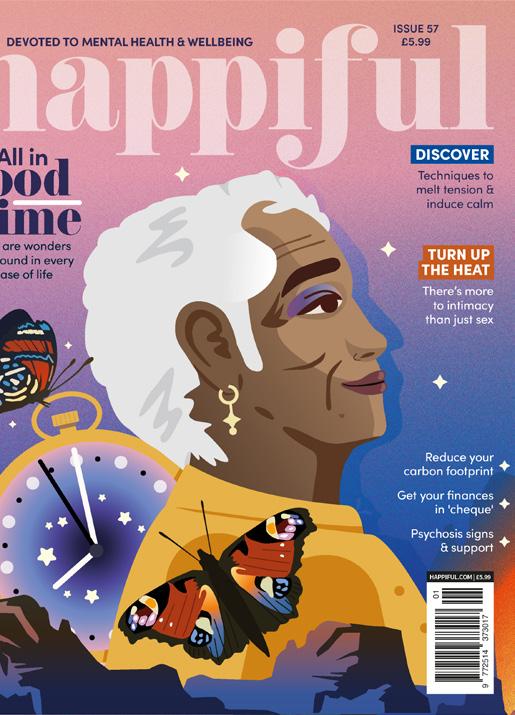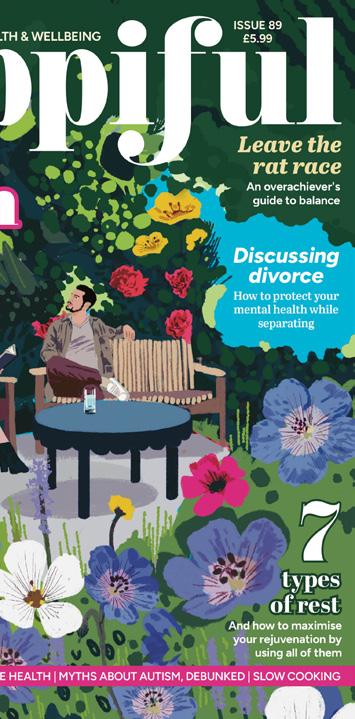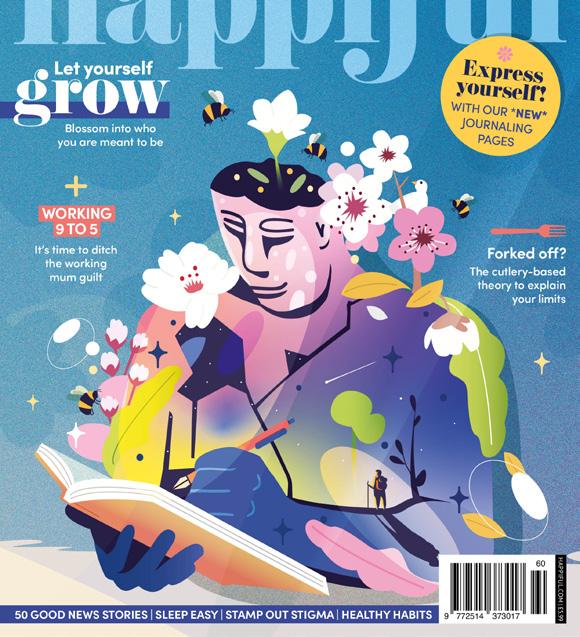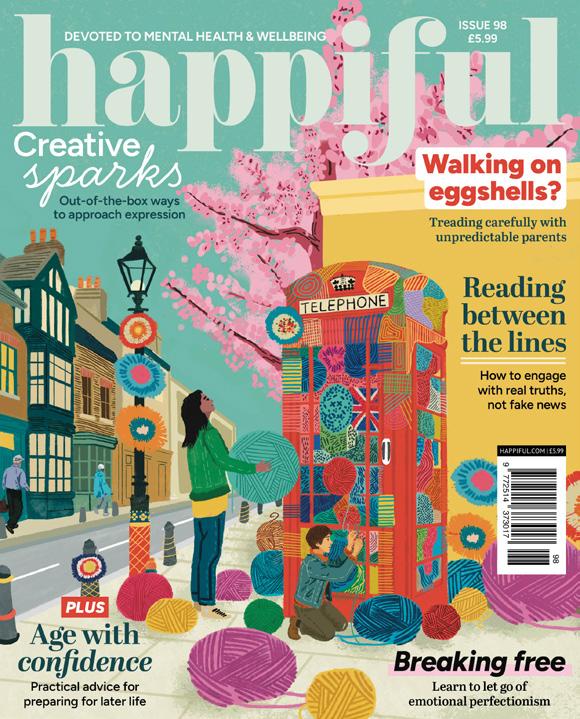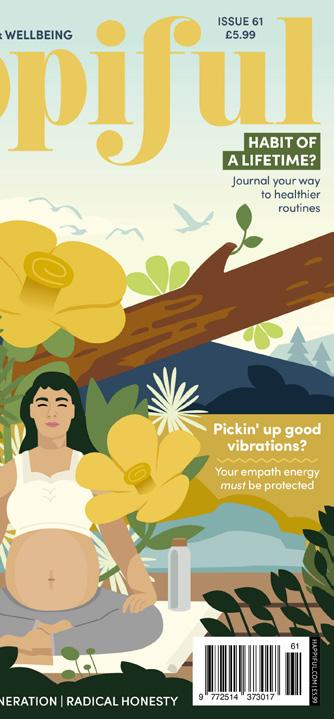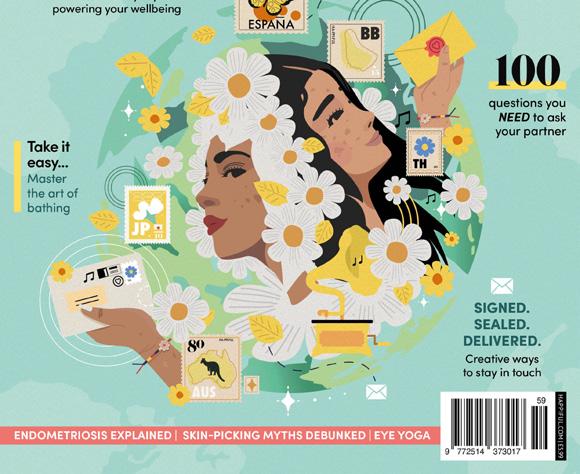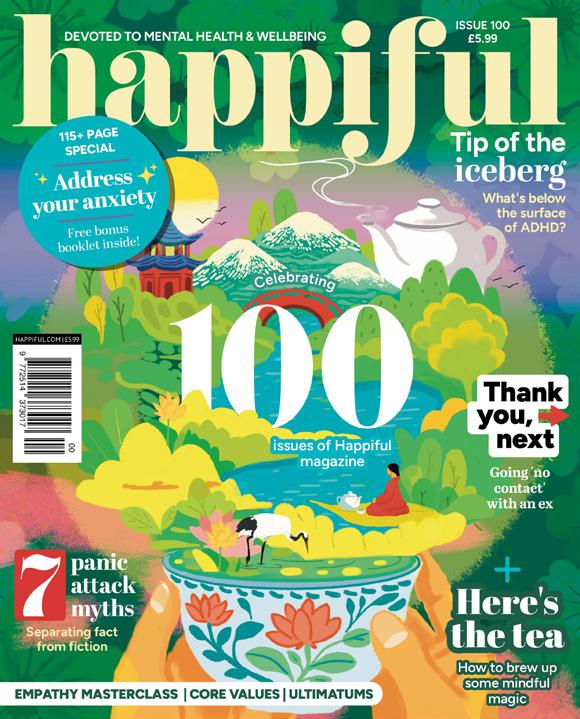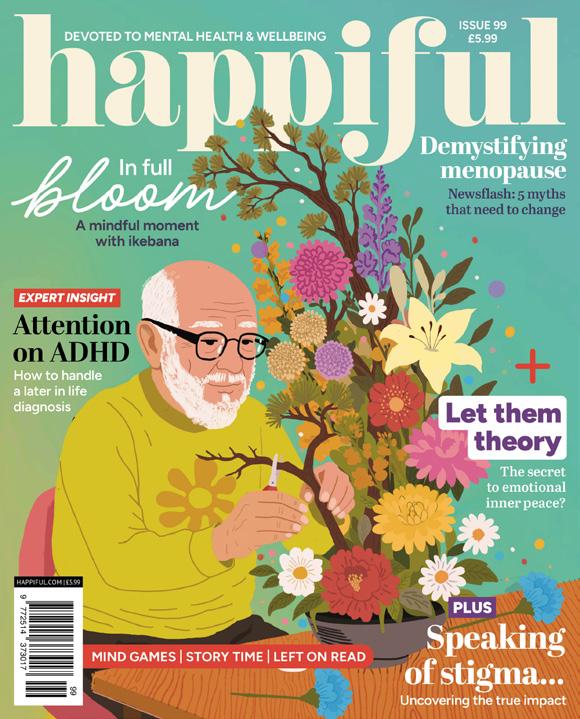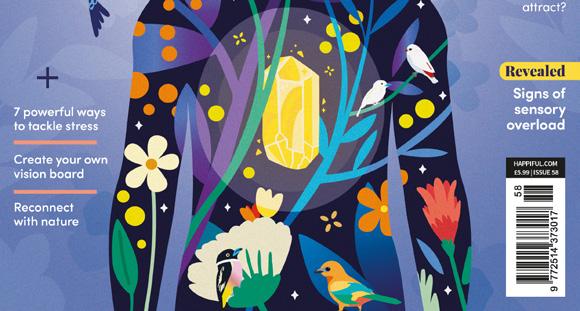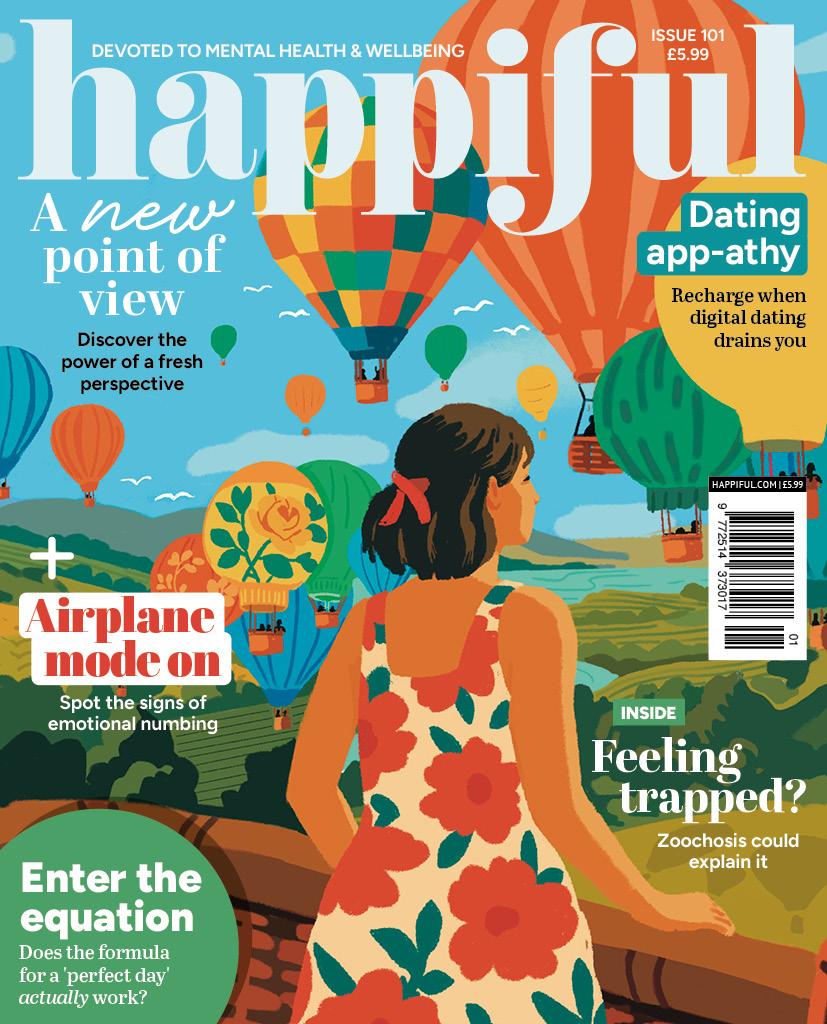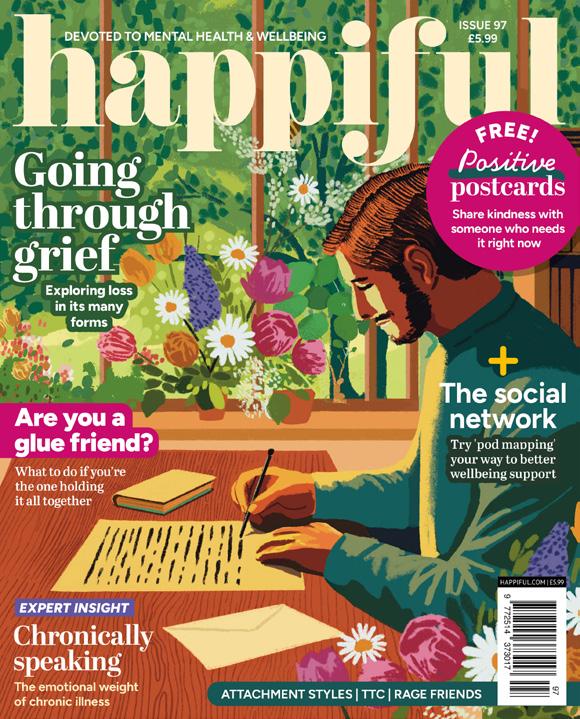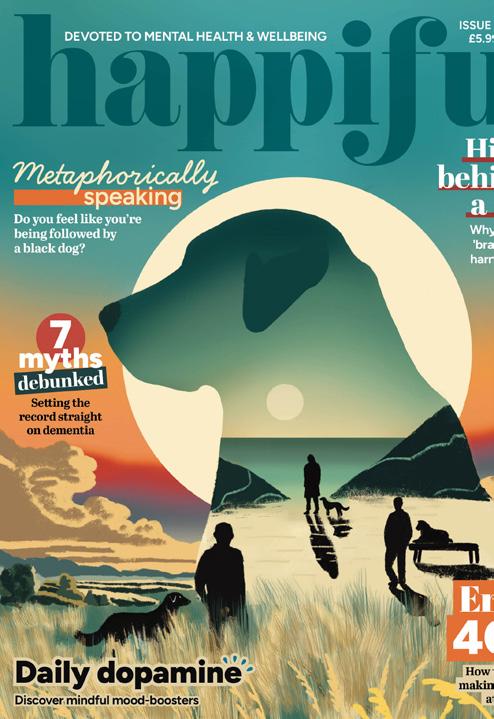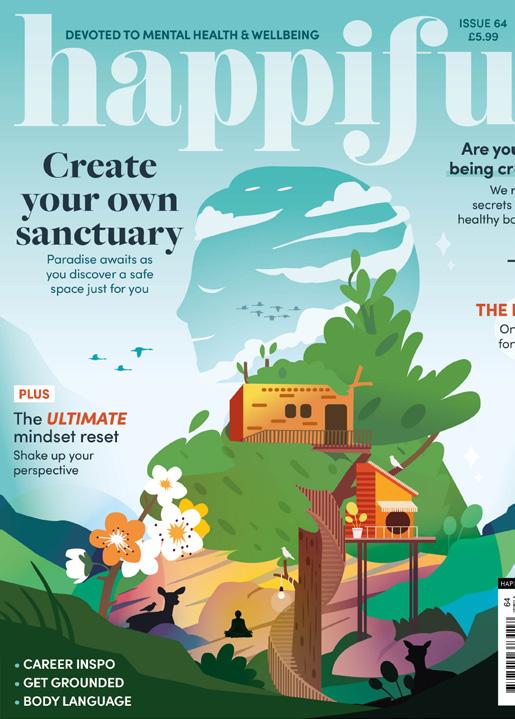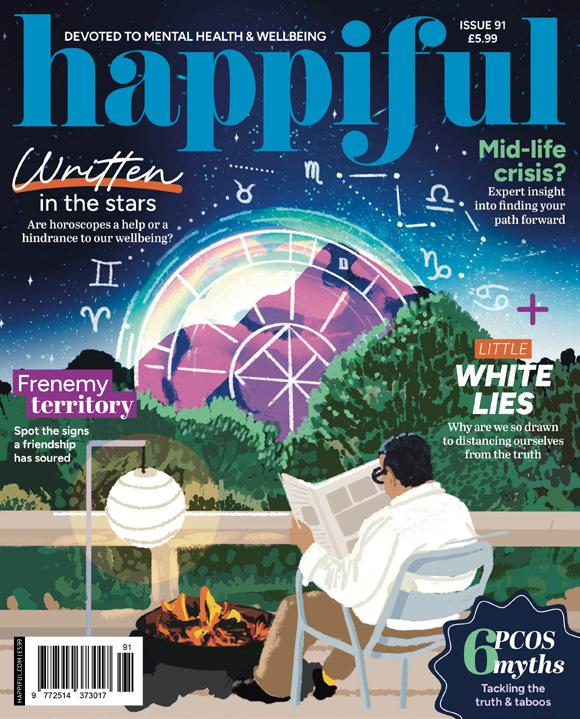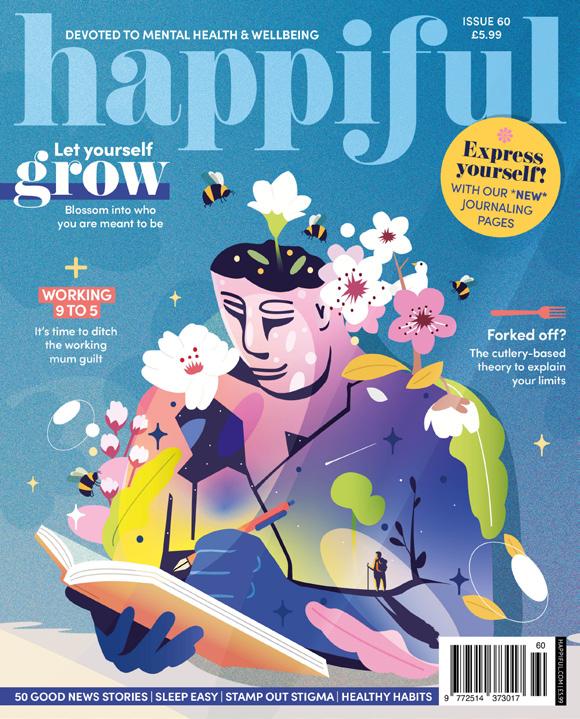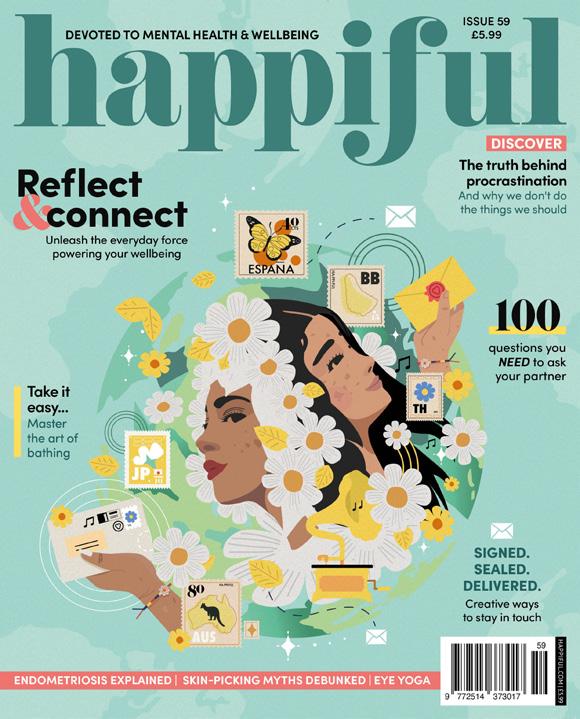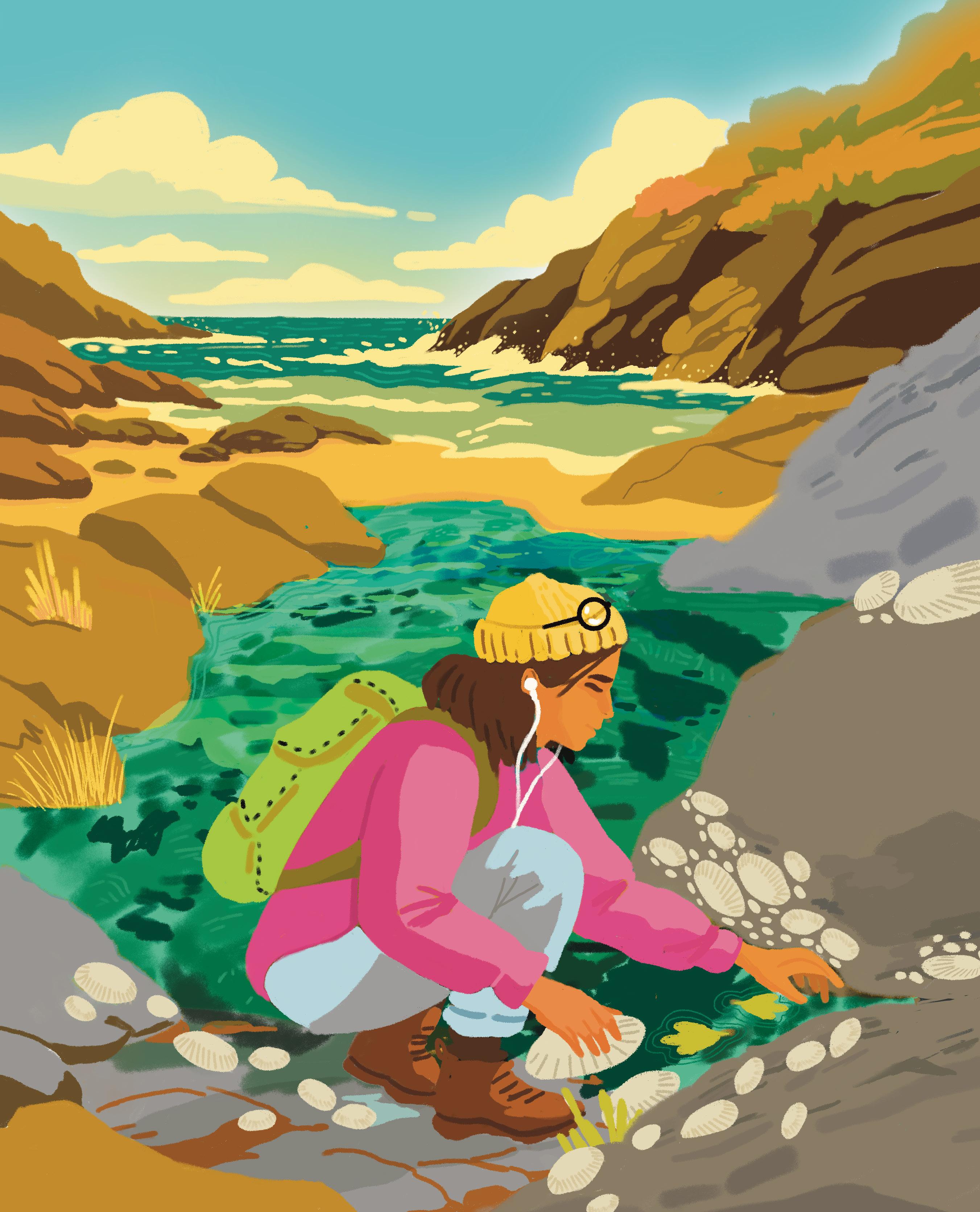

Where love reigns, the impossible may be attained



Where love reigns, the impossible may be attained
Have you heard the saying that ‘no one is as focused on you, as you are’?
It’s not intended as a deprecating remark, but rather a reminder that the harsh glare of the spotlight that so many of us feel often isn’t coming from an external source.
Growing up, I struggled with social anxiety, primarily around the perceptions of complete strangers.
I would do everything in my power to avoid interacting with cashiers, or hospitality workers, begging family to lead the interaction for me, or avoiding a situation entirely if it seemed inevitable I’d have to speak to someone unknown. Even simply walking in public, I was desperate to blend into the shadows, overtly conscious of being inspected by faceless people driving by.
I recall this absolute preoccupation that I was under a microscope, being judged, reviewed, and criticised by any unfamiliar gaze, that petrified me into withdrawal.
But, the truth is that everyone has their own worries, their own battles, their own interests and insecurities, and are far more likely to be focused on those than a passerby who happens to stumble over their words, or feet.
The judgement we fear that holds us back from truly expressing ourselves, and the criticism that keeps us stuck, sometimes in an unhealthy place, can actually just be our own imagination getting in the way.
So, in this issue, we’re holding up a mirror to ourselves – but it’s not about adding fuel to the fire, rather learning why we can fall into self-destructive patterns in the first place (p58).
Whether it’s discovering how to not shy away from our sadness (p44), or changing our perspective on personal ‘flaws’ (such as impulsive behaviour, p36) and recognising them, instead, as self-defence mechanisms, we’re diving into how to turn down the volume on that inner critic.
And the wonderful thing is we don’t have to make some monumental change overnight to feel a difference. Small steps really add up, as evidenced by the power of citizen science (p75), or overcoming decision paralysis one choice at a time (p80).
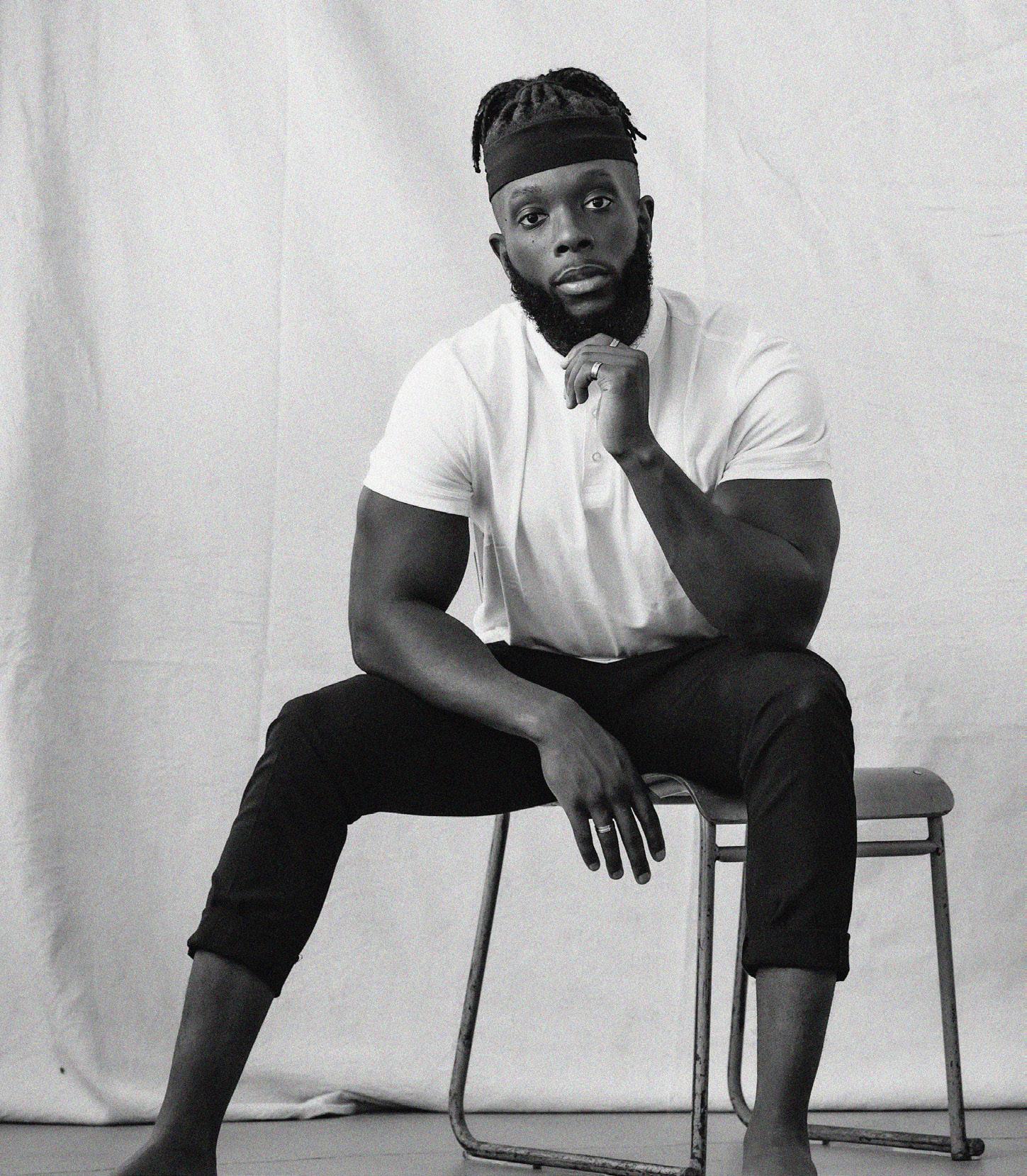
For all the time and energy we spend putting ourselves down, imagine what we could do if we used that to build ourselves up instead – to become our own best friend?
You deserve the compassion you show others, and, I hope, after reading this issue, you’ll be ready to give yourself it.
Happy reading,
REBECCA THAIR | EDITOR-IN-CHIEF

At Happiful, inclusivity, representation, and creating a happier, healthier society are at the forefront of our mission. To find out more about our social and environmental pledges, visit happiful.com/pledges
| @happiful_magazine
12 Popcorn brain
How to simmer down when focus seems impossible
36 Acting on impulse
Spontaneity can be exciting, but it can also be a red flag
44 Feeling all the feels
Why does sitting with sadness seem such an unfathomable task?
75 Nature watch
The citizen science projects supporting more than just wildlife
80 The choice is yours
A deep dive into the science behind decision-making
40 Talking cancer with kids
66 Autumn kitchari
Fall in love with this hearty dish
70 Boiling point
The Happiful Poetry Prize is back for 2026
Rhymes at the ready – we want to read your wonderful words!
Whether you’re a seasoned wordsmith, or picking up your pen for the very first time, we’re seeking poems that explore the theme of mental health and wellbeing.
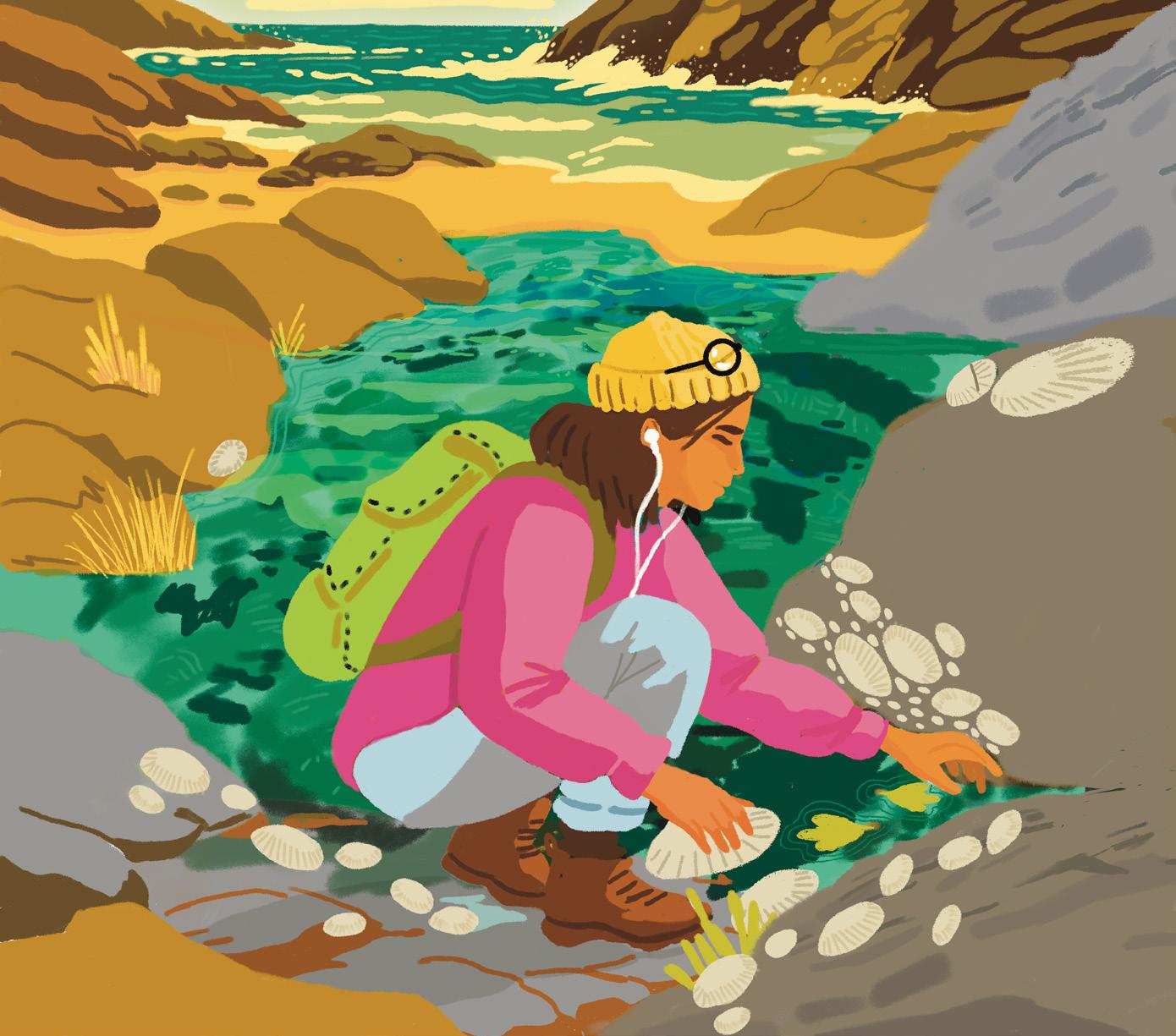
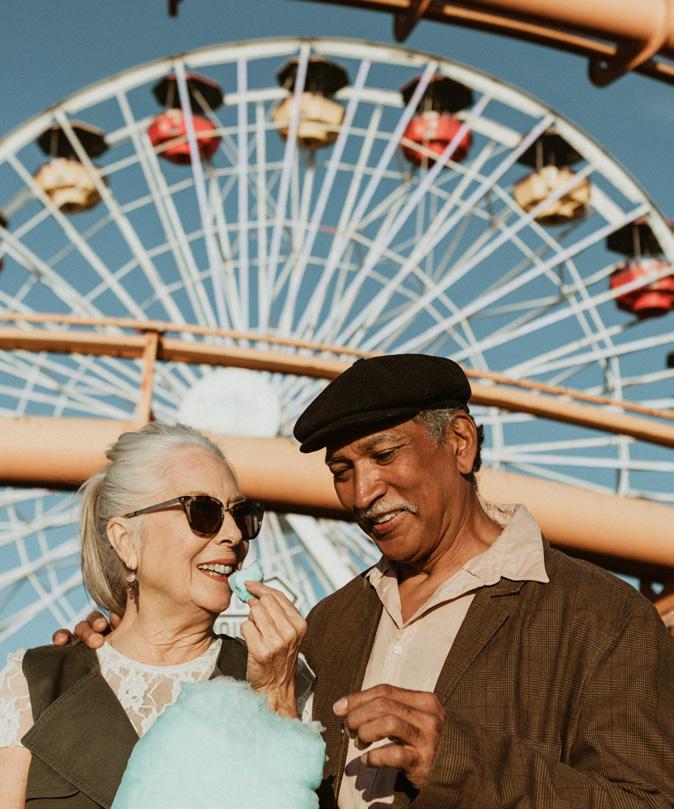
33 Lessons in opening up
52 Wish you were here
Enter for your chance to win £100
Turn to p48 for details on how to enter and to read our tips on how to find your voice.
How to support a long-distance pal
55 Under the spotlight Is your date ‘floodlighting’ you? 60 Only child parental guilt
17 Myths, debunked
It’s time to rewrite the rulebook on retirement
22 Community corner
The group that is creating safe spaces for autistic people
28 Anxiety on your mind
Wendie opens up about anxiety during menopause
30 Ask the experts
Can mindfulness help with work-related burnout?
58 Expert column
Counsellor Bea Appleby explains how to halt self-sabotage
68 Michelle Elman
On the joys of travelling solo
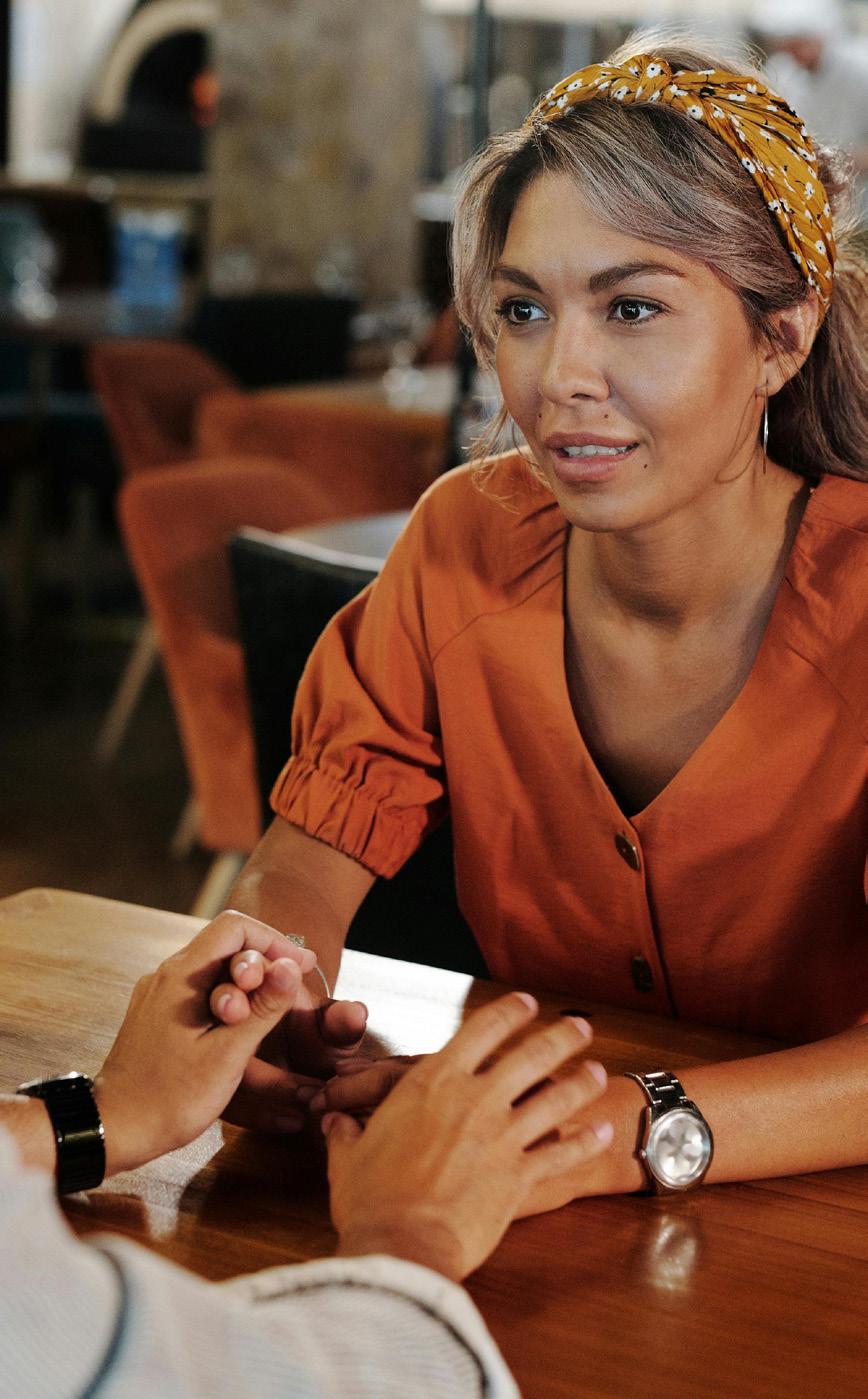

16 Five signs of perimenopause
63 Sensory overload
Personal insight on how to handle it, from author Emily Coxhead
72 What’s the deal with dissociation?
20 Micro moments
A new therapy trend that could save you time, but does it really work?
25 Yellow brick road
Try ‘colour walking’ on your next jaunt
74 Master your mornings
83 Time to talk
If your anxiety could speak, what would it say? This, and more, in our much-loved journaling pages
Every issue of Happiful is reviewed by an accredited counsellor, to ensure we deliver the highest quality content while handling topics sensitively.

Sometimes, we encounter cultural pressure to stay positive, be productive, and ‘keep going’. While this mindset can be helpful, to some extent, trying to maintain it 100% of the time neglects important aspects of ourselves, and the full range of emotions we experience. Check out p44 for more advice on this topic, along with helpful tips for embracing your whole self. We are complex beings, and it’s important to give ourselves access to all parts of who we are in order to truly live out the human experience.

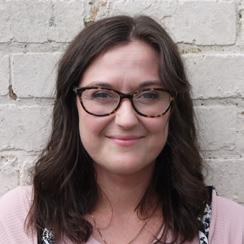




Meet the team of experts providing information, guidance, and insight throughout this issue
BA (Hons) Dip Couns
Caroline is a psychotherapist helping women and mothers cultivate self-compassion.

HCPC
Dr Tariq is a clinical psychologist and director of Illuminated Thinking.
EDITORIAL
Rebecca Thair | Editor-in-Chief
Kathryn Wheeler | Features Editor
Fiona Fletcher Reid | Features Editor
Lauren Bromley-Bird | Editorial Assistant
Kat Nicholls | Brand & Integrity Manager
Bonnie Evie Gifford | Content Writer & Editor
Bea Appleby, Michelle Elman | Columnists
Ellen Lees | Head of Content
Keith Howitt | Sub-Editor
Rav Sekhon | Expert Advisor
DEBORAH BUXTON
BSc (Hons) MSc Dip MBPS
Deborah is a psychotherapist specialising in anxiety, panic disorders, and mindset work.

TINA CHUMMUN
MSc MUKCP
Tina is an accredited psychotherapist and trauma specialist.
DONNA WHITBREAD
BSc (Hons) AdvDip Dip NCPS
Donna is a counsellor specialising in trauma, attachment, and LGBTQIA+.

CLARE PATTERSON
MSc DipPsych LLB MBACP
Clare is an integrative transpersonal psychotherapist and Reiki practitioner.

HANNAH CHERIFORD
BSc MBACP
Hannah is a neuro-affirming, inclusive counsellor, offering pluralistic therapy and supervision.
ART & DESIGN
Charlotte Noel | Design & Commerce Manager
Rosan Magar | Illustrator & Videographer
COMMUNICATIONS
Alice Greedus | PR Manager
Emily Whitton | Content & Multimedia Editor
CONTRIBUTORS
Fiona Berry, Caroline Butterwick, Ilona Cabral, Rosie Cappuccino Emily Coxhead, Kerry Law, Holly Treacy-West, Wendie Ralphs, Katie Scott, Samantha Redgrave Hogg, Lydia Smith, Deborah Buxton
SPECIAL THANKS
BEA APPLEBY
BSc (Hons) Dip MBACP
Bea is a humanistic counsellor, working with adults and couples.
WENDIE RALPHS
BA (Hons) MBACP
Wendie is a trauma-trained therapist and EMDR practitioner.


GEORGINA GARDNER STOCKLEY
MSc Reg BACP
Georgina is a person-centred counsellor and trainee Somatic Experiencing® practitioner.
ANNABELLE HIRD
MBACP
Annabelle is a psychotherapist who specialises in parenthood.
Paul Boniface, Hannah Cheriford, Tina Chummun, Emma Dalmayne, Caroline Fearns, Ella Garrud, Georgina Gardner Stockley, Annabelle Hird, Scott Lippett, Dr Kate Mason, Dr Sophie Mort, Clare Patterson, Ruby Stothard, Dr Aisha Tariq, Donna Whitbread, Jemma Whitelock, William Vanderpuye
MANAGEMENT
Amy-Jean Burns | Chief Executive Officer
Claire Vince | Chief Operations Officer
SUBSCRIPTIONS
For new orders and back orders, visit shop.happiful.com, or call Newsstand on +44 (0)1227 277 248 or email subenquiries@newsstand.co.uk
CONTACT
Happiful, c/o Memiah, Building B, Riverside Way, Camberley, Surrey, GU15 3YL Email us at hello@happiful.com
HAPPIFUL FAMILY
Helping you find the help you need. Counselling Directory, Life Coach Directory, Hypnotherapy Directory, Nutritionist Resource, Therapy Directory

New parents will now be able to access 24/7 breastfeeding support after the government has extended a national helpline.
Thousands of parents and babies will benefit from the extension of the National Breastfeeding Helpline, which helps people across the UK talk to trained peersupport workers, and access free, non-judgemental, evidence-based information on breastfeeding. The 24-hour model means they can get help exactly when they need it, with feeding challenges arising at any time of the day or night.
The National Breastfeeding Helpline is funded by the Department of Health and Social Care, and run by The Breastfeeding Network and the Association of Breastfeeding Mothers. The helpline has been extended for the financial year 2025/26, and more support is now available through the night.

Breastfeeding is a learned behaviour for both parent and child that often requires guidance and support. Although evidence shows that breastfeeding can provide significant benefits for both parents and babies, it’s important that families are empowered to make the choice that’s right for them through access to trusted advice and support. Ashley Dalton, Minister
for Public Health and Prevention, comments: “Many parents will know the struggle of being up in the middle of the night, desperately trying anything to get your baby to feed. It can be incredibly overwhelming, and deeply lonely. We are determined to make sure more women get the support they need through this vital 24/7 helpline.”
Writing | Fiona Fletcher Reid

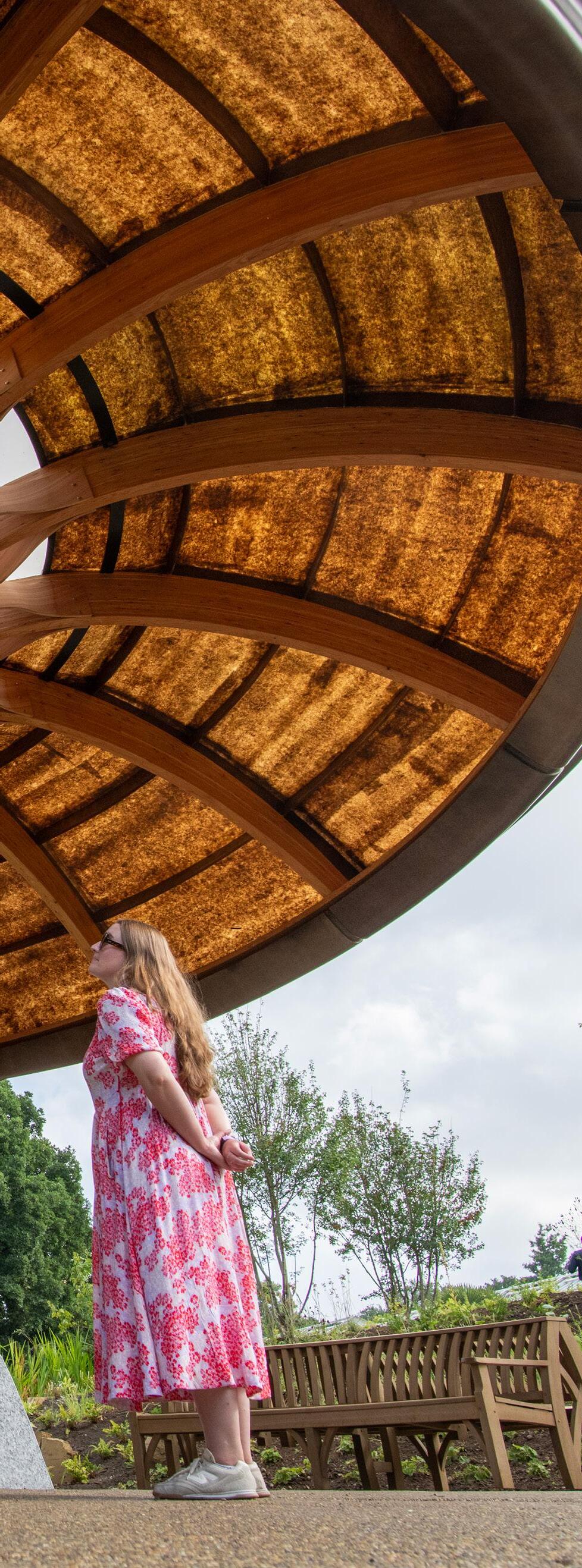
Kew Gardens in London has opened one of its most ambitious garden projects in recent years: the Carbon Garden.
Carbon is the building block of life, and can be found in all living things. However, human activities are releasing too much carbon dioxide into the atmosphere, trapping heat and warming the planet. This new permanent garden brings to life the critical role that carbon plays in sustaining life on Earth. It also communicates the scale of the climate crisis, and shares how plants and fungi are our natural allies in climate repair.
The garden features a curated selection of herbaceous perennials, an exposed coal seam showing fossilised plants, a dry garden with drought-tolerant plants, a rain garden, and 35 new trees selected for their resilience to future climate conditions. A fungal-inspired pavilion directs rainwater into the rain garden, and provides shelter for school visits and community activities.
Richard Wilford, designer of the Carbon Garden, says: “The Carbon Garden offers a unique opportunity to showcase our ongoing research, combining scientific insight with thoughtful design and beautiful planting, to highlight the role of carbon in our lives, how it moves through the environment, and how plants and fungi can help us tackle climate change.”
The hope is that the Carbon Garden will encourage visitors to become advocates for nature, highlighting actions they can take to support the health of plants and the planet.
Writing | Fiona Fletcher Reid
Renowned toy company, Mattel, has released the first-ever Barbie doll with type 1 diabetes (T1D). It’s a move that will help to break the stigma around this common, yet often misunderstood condition, that affects 35,000 children under the age of 19 across Britain, according to Diabetes UK.
To make the doll as accurate as possible, Mattel partnered with Breakthrough T1D – a global organisation helping those living with the condition and conducting breakthrough research. The doll’s accessories include: an insulin pump to manage insulin doses; a glucose monitor to measure
blood sugar levels; and a purse to carry medical supplies and snacks. Additionally, the polka dot pattern on Barbie’s outfit mirrors the design used worldwide to represent diabetes awareness.
For children living with diabetes, being able to play with a doll that shares their health issues can bolster their selfesteem and wellbeing. Happiful’s design and commerce manager Charlotte Noel, who was diagnosed with T1D at the age of 17, says: “It’s comforting to know that children who have T1D can be proud of their condition, and it’s a great opportunity for those without the condition to nurture
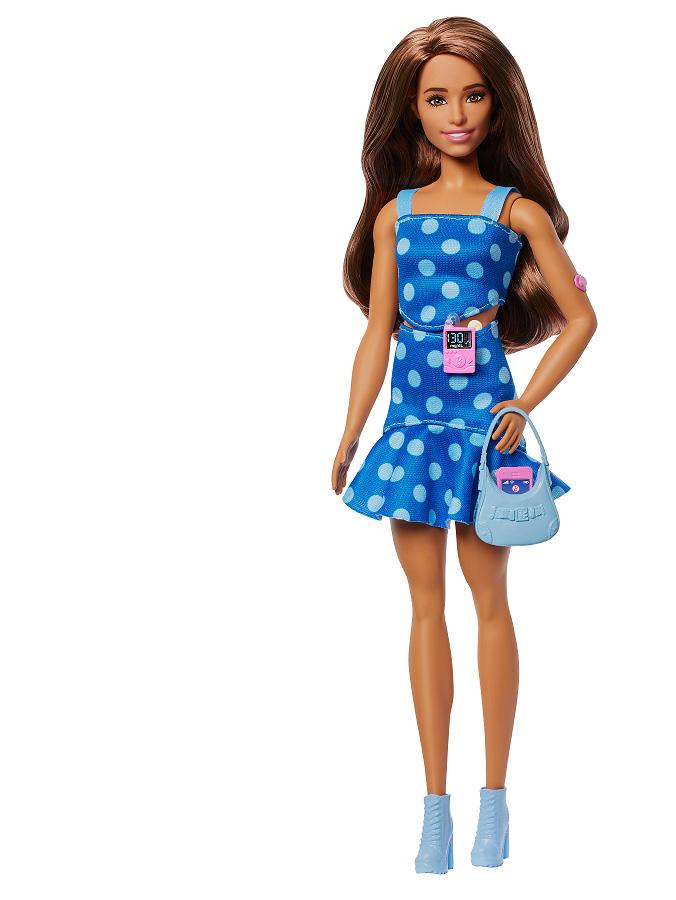
an understanding and awareness at an early age.”
Despite past scrutiny for Mattel’s lack of accurate representation and diversity within its Barbies, the company’s commitment to changing this has flourished in recent years, helping to ensure that all children feel included in both play, and in life.
Writing | Lauren Bromley-Bird
What if there could be a new way of detecting and treating diseases?
Thanks to full-body scans of 100,000 volunteers, change could be in our future. The UK Biobank project is sharing a billion images of organs, blood vessels, and bones to help researchers study ageing and ill-health.
The completion of the decadelong project will give qualifying researchers worldwide access to a billion de-identified images from volunteers. Additional information
on their medical histories and data covering genetic makeup, health, and lifestyle will also be provided.
Following the health of half a million Brits, subsets of images have already contributed to breakthroughs in how the heart influences psychiatric disorders, and have helped develop new processes for more accurate dementia diagnosis.
The project captured 12,000 images from each volunteer, looking at the size, shape, and
structure of their brain, bones, heart, and other organs, in addition to body fat and bone density. The second phase involves re-scanning 60,000 volunteers at least two years after their first imaging appointment.
This landmark project promises to reshape the future of medicine, with every new insight bringing us closer to earlier diagnoses, better treatments, and healthier lives for generations to come.
Writing | Bonnie Evie Gifford
Tree planting in England has reached its highest levels in two decades, with 10.4 million trees planted in the past year
From January 2026, employers in Ontario, Canada, will legally have to contact interviewees within 45 days, preventing them from being ‘ghosted’
Whale song might be thought of as inherently relaxing, but it seems our seas are growing quiet –and it’s a cause for concern.
A six-year study following whales off the coast of California, published in PLOS One, reported a 40% drop in whale vocalisations. Scientists believe that as food sources, such as krill, become more scarce, whales are focusing more of their time on hunting, and are getting too hungry to sing.
The World Health Organisation (WHO) has confirmed that Senegal has become the ninth country in WHO’s African Region to eliminate trachoma – the world’s leading cause of infectious blindness.
There’s more to tortoises than meets the eye, according to research from the University of Lincoln, which suggests they can experience human emotions like optimism and positivity! The study focused on 15 redfooted tortoises, and discovered that those living in ‘enriching’ environments displayed more positivity, and those who showed ‘optimistic decision-making’ presented less anxiety, even in unfamiliar environments.
A new study, published in the ‘Journal of the American Heart Association’, reports that deaths attributed to heart attacks have significantly declined in the past 50 years. In fact, there’s been a nearly 90% decline between 1970 and 2022 in the US, with the belief that advancements in treatments, as well as preventative measures, are what’s made the difference.
A groundbreaking male contraceptive pill has passed the milestone of first human safety trials with no adverse effects
Music is widely viewed as a unifying force, ‘the food of love’, and a tool for self-expression – but not everyone feels that way. ‘Musical anhedonia’ describes someone who can derive pleasure from many things, but simply feels nothing when listening to music – and now, a study by the University of Barcelona has uncovered why. Researchers discovered that those with musical anhedonia have a disconnect between the area of the brain that hears music, and that which senses pleasure. They believe that understanding more about this unique way of experiencing the world could prompt wider understanding about our joy and reward systems – essentially, why some of us dance to the beat of a different drum.
Helsinki, the capital of Finland, has gone a full year without a single traffic fatality, thanks to reduced speed limits and new road designs
After a motorcycle accident at 19 saw Phil Thompson become a wheelchair user for the rest of his life, the now 66-year-old thought his dream of climbing Snowdon, in Wales, was no longer in reach – that is until the Bangor Rugby Club stepped in. With his son, Sam, playing for the team, word spread about Phil’s dream, and so they combined plans for an existing fundraiser with the team actually carrying Phil to the summit using a frame around his chair, and reached the peak three hours later.
YouTube has rolled out policies to encourage original and authentic content, by making AI-generated videos ineligble for monetisation.
Fundraising in honour of his late mum, who had motor neuron disease and was cared for in her final months at Les Bourgs Hospice, Matt Holland, from Guernsey, completed the island’s 30 bays in 30 days challenge – but in under 24 hours! He ran 50km between the bays, swam at least 30 strokes in each, and raised £5,500+.
New research, published in Nature, suggests llamas could hold the key to treating schizophrenia. Scientists used llama antibodies to create ‘nanobodies’, which targeted a key brain receptor related to the mental illness, helping to improve cognitive function. Of course, a lot more research is required, but initial findings seem promising.
The UK government is introducing a new ‘Extended Producer Responsibility for Packaging’ scheme, which puts the responsibility on businesses to be conscious of their packaging. Companies will be charged fees based on how easily packaging can be recycled, with lower costs for those that are reusable, with the profits set to generate £1.4 billion for local councils.
If you struggle to focus, have scattered thoughts, and get easily distracted – you could be experiencing ‘popcorn brain’...
Writing | Fiona Fletcher Reid
mental overload, increased stress, fatigue, and anxiety.
chores to complete. Just yesterday,
According to a 2024 PPL PRS survey of 2,000 Brits, workers (whether at home, office, or hybrid) lose up to 15 hours a week to distractions. Worryingly, a separate survey by the Policy Institute and Centre for Attention Studies at King’s College London revealed that 49% of the UK public say they feel like their attention span is shorter than it used to be, and 47% say that ‘deep thinking’ has become a thing of the past.
and constant connectivity, means we’re regularly pulled into the endless stream of the digital world without conscious consent.
Before I knew it, I was surrounded

So, what’s causing all this pressure, and making our brains metaphorically ‘pop’? David M Levy, a computer scientist at the University of Washington who coined the term popcorn brain, said that it was a result of “being so hooked on electronic multitasking that the slower paced life offline holds no interest”.
The sheer volume of information available at our fingertips means that when a thought arises (e.g. I’d like some new gym leggings) we don’t have to put the task on hold. We can go online and get the dopamine hit of searching and finding what we need. This, along with digital notifications,
But social media is just one piece of the puzzle. Psychotherapist Tina Chummun notes that financial pressure, burnout, and emotional dysregulation can create the conditions for popcorn brain. “Your brain isn’t designed to function well in constant fightor-flight mode. When cortisol is persistently high, the prefrontal cortex (the part of the brain that governs decision-making and attention) goes offline, leaving us scattered and reactive.
“Whether it’s unprocessed emotions from earlier in the day, or way back in childhood, these can clutter our mental headspace. This can be especially common in people who’ve experienced enmeshment trauma or perfectionist upbringings, where their mind is always on full alert.”
There’s also lifestyle factors to consider.
“Skipping meals or

47% of people say that ‘deep thinking’ has become a thing of the past

eating foods that spike and crash blood sugar levels can directly affect our mental clarity,” says Tina. “Being dehydrated has the same effect, too. Your brain needs consistent fuelling, not just caffeine and chaos.”
Without adequate rest, Tina says your brain is unlikely to function optimally. “Not just poor sleep, but a lack of mental downtime can affect the brain. Even moments we think are restful – like scrolling, bingewatching, or multi-tasking –often keep our brain in a state of low-grade stimulation that prevents real cognitive reset.”
If this all sounds familiar, you would be forgiven for thinking that it’s not popcorn brain you’re experiencing, but instead, symptoms of attention deficit hyperactivity disorder (ADHD). And while there is certainly an overlap, Tina explains that ADHD is normally present (even if undiagnosed) from a young age, and affects functioning across multiple areas (e.g. home, school, relationships) and doesn’t simply ‘switch on’ when life gets hectic. >>>

“Popcorn brain is usually situational,” explains Tina. “It tends to emerge during periods of stress, emotional upheaval, information overload, or major lifestyle changes.”
So, how can you really tell the difference? Ask yourself if your focus improves in calm, low-stimulation environments. If the answer is yes, then it’s likely you may be responding to overstimulation, rather than experiencing a neurological difference. When in doubt, speak to your GP about getting a formal assessment.
That aside, here are some of Tina’s top tips to turn down the heat when your brain is working overtime…
Instead of letting your distractable mind call the shots, take a moment to catch all those kernels that are popping off. Make a mind map by writing down everything

Tina Chummun is an accredited psychotherapist and trauma specialist. Find out more on the Counselling Directory.
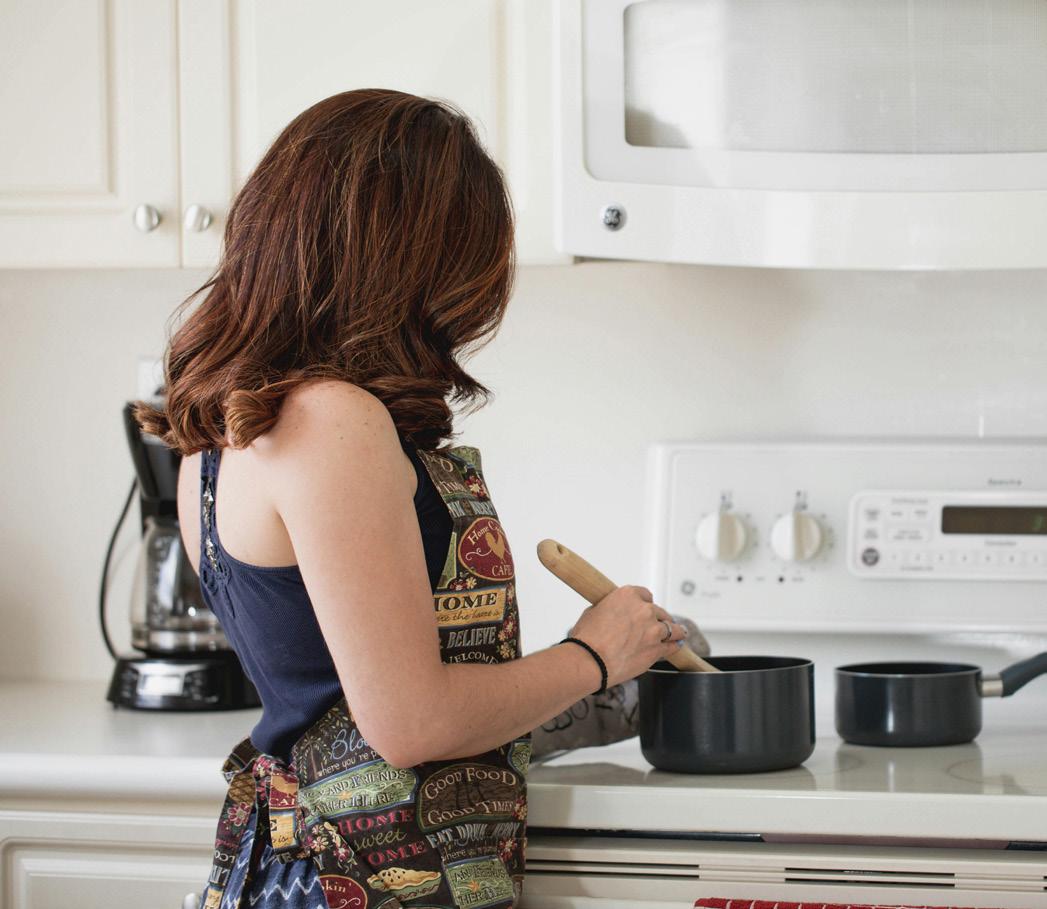

that’s on your brain: appointments, worries, conversations, to-dos, emotional niggles. Write them in any order without the pressure to organise it just yet.
“Once everything is out of your head and on to the paper, start grouping these into areas of your life – e.g. work, home, emotional wellbeing, future plans,” suggests Tina. “Then ask yourself: what matters now? What can wait? This creates order, and gives your brain permission to focus, as well as the opportunity to remember everything.”
Every time you switch tasks, reach for your phone, or feel your thoughts becoming scattered, take a pause. “Breathe in. Name what you’re feeling. Then reorient yourself,” says Tina. “Trauma responses are when your body is in survival mode, and that involves ‘acting fast’. This micro-practice [...] enhances your awareness,
emotionally regulate.”
A true digital detox is unrealistic for most of us. Instead, try ‘focus blocks’ consisting of 25–30 minutes away from screens, followed by a five-minute reward scroll. “This teaches your brain to tolerate stillness, without feeling punished or deprived,” says Tina.
Allow space in your day for doing nothing. This may feel excruciatingly boring at first, because popcorn brain likes to be ‘go go go’ in an attempt to feel safe. “Go for a walk without music. Cook without a podcast. Stare out of your window and notice what you can see,” suggests Tina. “Sit in silence and observe your thoughts. Let your brain breathe. Doing nothing is sometimes doing exactly what your nervous system and body needs.”
Thoughts are within your control, focus, and awareness
More based on rationality, logic, and thoughts are coherent
Used primarily for decision-making, reasoning, and critical thinking
Problem-solving and processing information
Short-term memory
Willpower
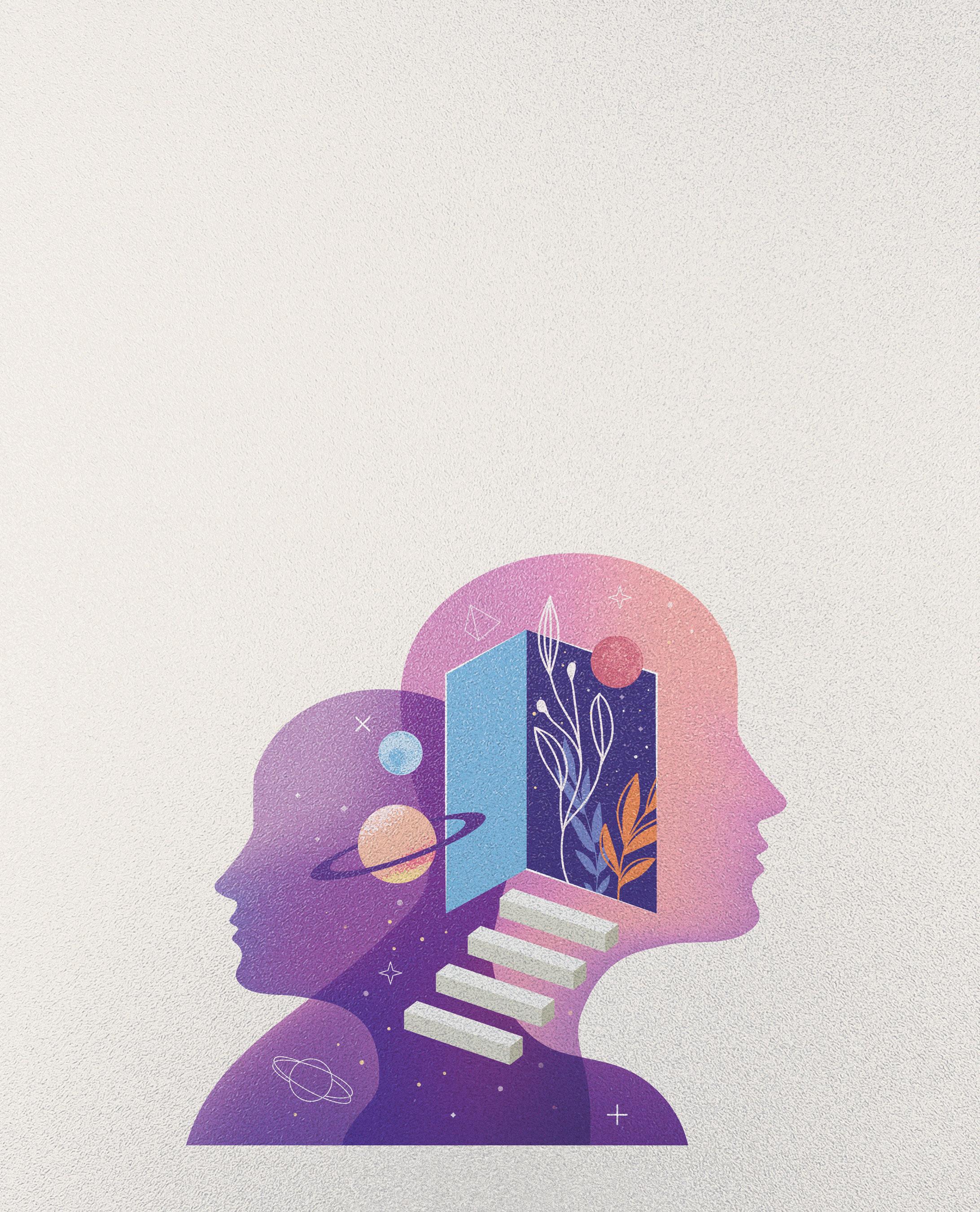
Underlying thoughts and feelings you might not directly observe
Grounded in emotion and intuition
Influences our habits, beliefs, and automatic responses
Muscle memory actions
Long-term memory
Imagination
Information around the early stage of menopause is often hard to come by. Here, we’re sharing five things you may not realise can be linked to perimenopause…
Writing | Fiona Fletcher Reid
Perimenopause is a transitional phase that can begin in your 30s, 40s, or 50s, and last for several years, ending when you reach menopause – defined by the NHS as not having a period for 12 months. So, if you’re over 30, still have periods, and are unsure what signs to watch out for, here are some symptoms of perimenopause that can go under the radar.
As women age, their testosterone levels decrease. This hormone is responsible for the oil glands in your eyelids, which offer a protective layer for the tears underneath. Dry eyes can be made worse by excessive screen time, and exposure to allergens and cold weather, but can be treated with eye drops and/or a warm compress.
Burning mouth syndrome (BMS) is the persistent burning, tingling, or metallic taste in your mouth that can affect the tongue, lips, gums,
or entire mouth. Although not exclusive to those going through menopause, research published in Menopause Review notes there is a high incidence of BMS in perimenopausal women. There is conflicting evidence about whether hormone replacement therapy (HRT) can help, although most people find it gets better over time.
In a survey of 5,744 women by Newson Health, 23% reported nausea or sickness as a symptom. This tends to be more prevalent in the mornings, can feel similar to PMS, and is thought to be a result of fluctuating hormones. However, some people find it’s linked to the kind of HRT they take – so switching this out may relieve symptoms.
Because of the fluctuations in oestrogen that occur during this life stage, the pathways in the

brain connected to smell can be affected. You might find you can’t smell things as strongly as before, or that particular smells are heightened or have become unbearable. This lack of oestrogen can also lead to a dry mouth, which means less saliva, which is a key component of how we experience flavours.
You may have noticed that things are a bit more whiffy than usual, or that your scent has altered in some way. Firstly, the aforementioned changes in scent perception could shift the way you perceive smells. That aside, it can also be a direct result of increased anxiety, as well as hot flushes, both of which can make you sweat more, and can, in turn, impact odour. Decreased oestrogen levels can also impact vaginal pH levels. It’s important to note that a change in scent could be related to other underlying conditions, so it’s best to speak to your doctor if you’re worried.

Transitioning away from working life can be a confusing time. That’s why we’re debunking these myths about the process…
Writing | Fiona Fletcher Reid

Approaching retirement can be a complicated experience. On one hand, the idea of slowing down and spending more time doing the things you love might be appealing, on the other, you might wonder how you’ll cope with the financial logistics, or whether you’ll lose all sense of purpose when you finish work. In order to make the most of this time, learning more about how to navigate its complexities is key. So, here are five myths about retirement that we’re ready to debunk…
MYTH: Retirement is a time for celebration
Retirement is definitely something worthy of celebration, but that doesn’t mean you’re wrong to feel a mixture of conflicting emotions about this new life phase. Retirement is a major life transition, and because the work we do is often closely linked to our identity, the shift can be profound. “For someone who’s been working for decades, it may feel
like leaving behind a version of themselves and stepping away from the working world they’ve been part of,” explains psychotherapist Clare Patterson. “This can bring up feelings of sadness, loss, or even fear about what lies ahead.”
In a society that idolises both youth and career status, is it any wonder that getting older and stopping work can feel like something to mourn, instead of celebrate? “There can be a strong attachment, or simply habit, around working, and letting go of that can feel like a genuine loss,” says Clare. “It’s important to give space to whatever feelings are coming up. Once those are acknowledged, the freedom and possibility of retirement may begin to emerge more clearly. Whatever someone feels about retirement is entirely valid.”
MYTH: You’ll be bored without a job
Writer Annie Dillard famously said: “How we spend our days is, of course, how we spend
our lives.” So, when it comes to stepping away from employment, where we spend an approximate 90,000 hours in our lifetime, you’d be forgiven for wondering how on Earth you’ll spend all your newly-acquired free time.
When I ask Clare about the fear of boredom in retirement, she says it’s important to get to the root of that fear. “For many, work provides a structure or distraction that keeps them from facing certain parts of life. Perhaps difficult relationships, unfulfilled desires, or aspects of themselves they haven’t had the time or space to explore,” she says. “When that structure falls away, there’s often more room for reflection. This can be a powerful opportunity to reconnect with interests, people, or even decisions that have been waiting quietly in the background.”
Talking to a trained professional can help in this instance, as, according to Clare, all that spare time to think can “bring up some uncomfortable truths, and that can feel daunting at first”. >>>

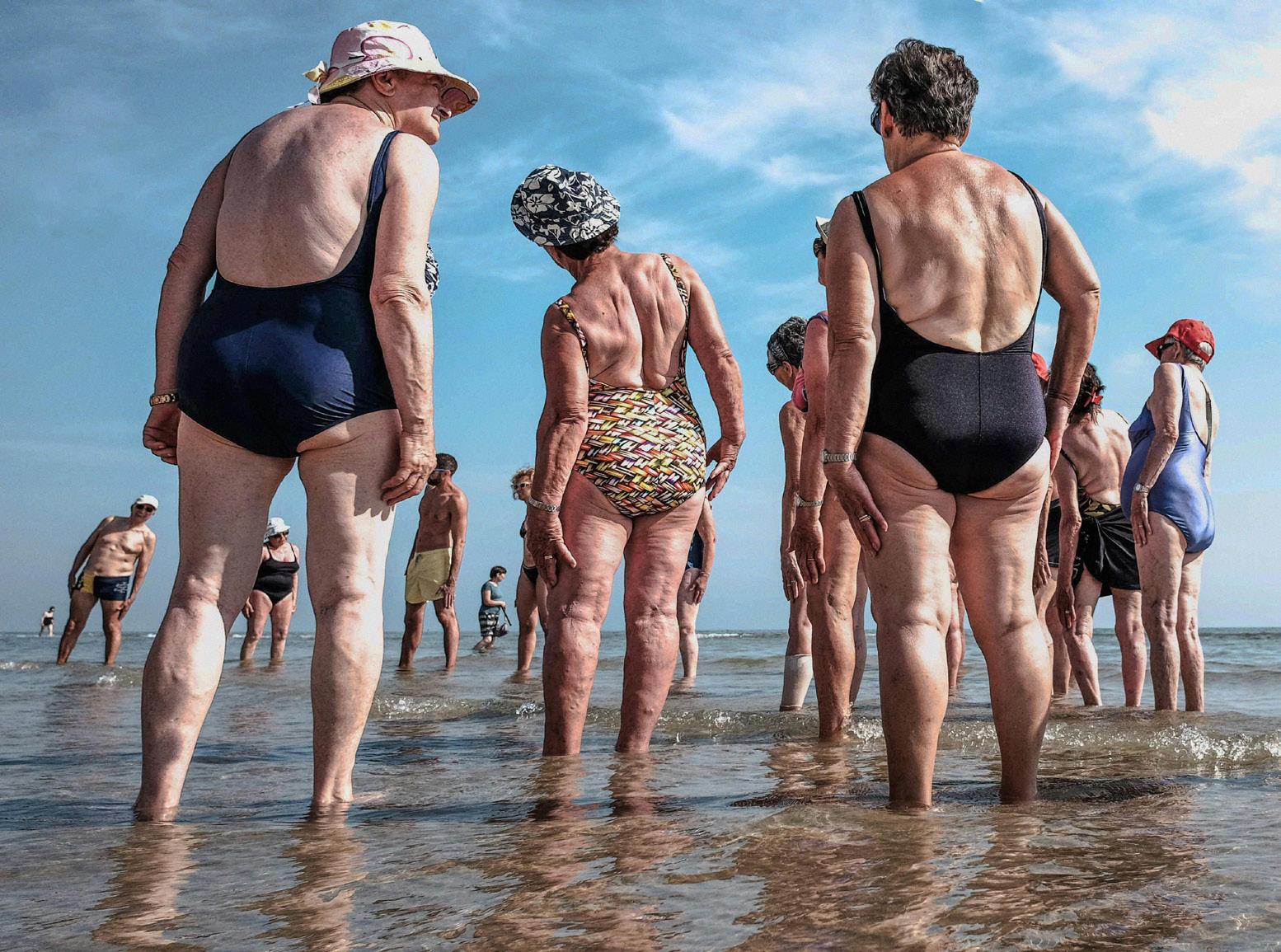
“The truth is that boredom usually arises when we’re not comfortable being with our real selves,” says Clare. Yet, when we’re at ease in our own company, that feeling dissipates. So, if you’re worried about boredom, the solution is likely to focus on internal exploration over external distraction. It’s not always easy, but retirement can offer a rare opportunity to get curious about all the hidden parts of yourself that are waiting to be discovered.
MYTH: Retirement means giving up work entirely
If you’ve got friends and family nudging you to make the leap and you don’t feel ready, there’s no shame in maintaining some sort of connection to work as you test out retired life. Whether you want to continue to work part-time, try out volunteering, or act as a mentor for others, sometimes having a cause to dedicate some energy to can give you a sense of
This can be a powerful opportunity to reconnect with interests, people, or even decisions that have been waiting quietly in the background
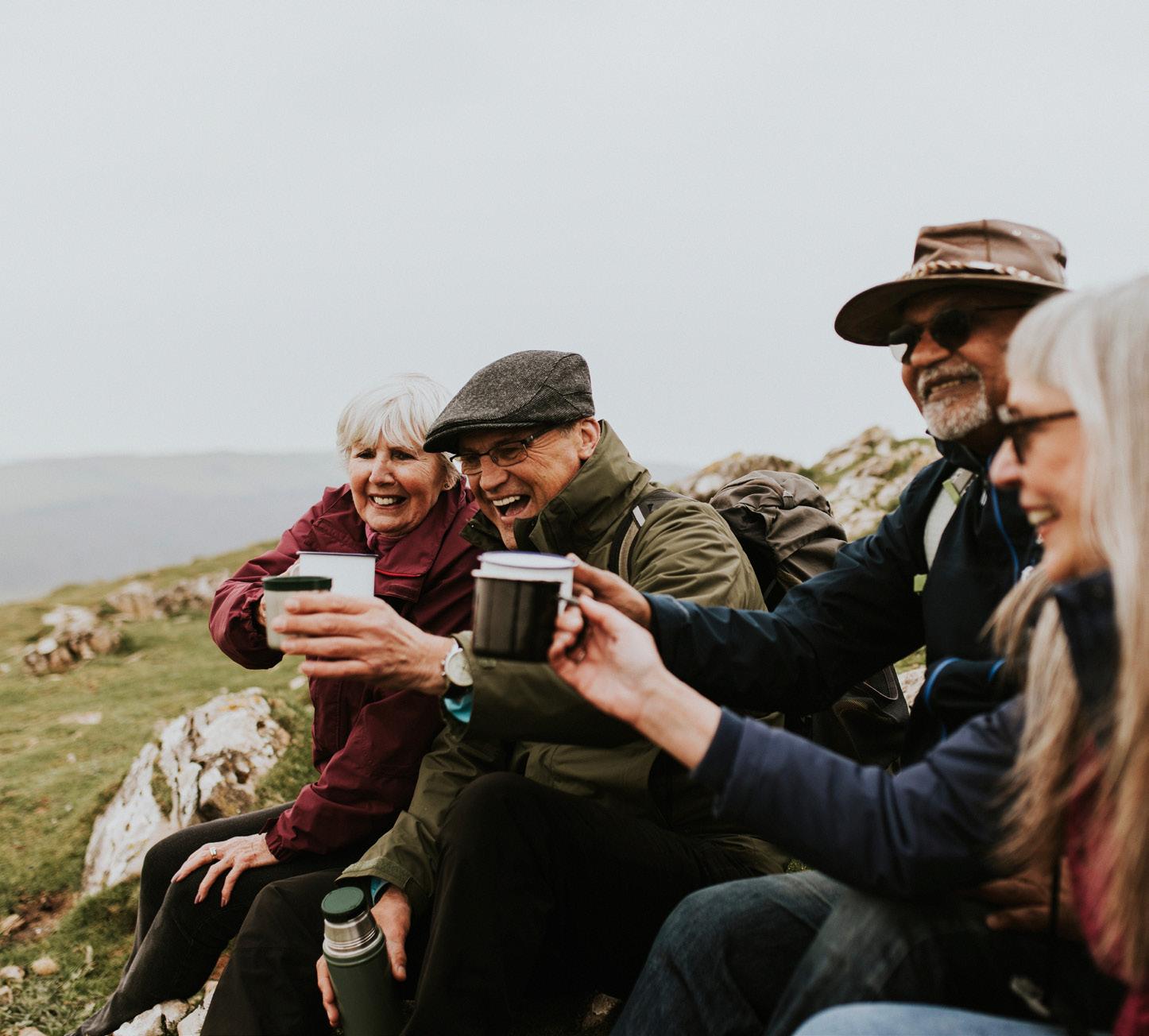
fulfillment, without the full-time commitment.
“One of the gifts of retirement is that it allows us to choose how we want to spend our time. It can be a chance to re-evaluate what work means to us, and to decide what we really want to do, rather than what we’ve always done,” says Clare. “There’s room to explore new roles or projects that align more closely with our values or interests.”

MYTH: Retirement means living with less
Whether you’re relying on a state pension (around £230 per week) or have additional private pensions or savings to keep you going, you may be scared about how you’ll make ends meet without a regular monthly wage. While it’s absolutely true that you’ll need to have your finances in order, it doesn’t have to mean you face a miserable future.



“There are many fulfilling things in life that don’t require a lot of money,” says Clare. “Spending time with friends and family, going for walks, preparing nourishing meals, reading, gardening, or joining local groups. It can help to reflect on what really brings joy, and whether those experiences can be created in new or simpler ways.”
“That said, there are practical things that can be done, too. Looking into pension options, planning a monthly budget, or considering part-time work can all help ease financial concerns,” suggests Clare. For free guidance on retirement savings options visit moneyhelper.org.uk. It’s worth remembering that peace of mind often comes from a sense

of purpose, connection, and overall wellbeing – not just from financial wealth.
MYTH: You have to slow down when you retire
The image of retirement portrayed in the media is one that doesn’t resonate with everyone. While, for some, physically resting and doing less really is what helps them thrive, for others, it can be more about the chance to pour their energy into exciting new projects.
“Retirement can be a gift,” explains Clare. “It’s an opportunity to move away from the usual systems of routine and pressure, and to reconnect with oneself in a more natural and meaningful way. There’s more time for hobbies, relationships, rest, and exploring who we are beyond the working role.”

So, although you may find yourself enjoying lazy afternoons reading a novel on the sofa, or sneaking in a daily siesta, there’s also a wide array of things that are likely to motivate you to get out and do more – to take up activities and adventures you never had the time to explore before. Whether you’re ready to retire, or are just coming round to the idea, your golden years deserve to be your best yet.

Clare Patterson is an integrative transpersonal psychotherapist and Reiki practitioner. Connect with her via the Counselling Directory.
The average
therapy
session lasts around 50 minutes, but what if you could cut that down to just 15? We ask three experts how micro therapy works…
Writing | Lydia Smith Illustrating | Rosan Magar
Therapy is an invaluable way to understand yourself, explore personal issues, and work towards positive change, but there’s no denying that sessions can be time-consuming and costly.
As an alternative, some people are opting to try ‘micro therapy’ – a shorter form of therapy. Instead of typical sessions that last up to an hour, these last around 15 minutes.
“Micro therapy is solutionfocused,” says psychotherapist Annabelle Hird. “It may take place in a conversation, or via a messaging service. A client will bring a specific issue, and will get emotional support and coping skills around a particular issue.” While it doesn’t replace traditional therapy, micro therapy can be helpful to address immediate concerns, emotional check-ins, or share actionable tools for wellbeing. It can also be useful for clients who are strapped for time or money, which can be barriers to longer sessions.
“Anything that feels like a huge obstacle to you living your life as you wish to, is better taken to longterm counselling,” says Annabelle.
“But bumps in the road could easily be explored in micro therapy. For example, anxiety over presenting a piece of work, or social anxiety around a particular event.”
Depending on your needs, micro therapy can use a number of different therapeutic modalities, including:
• Solution-focused brief therapy –focusing on finding solutions and building resilience.
• Cognitive behavioural therapy – identifying and reshaping unhelpful thoughts.
• Coaching psychology and motivational interviewing approaches – working on motivation, goal setting, focus, or performance.
• Mindfulness – for stress and emotional regulation.
• Somatic or nervous systeminformed techniques – for immediate grounding and emotional regulation.
So how can you try micro therapy, and what should you consider beforehand?
Dr Katie Barge, a chartered psychologist, says micro therapy is mostly suited to shorter-term issues, such as managing day-to-day
stress. “It can be useful for quick check-ins during periods of change or uncertainty, such as a career change,” she says. Because sessions can provide calming techniques, you may want to focus on an issue causing you stress. This could be anything from having a difficult conversation with your boss to making a decision about moving to a new city. However, Annabelle adds, there is little room for client-led work or talking at length in short sessions.
Hendrix Hammond, a UK Council for Psychotherapy registered psychotherapist, says short sessions can be less daunting, and provide an easier way into counselling. “It can be useful when someone needs timely therapeutic support in the moment, rather than an extended series of sessions,” he says. For that reason, if you’re short on time and money, micro therapy may be the most accessible way for you to get the support you need.
Not all therapists will offer shorter sessions – and they don’t suit every client either. “If you’re
neurodiverse, or someone who needs more time to reflect, process, or engage with emotional depth, this style of working may not be the most supportive or effective for you,” says Hendrix.
“The main limitations are depth, and the establishment of safety, which is cultivated over time,” says Dr Barge. “Micro therapy is not designed or equipped to explore complex trauma, in-depth relational patterns, or deeplyrooted mental health conditions.”
Without the time to explore issues deeply, there is a risk of oversimplifying issues or offering surface-level solutions. “There’s also the potential for emotional material to be opened up without
time to contain or process it, which could leave some clients feeling vulnerable,” adds Dr Barge. However, it can be helpful for those already in therapy.
“Once a client has established a relationship with a practitioner, and has a greater understanding of themselves, then micro therapy could be a good way to checkin and get support to use their learning to resolve issues as they arise,” says Annabelle.
Don’t forget the big picture
“If issues feel chronic, overwhelming, and/or are rooted in past trauma or attachment,
longer sessions are essential,” says Dr Barge. “You should consider regular therapy if your symptoms are persistent or worsening, you feel stuck in repeating patterns, you’ve experienced loss or trauma, or you need a safe, consistent space to explore complex emotions.” Ultimately, micro therapy offers a quick, accessible way to address specific, short-term issues, making it ideal for those with limited time or budget. Although it’s not a replacement for traditional therapy, it can be a handy tool for emotional checkins and practical support.

Annabelle Hird is a psychotherapist specialising in parenthood. Get in touch via the Counselling Directory.
Discover Autistic Inclusive Meets, the community initiative offering a much-needed space for autistic people…
Writing | Caroline Butterwick
Community spirit is alive and well, as people sit around a table, chatting about a special interest or asking for advice. Groups like these are run by Autistic Inclusive Meets (AIM), a London-based, not-forprofit organisation committed to creating a supportive and inclusive environment for autistic individuals and their families. Many autistic people experience discrimination, from specific judgements, such as the idea that stimming (making repetitive movements or sounds) can be too distracting, or being excluded for seeming ‘different’, or having alternative styles of communication.
Emma Dalmayne is the CEO of AIM, and an autistic mother to autistic children. Emma took her youngest son out of school at age five due to bullying, and chose to home educate instead. After attending various home-ed meetups, she found the same issues: “It was just the same as mainstream – they weren’t accepting at all,” she explains. “So, I decided, along with another home educator, that we should start a group where homeed kids who are neurodivergent could come to, where they’d feel accepted. And that’s what we did.”
They started with a weekly group at a local children’s centre and, spurred on by its success, began another group at a youth club.
Since forming in 2017, AIM has continued to grow, with a range of groups and activities open to all autistic children, young people, and adults – not just those in home education. Activities include baking and cooking, boxing, football, arts and crafts, and other social and support groups.
Crucially, AIM is autistic led. “I think it works a lot better than neurotypicals telling us, ‘This is what we’ve been told will work for you,’” says Emma. Instead, AIM takes a person-centered approach, and follows the child’s lead. This allows the organisers to be aware of potential triggers, and put accommodations in place.
Emma gives the example of the joy of autistic people coming together, and talking about their special interests at sessions – a behaviour that is all too often discouraged in mainstream settings, but can be an important part of who someone is. Similarly, at events like its online arts and crafts sessions, there’s no expectation to be on camera or interact with others, and there’s the freedom to work on your own projects if you wish.
Peer support – where people with similar lived experiences come together – can be a particularly powerful form of community.
A 2022 study, published in the journal Autism, found that autistic peer support groups can help people feel comfortable making new connections, developing their identity, and sharing useful strategies. Being part of a community who understand, Emma says, is life changing. “It gives confidence. And you don’t feel like the odd person out.”
Autistic people can sometimes face barriers around making friends. As noted in the Review Journal of Autism and Developmental Disorders in 2022, this can include the challenge of trying to conform to neurotypical social norms –something that can be exhausting, and lead to anxiety.
William Vanderpuye is a fulltime social worker, who’s also a director at AIM. “Witnessing the positive impact of AIM’s services –whether it’s seeing individuals find friendship and support at a meetup, gaining confidence through a workshop, or knowing that our advocacy is leading to greater understanding – is incredibly rewarding,” William says.
“It’s a place where neurodiversity is not just tolerated, but celebrated
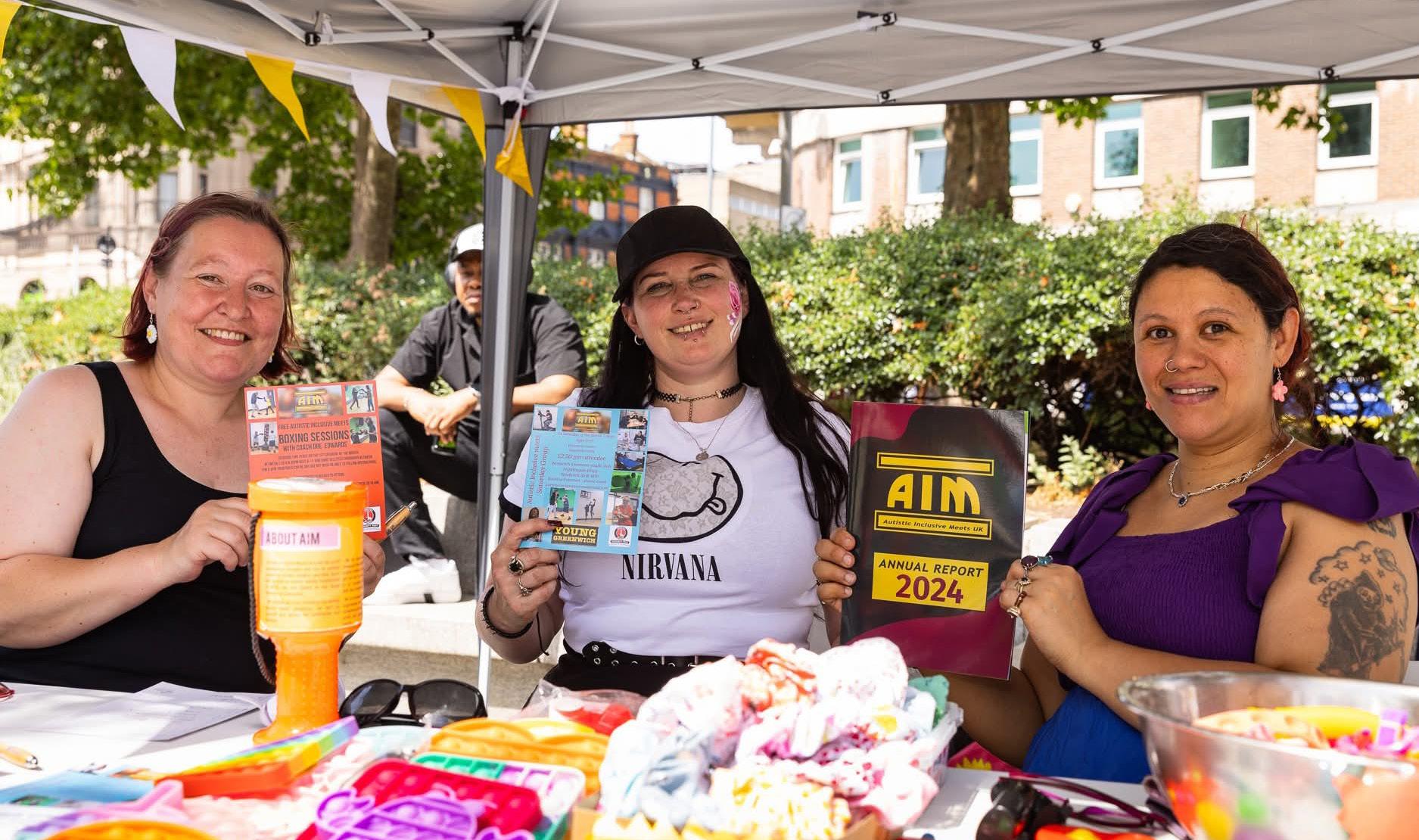
and understood, where positive images of autism are propagated and perpetuated,” he adds.
Jemma Whitelock is neurodivergent, and has volunteered for AIM for a year: “I loved how my child could be himself, and that I wasn’t judged as a parent for the things I had been through in the past – that was very important to me.”
There’s a strong sense of solidarity and community that comes from being around people who understand what it’s like to be autistic, and the barriers and discrimination that autistic people can experience. “AIM is mine and my children’s safe place,” says Jemma. “AIM really is a wonderful place to be a part of, as a neurodivergent mum to neurodivergent children. This has made me so much more confident as a parent and person.”
After experiencing the value of their work first-hand, Jemma now regularly volunteers with AIM. This includes everything from supporting a sensory play group to using her professional knowledge from working as a learning support assistant to help parents with things like applying for educational support, and giving advice on tribunals and appeals.
William values how AIM supports all age groups. “Autistic adults are a demographic that’s often forgotten when it comes to autistic people’s services, as people generally think of children when setting up an organisation to support autistic people,” he explains.
Many people are diagnosed as autistic as an adult, and research suggests that there are many autistic adults who haven’t been officially diagnosed. Research from The Lancet Regional Health
Europe, for example, estimated that there are approximately 750,000 undiagnosed autistic people aged 20 and above in England.
“For an adult, it’s a lot to take on board when you’re diagnosed,” says Emma. “There’s a lot of sadness for yourself as a child because you weren’t accommodated properly. And there’s a lot of resentment, a lot of anger, and then selfacceptance. It’s good to have a peer group around you that understands what you’re going through. It’s great for an adult who just hasn’t felt accepted, and to say to them: ‘We’re here for you.’”
Connecting with others like this can be a transformative moment. As Jemma says: “Everyone at AIM understood me and my child. Finally, I wasn’t alone.”
This article follows AIM’s approach of identity-first language, such as using the term ‘autistic person’ rather than ‘person with autism’. While we typically use personfirst language elsewhere in our publication, we've respected AIM's preferred terminology throughout this piece.
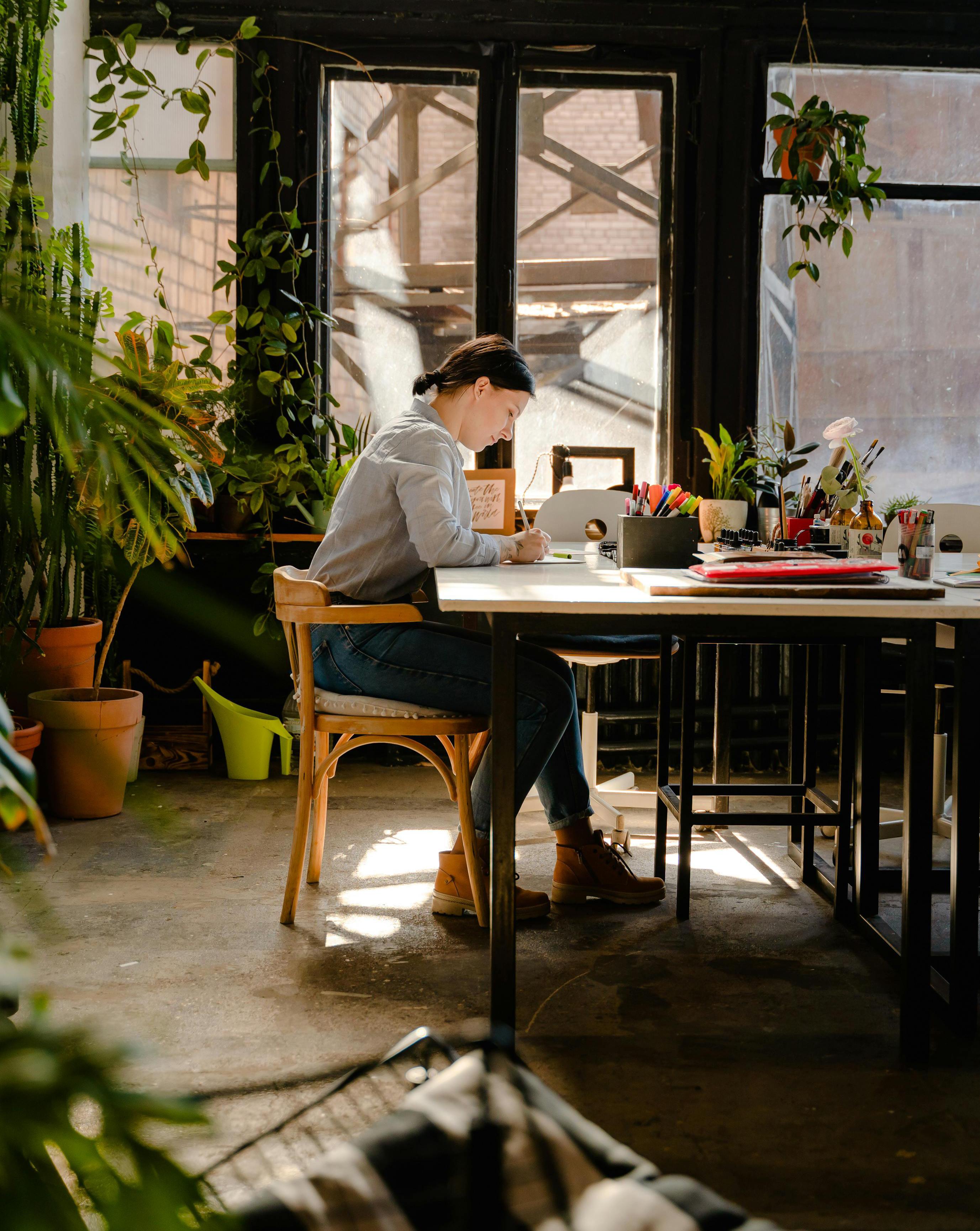
Poets don’t draw. They unravel their handwriting and then tie it up again, but differently
Jean Cocteau
Mindfulness could be a real walk in the park. Simply put your best foot forward…
Writing | Samantha Redgrave Hogg
If, like me, you’re running low after the extra demands of the summer months, you may feel reluctant to get out and about as the mistier mornings and earlier sunsets signal the start of autumn. But, perhaps, the latest movement trend will be just the ticket. From silent walking to soft hiking, walking trends are, quite literally, on the up. However, one hot topic at the summit of the social media feed is known as the ‘colour walk’.
So, what is it about this trend that continues to make waves, and how can a colour walk be beneficial to our wellbeing?
What is a colour walk?
While a typical stroll might be accompanied by distractions, from scrolling on your phone to a podcast in your ears, or doublechecking a maps app for the best route, a colour walk is full of intention – think of it as a type of walking meditation. The idea is
that you select a colour that feels right for you at the beginning of your walk, and then seek to notice that chosen colour when you’re on the move. For example, if you go for red, you may spot a burnt crimson leaf, a stop sign, a pebble with a reddish hue, or a letterbox.
Now, we all know walking is good for us. Not only does it improve our immune system, but it can also be good for our mental health, with a 2019 study in JAMA Psychiatry noting that physical activity is associated with a reduced risk of depression. It can even provide us with some solid shut-eye. For example, adults who walk for longer during the day sleep better at night, as evidenced in a small, observational study published in Sleep Health in 2019.
The benefits of a colour walk
Walking has many physical benefits, that’s undeniable, but it’s the meditative aspect of a colour walk that’s so impactful. Even while walking, we may still experience negative thought patterns or worries about the day. However, when we set an intention to focus on something specific, and, in this case, a colour, we automatically root ourselves in the present moment, coming away from the inner chatter. And it really is the simplicity of the here and now that contains the magic. Mindfulness meditation, which is any practice that involves focusing the mind to achieve a state of calm awareness, has numerous proven benefits, as noted in the medical journal Cureus in 2023, including improvements in immune, mental, and physical health. According to a meta-analysis of 45 studies, published in the Journal
But what is it about spotting a specific colour while stretching our legs outdoors that is sparking people’s curiosity? >>>

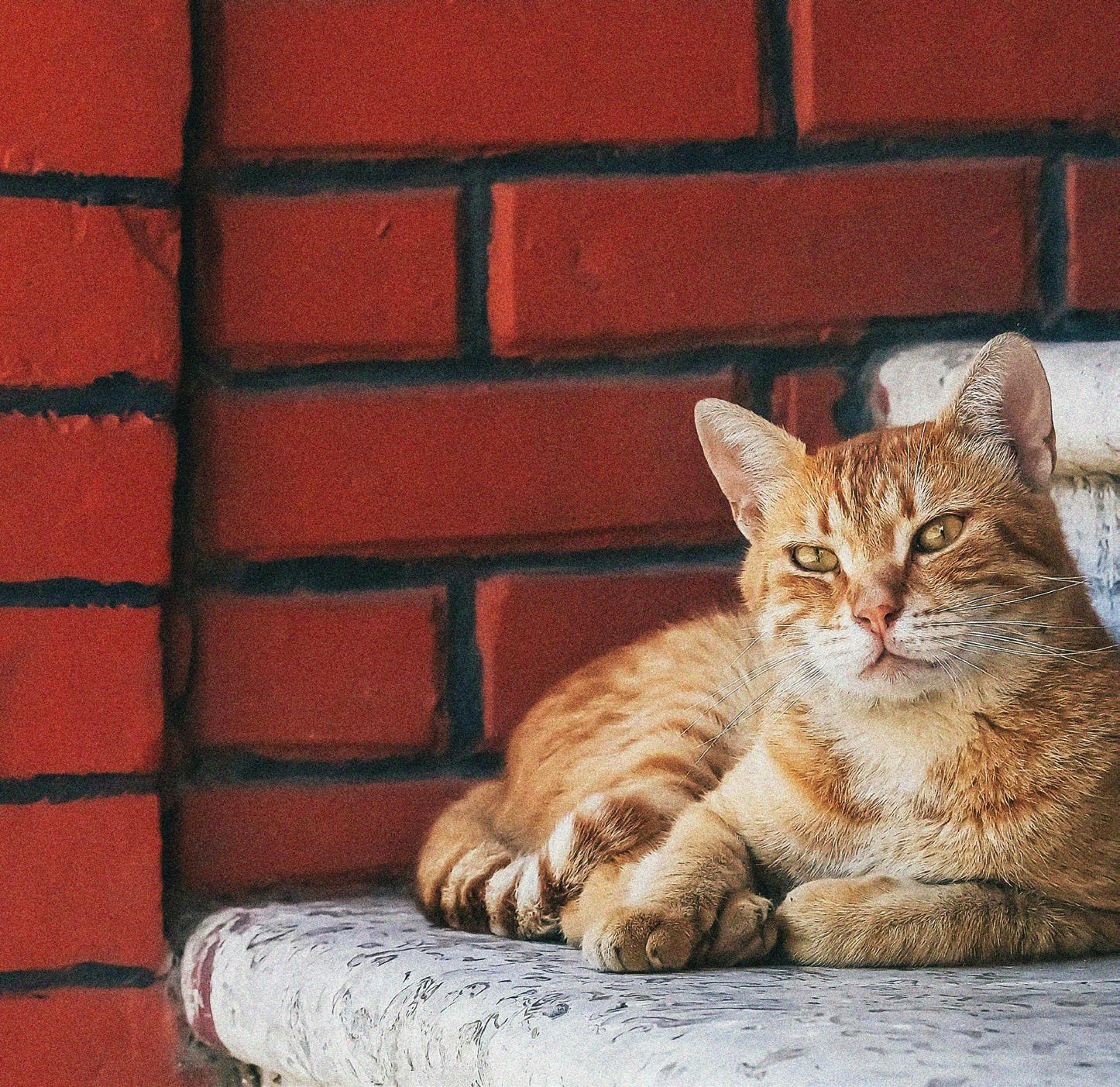

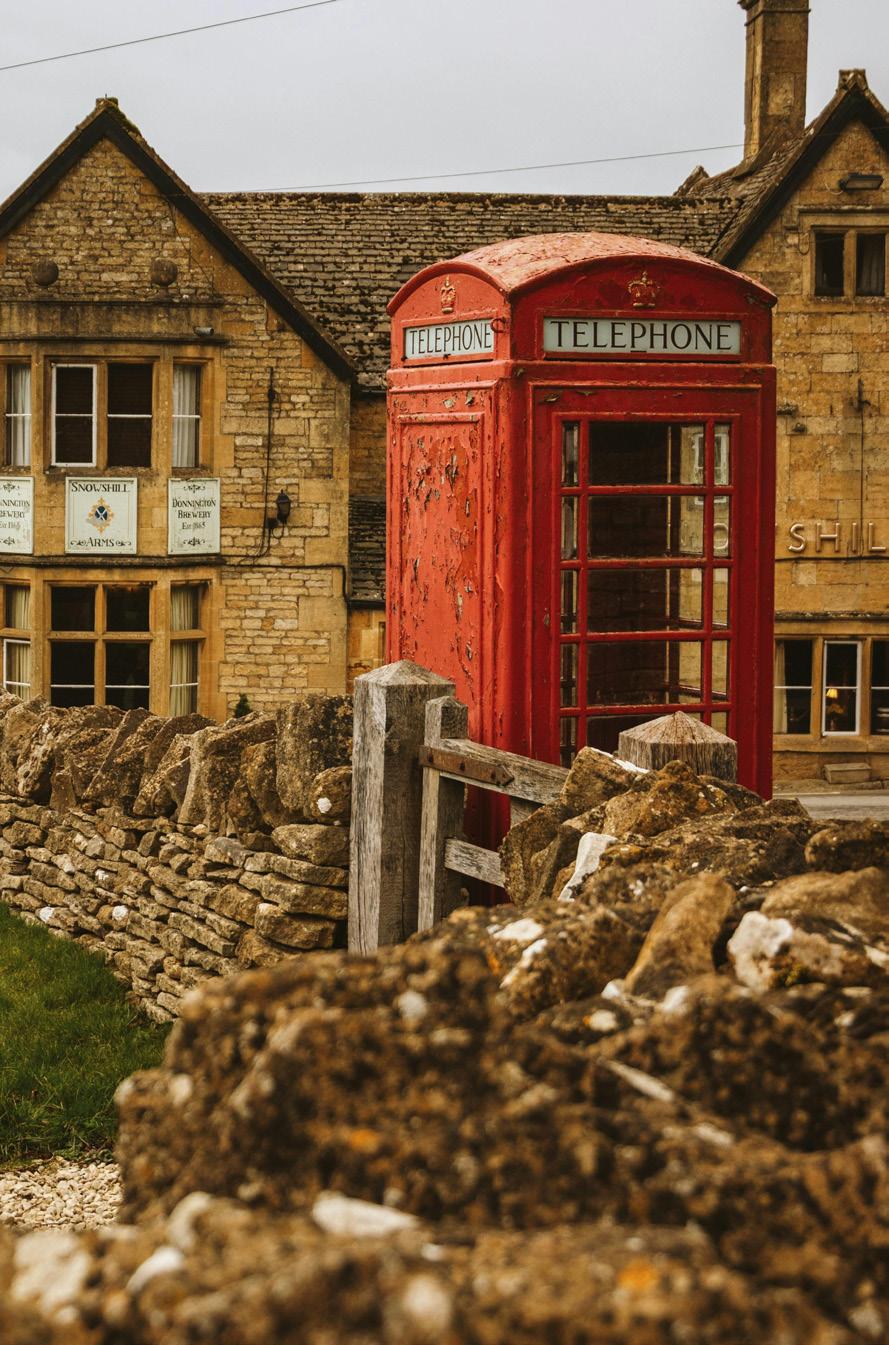
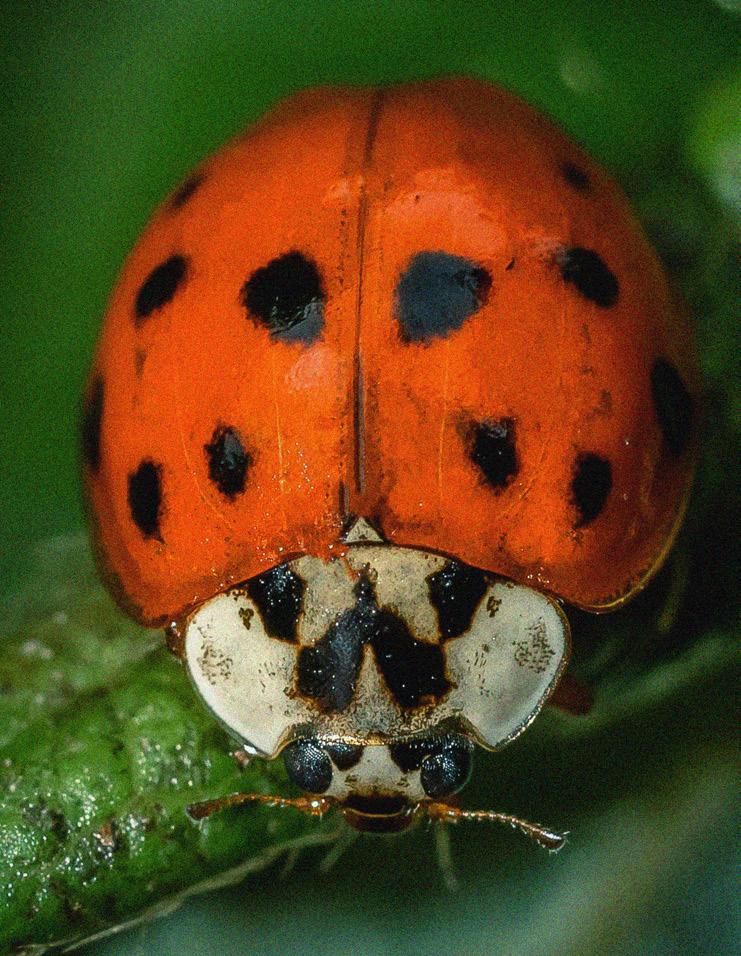
When we set an intention to focus on something specific, and, in this case, a colour, we automatically root ourselves in the present moment, coming away from the inner chatter
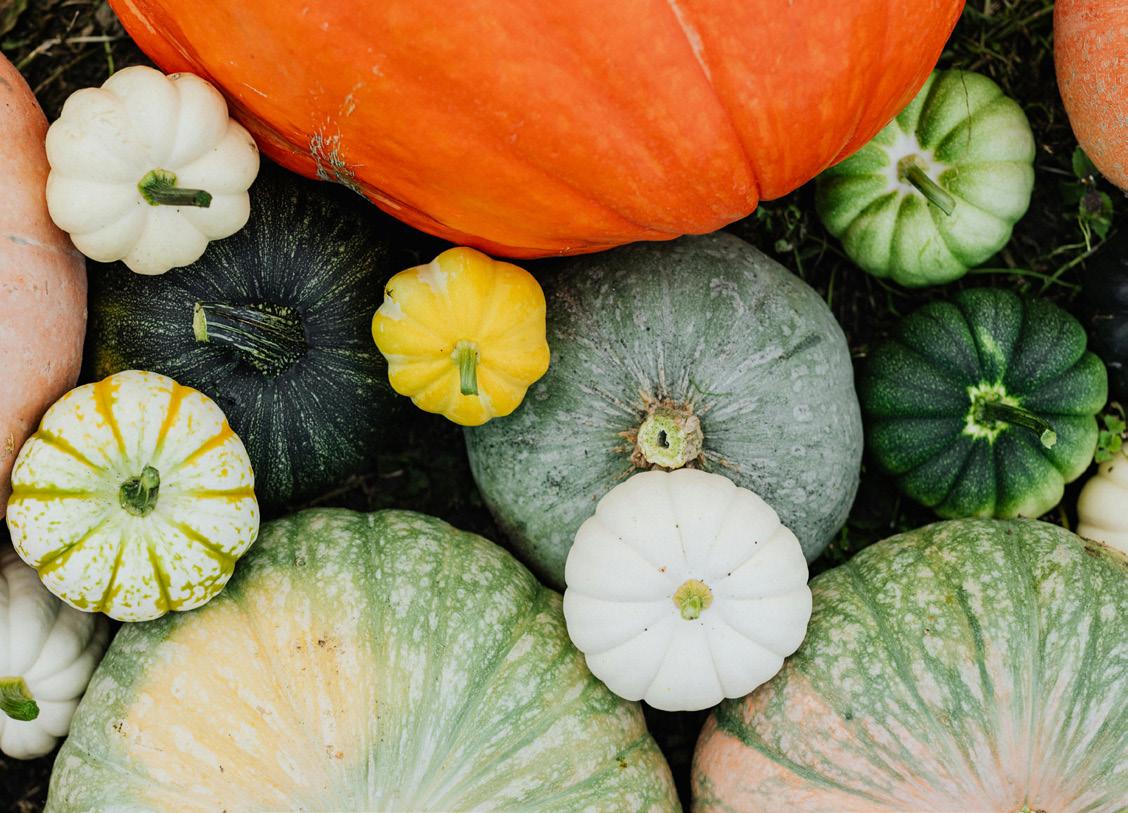
of Psychiatric Research, meditation can improve markers of stress, such as blood pressure, heart rate, and cortisol, which is our stress hormone.
Additionally, a 2023 study on mindful walking, published by Explore, noted that walking outdoors improved sleep and mood among university students. So, being mindful
when walking can really add something to the usual runaround.
Taking your first steps
You know it’s good for you, but how do you get started? Before you decide to go out on your walk, you may like to wear your colour of choice as a lovely way to honour, or be present with, your mindfulness intention. Then, as you take your first steps outside, start to notice it. That colour may be striking and easy to spot (remember the red letterbox), or, sometimes, it can be more inconspicuous, requiring you to keep your eyes peeled for that handpicked hue.
As you pay more attention to your environment, you may find yourself connecting to your surroundings in a way you hadn’t previously. We can all rush around from one place to another, without giving a second thought to what’s going on around us. However, a colour walk helps us focus on something other than what’s going on inside our heads, allowing us to see the ‘same old’ in a new light. And what’s lovely about the practice is that you can carry it out anywhere. Even in more built-up areas, things are more colourful than you first think. It’s simple, too; when you find
your thoughts starting to wander, gently bring yourself back to pinpointing that colour. You may even like to say the colour in your mind as you notice it, to enhance the feeling of presence and connectedness. And for those who might struggle with sitting meditation, this practice may feel more accessible, and even fun.
This allows us to see the ‘same old’ in a new light
Did you know that certain colours can impact our mood? Colour psychology is the study of how colours affect our behaviour and mood, such as our emotional reactions. Some of this evidence is anecdotal, however, a 2020 study published in Psychological Science found that people associate specific colours with particular emotions, including orange with joy, and pink with love. Indeed, the colour pink seems to be popular when diving into the sea of TikTok clips on the subject, with many claiming they find the practice both grounding and uplifting, and some sharing how it helps with their commute to work or eases their anxiety.
With that in mind, a way to elevate your colour walk could be to match your colour with either how you are feeling, or how you want to feel, that day. One route allows you to accept and connect to your emotions, and the other is a means of taking control of them, almost like an affirmation of intention. With the latter, if you’re feeling down you might opt for yellow or orange, while when agitated, the calming shades of green or blue may be what the moment calls for.
Let the time of year guide your walk, too, by spotting a colour that matches the season, such as green with spring, yellow with summer, orange with autumn, and blue with winter, is also a popular social media favourite. In my view, anything that leads us down a path to witness the beauty of the outside is a good thing, whatever the time of year, and if that enables us to see the world through new eyes, I’m all for it. That said, I’m off on a colour walk – on the lookout for brown, I think, for warmth and strength.
Samantha Redgrave Hogg is an author whose book, ‘Flow: Self-care sessions for your menstrual, lunar, life and seasonal cycles’, is available now (Watkins Publishing). Visit wombonthebroom.com for more.

Welcome to Anxiety on Your Mind, the series where we explore the reality of living with anxiety. In this edition, Wendie Ralphs, 56, from Leicester, shares how she navigates menopause-related anxiety
Writing | Wendie Ralphs as told to Fiona Fletcher Reid
As a young person, I don’t think I was particularly anxious.
A little bit of social anxiety, yes, but it wasn’t until my late 40s that it started to ripple out into other areas of my life, and became a pressing issue.
At 48, my world turned upsidedown. I experienced a huge loss when my daughter died unexpectedly. Around the same time, I had my last ever period, and was eventually confirmed as menopausal.
During that timespan, I was so overcome with grief that I barely registered the change in my periods. Six months later, I spoke to my GP and decided to start hormone replacement therapy (HRT). It helped immensely with regards to body aches, brain fog, and ability to focus – but to this day, I still need to be proactive to manage the heightened anxiety.
I’m a therapist with more than 25 years of clinical experience, so, thankfully, I have plenty of strategies in my toolkit to help me along the way. For example, earlier this week I was attending
a networking event, which I always dread. But I also know that it’s a feeling I’m willing to work through, because I know the outcome of networking is beneficial for both my wellbeing and my business.
When the dread starts building, I use a ‘reframing’ technique, where I remind myself that it takes time to get to know people, therefore the feelings of discomfort are natural when I’m introduced to a stranger. I’ve learned to trust that, at every networking event, I’ll get to a point where I feel comfortable and relaxed. I also remind myself that I always feel good afterwards. It’s not a sense of relief that it’s over, but instead, I actually feel my mood is boosted as a result of socialising with others in real life. That helps a lot.
Another thing that triggers my anxious feelings is writing, because I am undiagnosed dyslexic. Trying to get my words to ‘make sense’ is such a frustrating process that I end up procrastinating a lot. When this cropped up a few days ago, I went
for a quick walk to get out of the house, and it made a massive difference. There’s something about the physical movement, combined with forward motion, that allows my brain to gently focus on a specific task.
By the time I headed back home, I’d found the motivation, and made a little plan in my head to tackle the writing task. I kindly told myself: ‘The minute you go back inside, you’re going to sit down, you’re going to put your timer on your phone for 45 minutes, and you’re going to write.’ This, along with wearing headphones to minimise distractions, really helped!
Like a lot of people at the moment, money is a source of anxiety for me. This week, I had an unexpected bill which made me panic. In just a few minutes, I went from feeling calm and stable, to wondering if I would have enough to cover my outgoings next month. My income has gone down recently due to various changes, so I began to worry, which then led to me questioning my abilities. I really believe that

what we focus on grows, so I knew that if I continued to focus on my perceived ‘lack’, then things would likely get worse. Instead, I reminded myself that I have been through far worse than this, and looked back on all the things I’ve achieved – even when it seemed impossible. Looking back to find the evidence of past wins helped me see my own capabilities and inner strength. It led me to think more practically, and consider
what financial changes I could make, and what plans I could action to bring in new business. Within minutes, I managed to halt the spiralling, and channel my energy into positive action. That said, I’m still a big fan of taking things slowly when I can. The weekends are sacred to me, and I try to keep them as open as possible, never making too many concrete plans. I find having the freedom to simply
wake up and connect with how I truly want to spend my time is powerful. Sometimes, I want to paint, other times I want to meditate, or read a book. Often, I’ll reach out to a friend. Prioritising time with the people I love is so important. Especially during menopause – talking openly with friends about this experience has been so eyeopening, and so comforting, to know that I am not alone.
How can I cope with corporate burnout?

Psychotherapist Deborah Buxton answers your questions on mindfulness for office workers
Read more about Deborah on the Therapy Directory.
How can mindfulness help with burnout at work?
AMindfulness can be a powerful tool to manage and prevent work-related burnout. By fostering present-moment awareness, mindfulness helps individuals break the cycle of chronic stress and reactivity. Mindful breathing focuses the mind on the present, and curbs future-based overthinking – a major contributor to stress. Body
QWhat are some quick mindfulness techniques for a busy work day?
AEven on the busiest days, mindfulness can be easily woven into your routine to reduce stress and boost focus. One simple technique is mindful breathing. Take one minute to
scans encourage regular checkins with the body, making it easier to notice where tension is held, before it leads to physical or emotional exhaustion. This awareness allows early intervention before stress escalates.
Mindfulness also nurtures self-compassion and emotional regulation, helping people respond to work challenges with greater clarity, calm, and balance. As the mind becomes
less cluttered by pressure and rumination, space is created for thoughtful reflection. Over time, consistent mindfulness practice can help to build resilience by enhancing one’s ability to stay grounded and focused, even in demanding environments.
Ultimately, mindfulness offers a vital pause to recharge, supporting long-term wellbeing in today’s high-pressure, fastpaced work culture.
inhale deeply through your nose, hold for a few seconds, and exhale slowly. This calms the nervous system, and brings you back to the present.
Another is the ‘5-4-3-2-1’ grounding exercise: notice five things you see, four you can touch, three you can hear, two you can smell, and one you can taste to anchor yourself in the moment.
Mindful walking, even for a minute between meetings, helps reset your mind. Try to pay specific attention to the sensation of your feet touching the ground. These small pauses act like mental refresh buttons, helping you stay centred, productive, and resilient, no matter how hectic things get.
you find the help you need
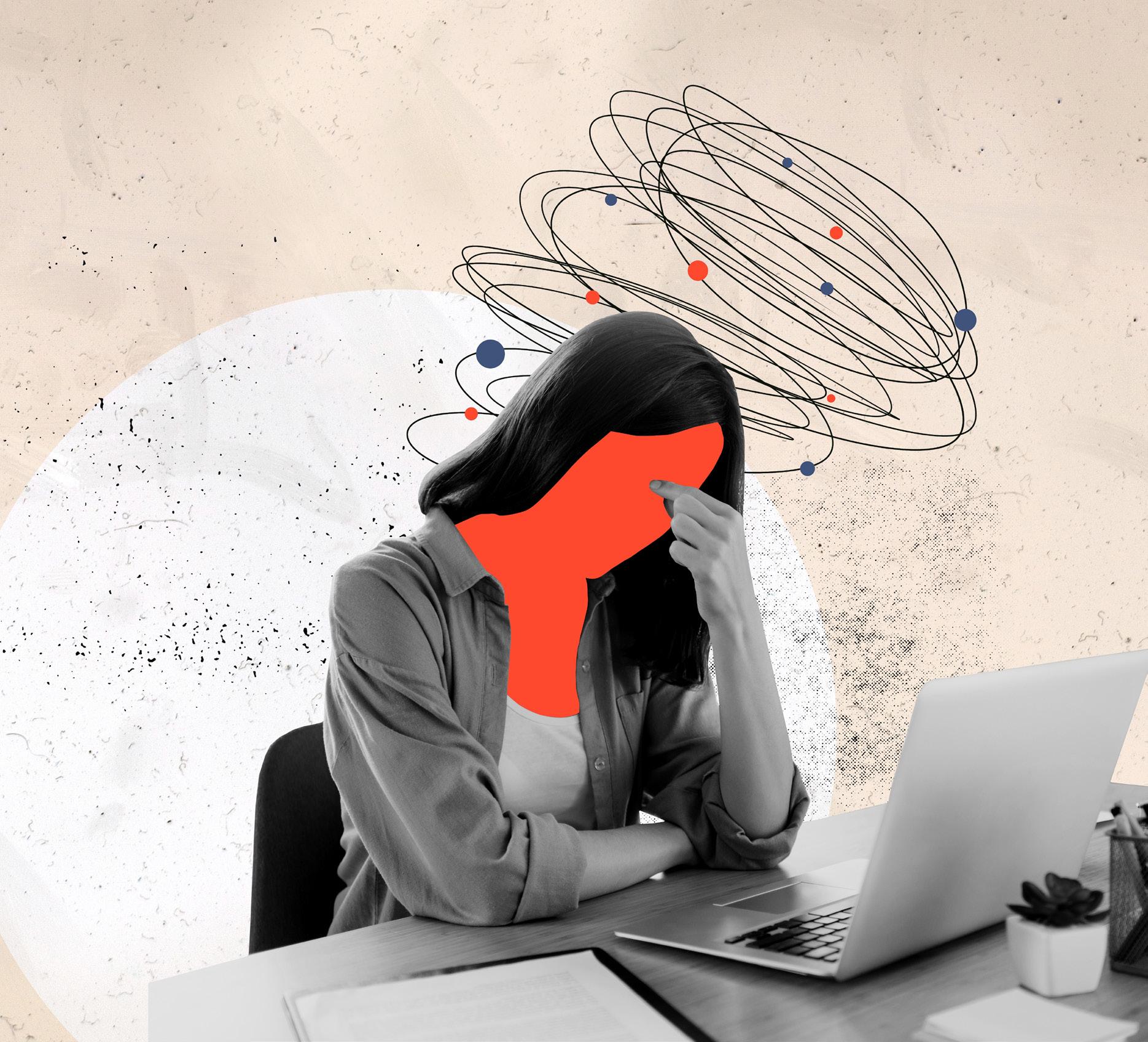
QHow can someone tell if mindfulness is really helping their stress and burnout?
ABenefits often appear subtly at first, but can make a big difference over time. One sign it’s working is increased emotional awareness. You may notice you’re less reactive in stressful situations, and more able to pause before responding. Improved focus is another key indicator; tasks might feel more manageable, and distractions less overwhelming. You may also experience better sleep quality,
reduced physical tension, or fewer headaches – signs your body is responding to lower stress levels. Day to day, people often feel a greater sense of calm and clarity, even during busy periods. You might catch yourself taking a deep breath instead of rushing, or setting healthier boundaries without guilt. If you find yourself becoming more present, patient, and compassionate, both toward yourself and others, these are strong signs that mindfulness is helping. Ultimately, the benefits show up not just in how you feel, but in how you respond to life’s daily demands.
Top tips for making mindfulness part of a hectic daily routine
1. Start small – begin with just four to five minutes of mindful breathing each morning. A short pause can set a calm tone for the day.
2. Whatever task you are doing, do it mindfully. Notice your mind wandering off to thoughts of stress or other tasks, and bring it back to the one you are doing. Do one thing mindfully at a time.
3. Set mindful reminders. Use phone alerts or sticky notes to prompt short check-ins. A deep breath or body scan can reset your focus in seconds.
4. Take intentionally mindful breaks. Step away from your desk for a few minutes to stretch or walk, paying attention to your body and surroundings. Body scan and check where you are holding tension.
5. Reflect briefly at night. Before bed, recall one moment from the day when you felt grounded or grateful.
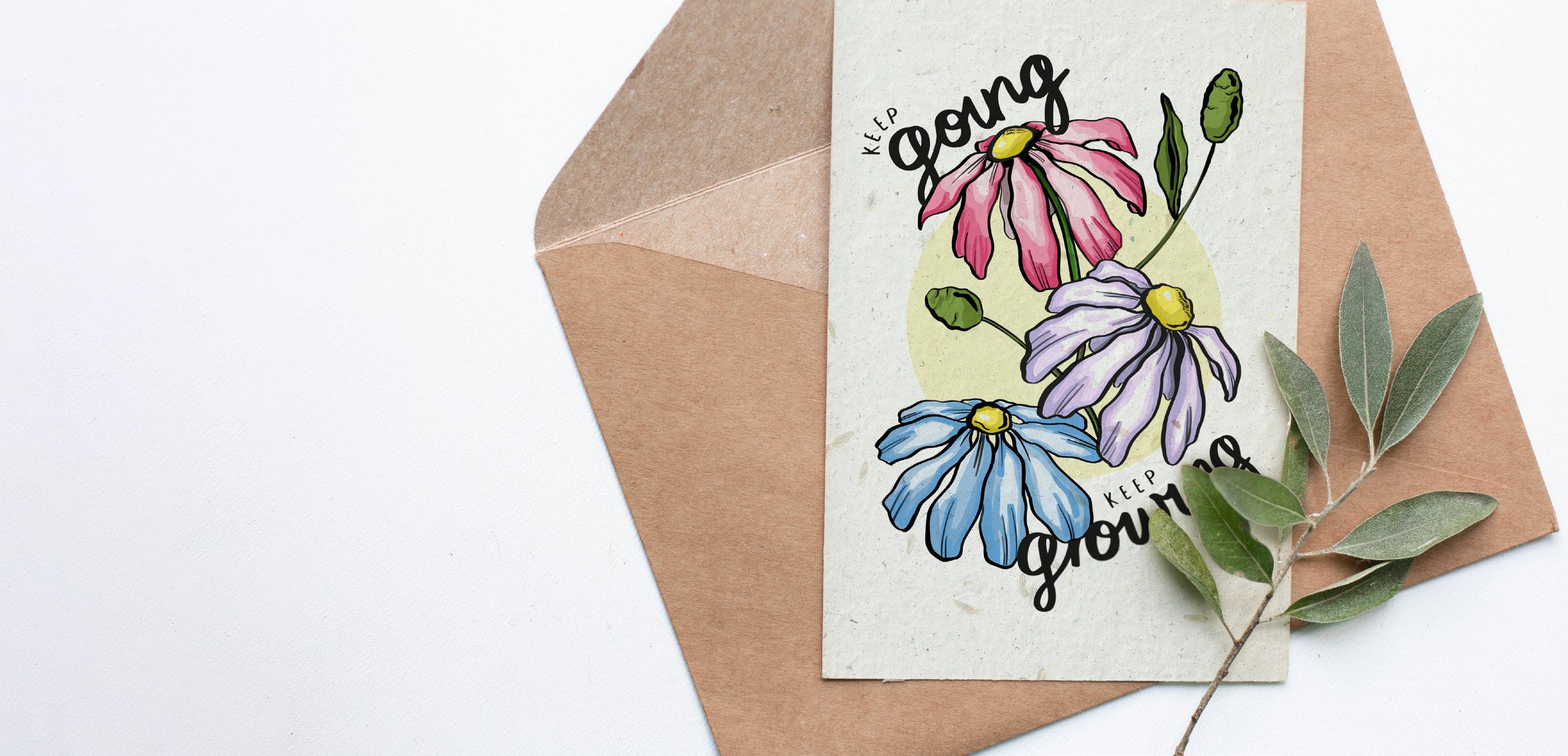
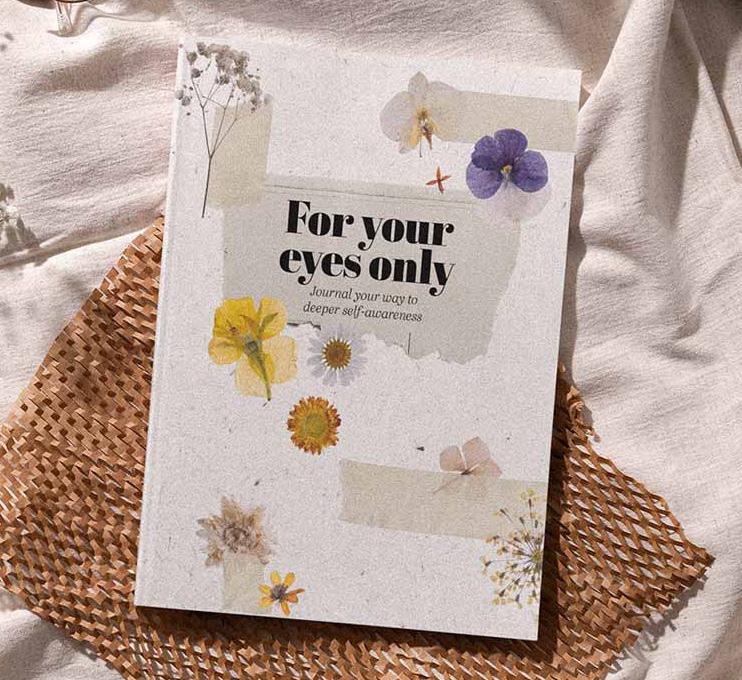
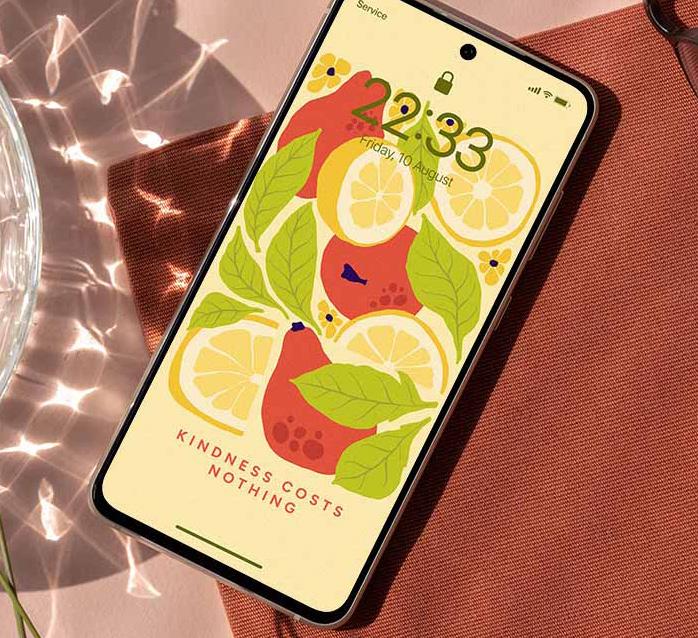
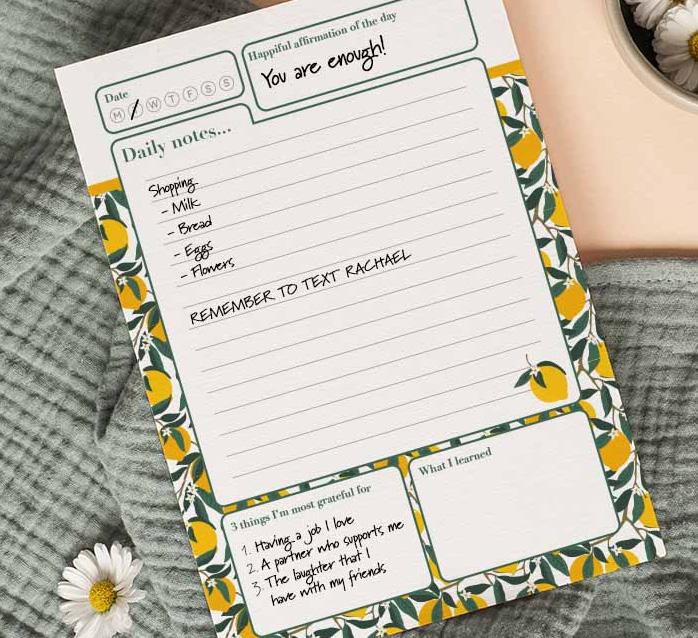
• Enjoy guided journaling booklets, seeded affirmation cards, and beautifully designed notebooks – completely free!
• Award-winning, psychotherapist-reviewed and approved content
• Discover fascinating features, science-backed practical tips, inspiring stories, and expert advice
• Print-exclusive guided journaling pages in each edition
• You’re in control, so cancel any time
And remember, the longer you subscribe, the more rewards you’ll receive. So roll with it, and enjoy the monthly delivery of positivity as a reminder to make some much-needed time for you.
Happiful monthly rolling subscribers now receive thoughtfully crafted gifts at renewal milestones, meaning that committing to your wellbeing is truly rewarding – in more ways than one! Join today at shop.happiful.com
Writing | Rosie Cappuccino
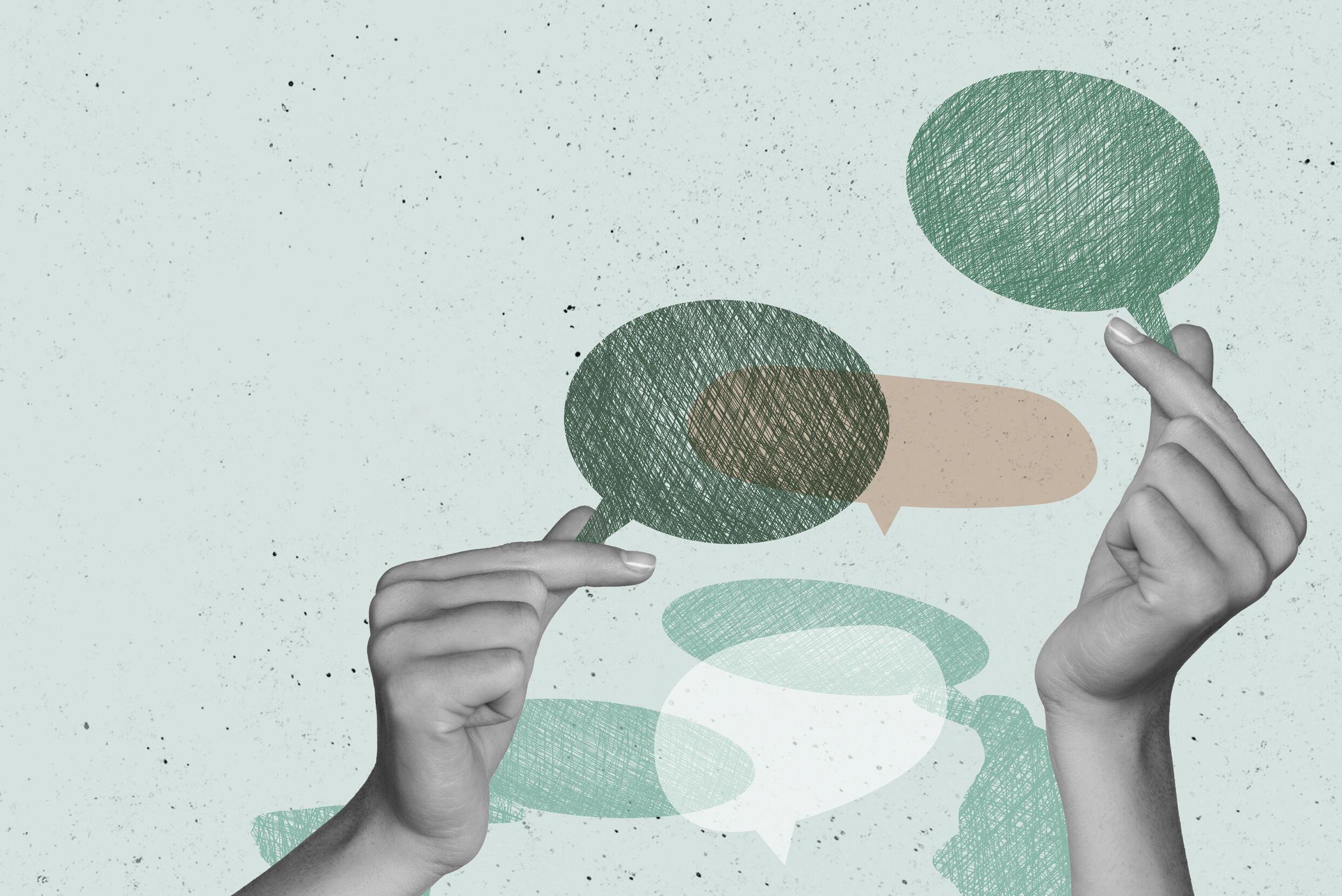
Opening up to a friend about your mental health is to be encouraged – it takes a lot of bravery to be really honest and to put yourself out there, which is exactly why it can feel daunting. That internal voice might question: ‘What if they see me in a negative light? What if they feel like I’m burdening them? What if it changes the friendship?’ The desire to open up can also feel conflicting. There might be a part of you seeking more honesty within friendships, perhaps a longing to feel more authentic. On the other hand, another part may be caught up in fears about how such openness could land within the relationship.
If you’re feeling a push and pull like this, then you’re not alone. A 2025 Time to Talk study revealed that 34% of people surveyed in the UK said they would “prefer to not talk about their mental health than risk an awkward conversation”. And this is even more prevalent in youngsters, rising to 45% of 16 to 24-year-olds.
Individuals might feel compelled towards openness for many reasons. Being honest about our mental health problems means more aspects of who we are can be ‘seen’ by our friends, not just the parts that are generally ‘on show’ to the world.
This process of becoming more visible can be liberating – even healing – if we have not been fully seen before. As psychotherapist Caroline Fearns points out, these kinds of conversations can “ease the isolation that so often comes with mental health difficulties”. Secondly, being more candid about our mental health fosters deeper, more meaningful connections. “Friendships often deepen when we allow ourselves to be vulnerable and authentic,” Caroline explains. “Being open with a friend also gives your friend permission to do the same.” Open conversations may allow us to ask for what we need within friendships, and open doors for these needs to be met. >>>
Why does opening up make us feel so vulnerable?
According to the 2025 Time to Talk survey, the most common barriers to speaking about mental health were a “fear of burdening others with struggles”, a “fear of being judged or labelled”, and “feeling like no one will truly understand”. It’s natural to worry how speaking about mental health problems might change the nature of the friendship. For example, if your friendship is built on a shared interest or humour, it might initially feel unusual to stray into conversational territory that’s more personal or sensitive.
“It’s completely normal to feel nervous about opening up to a friend about your mental health,” Caroline says. “Something I see often with my clients is the fear around how it will be received – many worry about being a burden, or making their friend feel uncomfortable.”
For dealing with this fear, Caroline recommends flipping the perspective. “How would you feel if your friend opened up to you? Most people would want a friend to feel able to talk, and would be honoured that they trusted them,” she adds.
Caroline advises choosing someone you feel emotionally safe with. Sometimes we know instinctively who to trust with the more complex or painful parts of our life. But, if it’s less clear, then you may want to reflect on questions such as:
• Who in my life is nonjudgemental of others?
• Who listens attentively, without jumping to conclusions?
• Who seems open to different perspectives?
How a friend speaks about others, or sensitive topics, can help you sense how they might respond. Are they critical and closed-minded, or warm, respectful of difference, and keen to learn?
Before easing into a conversation, think about which mode of communication would feel most empowering, as each has a different ‘vibe’.
If you would find comfort in seeing a friend’s face and body language, and you prefer spontaneous responses, then faceto-face might suit you best – either in person or via video call. Alternatively, if you prefer asynchronous communication, more processing time between responses, and writing ‘flows’ more than speaking for you, then messaging might make you feel more comfortable. Digital and/or asynchronous communications are just as valid as in person or face-to-face ways of expressing yourself, so don’t let anyone shame you for your communication preferences. No matter how you communicate, it’s essential to choose a time when nobody feels rushed, and a location where you won’t be interrupted.
Metacommunication –communicating about how you’re

Caroline Fearns is a psychotherapist helping women and mothers cultivate self-compassion. Find her profile on the Counselling Directory.
communicating – can provide an additional layer of emotional safety. “I might find this hard to talk about, but I would like to try” or “Can I tell you about how I’ve been feeling lately?” are both examples of metacommunication. You may want to use metacommunication to start (or finish) a conversation, check a friend’s current capacity for a chat, share how vulnerable talking makes you feel, and ask for what you need most. For example:
• I’ve had a few things on my mind that I would love to chat with you about.
• Would you be open to talking about [insert topic] with me?
• This conversation has been intense for me; could we pause and continue another day?
• I’ve never spoken about this before with a friend.
• This is new for me. I might need some extra time to find the right words.
• I’m grateful for the chance to speak about this without judgement.
Given how nuanced mental health problems are, finding the words that ‘fit’ your lived experiences can be complex. Acknowledge that to yourself, as well to others.

34% of people surveyed in the UK said they would ‘prefer to not talk about their mental health than risk an awkward conversation’

As Caroline notes, sharing “parts of yourself that feel vulnerable takes courage. Go at your own pace, share when you feel ready, and only as much as feels right for you.” Think of talking about mental health like peeling layers of an onion, rather than ripping off a plaster. The right person will be there for another conversation.
Sometimes a conversation might not go to plan – perhaps you didn’t get the response you were hoping for, or weren’t able to fully express what you wanted to say. Understandably, this can lead to heightened feelings of disconnection, embarrassment, or even shame.
Try to be gentle with yourself, if any of these uncomfortable feelings arise. “If a friend responds awkwardly or is dismissive, this usually reflects their own discomfort or limitations,” Caroline notes. “Their response doesn’t mean you did anything wrong.” Trusting what Caroline refers to as the “pull to talk” is a valuable act. “It’s a statement that you’re not going to hide or carry shame for struggling. If one friend can’t meet you in that place, don’t give up,” Caroline says. The people who are willing to listen and support you are out there – even if they take a bit of time to find.
Rosie Cappuccino writes and speaks about her life with BPD, and is the author of ‘Talking About BPD: A Stigma-Free Guide to Living a Calmer, Happier Life with Borderline Personality Disorder’. Visit her blog talkingaboutbpd.co.uk

When is spontaneity a sign of something more? Explore the connection between impulsive behaviour and certain mental health conditions, along with its impact, and when you should seek help
Writing | Bonnie Evie Gifford
Alittle spontaneity can be a good thing, can’t it? We all act on impulse from time to time, but did you know that impulsivity can be a common symptom of many different mental health conditions? Acting without thinking – for example, buying things on a whim, or blurting something out before you think it through – doesn’t just happen in a moment of ‘weakness’ or carelessness; it can be a symptom all on its own.
“Impulsivity is a surprisingly common symptom. It can often show up as a symptom within broader mental health conditions, such as bipolar disorder and borderline personality disorder, or even during intense anxiety or trauma responses,” explains UK Council for Psychotherapy accredited therapist Tina Chummun. “It’s not just about making rash decisions; it can be your nervous system responding rapidly without your brain’s slower, logical processing getting a look-in.”
Other conditions that can be linked with more impulsive behaviours include those with substance use disorders, people who have experienced a brain injury, or neurodegenerative diseases like Alzheimer’s disease, people with antisocial personality disorder (ASPD), or impulse control disorders like trichotillomania or kleptomania. Impulsivity can also be a characteristic of those who are neurodivergent. Those with attention deficit hyperactivity disorder (ADHD) may act more impulsively, make hasty decisions, or engage in what can be seen as risky behaviour.
What are the characteristics of impulsivity?
Those who are impulsive might face judgement from others, sometimes being described as ‘unstable’, ‘unpredictable’, ‘rash’, or ‘hot-headed’. This impulsivity can lead to a sense of instability, which can cause people to feel like they aren’t good enough. In turn, this can result in struggling with
unstable emotions, behaviours, or relationships. You might be less likely to consider the consequences of your behaviours, meaning you may develop unhealthy ways of coping with how you’re feeling. It’s important to remember that impulsive behaviour alone isn’t a diagnosis, and doesn’t mean that you might be experiencing a mental health condition. But it’s worth keeping in mind that if repeated impulsive behaviour starts to interfere and have a negative impact on your life for an extended period of time, it could be a sign to seek help.
Compulsive behaviour vs impulsivity: what’s the difference?
When you act on impulse, you do so without thinking or recognising that your behaviour may be out of the ordinary, or may have negative consequences. A compulsion, on the other hand, is when you realise a behaviour is abnormal, but cannot stop.

While the exact causes aren’t fully understood, it’s believed that a number of different factors can contribute to impulsivity, including those that are environmental, genetic, and psychological. As well as being a symptom of some mental illnesses, impulsivity can stem from traumatic experiences, particularly during childhood when we develop our selfregulation skills.
“When someone’s in survival mode, their prefrontal cortex (the reasoning and planning part >>>
of your brain) takes a backseat, and the amygdala or limbic system takes over. That’s your neurobiology, not bad behaviour. Your brain-body’s intelligent self-defence mechanism means you act fast, and henceforth impulsively,” Tina explains.
“I often see impulsivity as a nervous system that’s been hijacked, usually due to unprocessed stress, trauma, or unmet emotional needs. It’s your body’s way of trying to feel something quickly, escape discomfort, or regain a sense of control and safety in a perceived threatened time, even if it’s only momentarily.”
The way impulsivity presents can really vary. You might find yourself constantly starting over, turning over a new leaf, or starting (and quitting) new hobbies, groups, or activities. Maybe you have trouble staying still, sticking to plans, or find yourself cancelling things last minute. You could find yourself having frequent emotional outbursts, escalating confrontations, or jumping to conclusions. You might have a problem with overspending, oversharing, overindulging, or even overapologising.
Being impulsive can significantly impact you, and those around you. “For the individual, there’s often a cycle of relief followed by regret. What felt like a quick fix can now leave you feeling like an emotional mess,” explains
Tina. “Relationships suffer when impulsive behaviour starts to look like unreliability, recklessness, or even selfishness, when in truth, the person is often wrestling with a dysregulated, chaotic, and overwhelming brain.
“From a neurobiological point of view, it’s exhausting. Your brain’s dopamine reward system gets overstimulated, creating a cycle of seeking quick hits of validation, excitement, and relief without long-term satisfaction. Over time, this can lead to burnout, chronic stress, and damaged relationships. It can also compound mental health conditions like anxiety or depression when people start to internalise their impulsivity as failure or shame.”
Once you’ve learned to start spotting the signs of impulsivity, how can you start to challenge and change these behaviours?
“One of the simplest and most powerful things is to try to journal when your impulsivity happens. Reflect on those moments so you can work on your awareness of it,” Tina suggests. “Then, practise pausing when you catch yourself being impulsive. It sounds basic, but pausing is a skill rooted in neuroplasticity. It helps slow your body, and stay calm from trauma responses.”
Therapy can be another option. Working with a therapist can help you figure out the underlying cause of impulsive behaviour, spot the warning signs, and know how to help change it.

Pausing is a skill rooted in neuroplasticity. It helps slow your body and stay calm from trauma responses
“It’s rarely just ‘poor selfcontrol’,” Tina says. “More often than not, it’s a result of past trauma, chronic stress, emotional suppression, or unmet neurodiverse needs. If impulsivity is interfering with your relationships, self-esteem, finances, or your day-to-day wellbeing, it’s a clear sign it’s time to seek help. There’s no shame in seeking professional support. It’s about building awareness, and working with your brain.”
Impulsivity may feel overwhelming, but it’s also something you can learn to manage. With small, consistent steps and the right support, you can create space between reaction and response. Whether through journaling, therapy, or simply learning to pause, change is possible.

Tina Chummun is an accredited psychotherapist and trauma specialist. Discover more on the Counselling Directory.
Discussing cancer with children can feel overwhelming, particularly when you’re still processing the news yourself. If you, or someone you know, is confronting the reality of this, here are some simple ways to help children cope better with the news
Writing | Samantha Redgrave Hogg
How do you reveal to your child that you have cancer, and that life will be different – at least for a while, anyway? Sharing this kind of news is one of the most difficult things any parent may ever have to do, and, unfortunately, something I have first-hand experience with. There’s no blueprint on how to approach this; you may feel you want to keep things under wraps, tell them everything at once, or feel completely clueless about where to start. So, with that in mind, let’s break down some helpful ways to discuss cancer with children, both openly and with care.
As a parent or guardian, naturally you want to protect your child from worry or pain at all costs, but keeping them in the dark when they feel something isn’t right can heighten their sense of unease, or make them feel left out.
You are, of course, the expert on your child and your home, but, sometimes, children are more resilient than we give them credit
for. A 2023 study, published in JAMA Psychiatry, noted that nurturing relationships with parents during childhood are associated with better mental health, even in the face of adverse childhood experiences. Essentially, children learn to navigate the ups and downs of life when they have strong, loving relationships with their parents. So, explaining to your child what is happening shows that you trust them, and it can even bring you closer together as a family.
Thinking about what you want to say and where you want to say it can be beneficial. Try telling your child somewhere they feel safe to work through their emotions, preferably not at bedtime, as they may feel too upset to sleep, or before school, as they may struggle to concentrate or be away from family the rest of the day. You can even invite a trusted friend or family member to join the discussion as a way of providing emotional support.
Alternatively, if you’re more comfortable handling it alone, you might consider working through some strategies with a counsellor beforehand to help you prepare for the hard conversation. Even saying out loud the word ‘cancer’ before you vocalise it to your child can make things easier to process.
The way you deliver the diagnosis may differ depending on your child’s age. If your child is younger, for example, primary school-aged, you can drop down to their eye level to help them feel more secure and comfortable. Having visual aids, such as a flow chart to outline the different stages of treatment, or playing a ‘pop the cancer bubbles’ game to describe chemotherapy or radiotherapy, can be useful. For older children and teenagers, you can chat while doing something else, like washing up, to take the pressure off the heavy news. This can feel less intimidating for you both, with an activity to occupy them if they
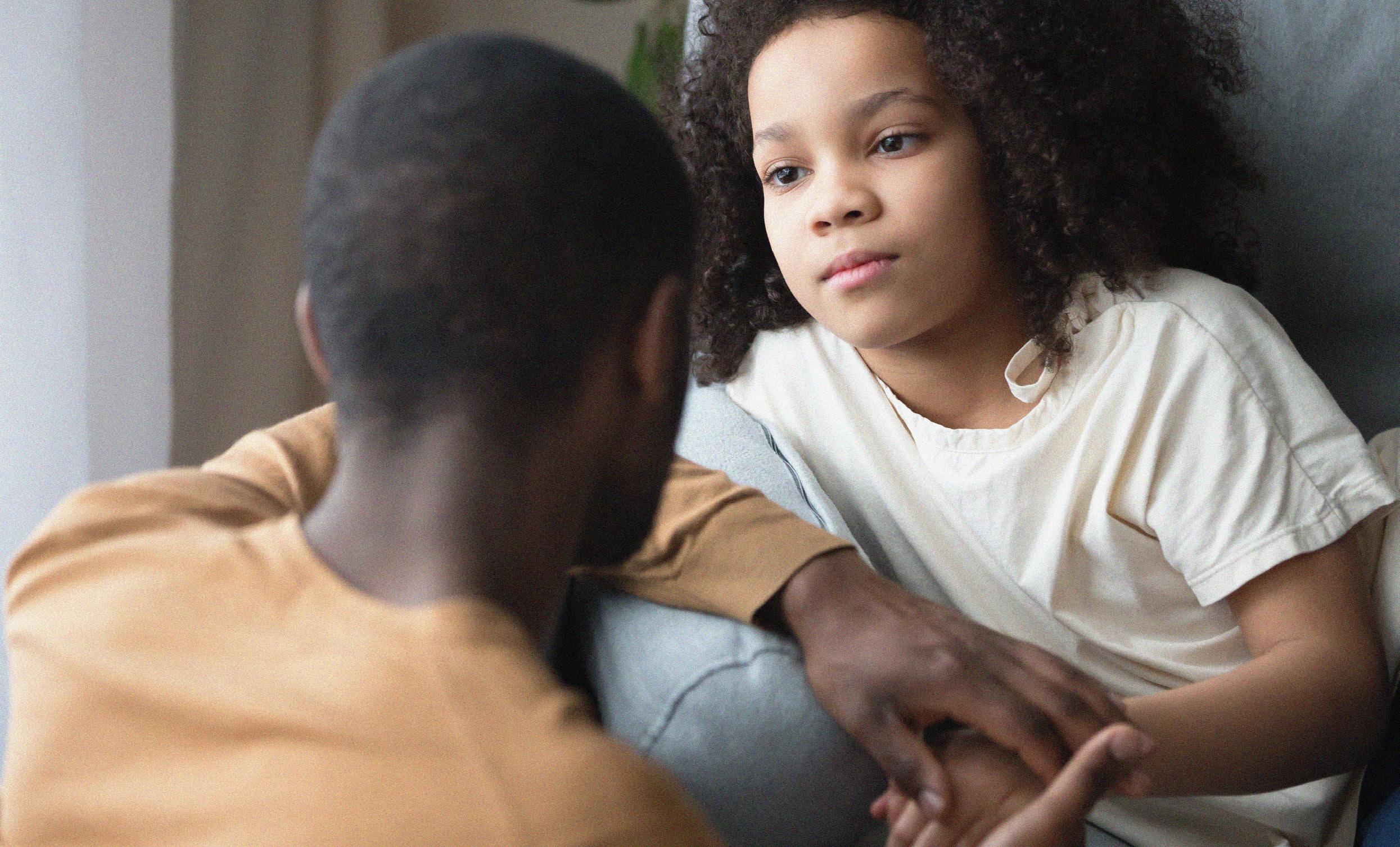
need a moment to process things. It can also be helpful to run through how things might change, and what they can expect, for example if they may need to take on more responsibilities at home as a result of the diagnosis. If you’re concerned about how the repercussions may affect your teenager, it’s worth reaching out to their form tutor or school counsellor to create that muchneeded supportive environment –communication really is key here.
Honesty is always the best policy, so strive to be as straightforward as possible – otherwise, they may misunderstand the situation or, worse, worry they have done something to make you unwell. However, you don’t have to reveal everything in one go, and don’t panic if it doesn’t go quite as planned. Remember that you’re human, and you can take time to find your feet when your world has been turned upside down. Painting a picture of the
recovery process over time, or when you have more test results – as I did after receiving a rare sarcoma diagnosis – may feel more manageable.
It’s essential to be guided by your child’s experience, allowing them to ask questions and receive answers in a way that they can understand, but without the pressure of predicting what’s around the corner. You can start by saying something like: “There are many cells in our body that keep us healthy, but sometimes these cells go wrong, and this can develop into a lump known as cancer.”
Take it one step at a time, and know that it’s OK to say: “I don’t have the answer to that right now.” What’s most important is that your child knows that they will always have someone to take care of them.
You may feel anxious about the question: “Will you die?” In this case, it’s best to consider your answer beforehand, depending on your circumstances. Use books to explain cancer, and provide them with as much accurate information as possible, while reassuring them you’re in good hands, and that it’s not something they could ever catch from you.
My children found comfort in the knowledge that the doctors were doing everything possible to help me feel better. And better I became. But it’s still something we talk about now, two years later, answering questions such as: “Will the cancer come back?” As a parent, my feeling is that we’re on safe ground if we remain open but mindful of our children’s view of the world.

Experiencing your favourite music in person is truly memorable, but we can’t forget the impact the live music industry has on the environment – so what’s being done to minimise the damage?
Writing | Fiona Fletcher Reid
One of my earliest experiences of live music was back in the 90s, watching the Spice Girls perform their hits to a crowd of screaming teenage fans. More than 20 years later, I still tap my foot when ‘Say You’ll Be There’ comes on the radio, and I’m more convinced than ever that gigs are an absolute cornerstone to my wellbeing.
The emotional comfort that comes from hearing live renditions of songs that have helped me through hard times is unmatched, as is the adrenaline that runs through a crowd when a musician teases the opening bars of a popular tune. But the uncomfortable truth about the ballooning market (the UK live music sector spending reached an
all-time high of £6.1bn in 2023) is that the industry’s environmental impact is significant.
From the single use plastic and abandoned festival tents that end up in landfill, to the tonnes of carbon emissions generated by transport, stage setups, and merchandise production, the postpandemic spike in live gigs has come with consequences.
But there are a handful of artists making changes to how they tour, and the results are inspiring.
Billie Eilish has long been a spokesperson for environmental issues, and alongside the support of her mother, Maggie Baird, has made significant moves to make her live tours as sustainable as possible. Back in 2022, Billie partnered with Support + Feed (founded by Maggie) to address climate change and increase food security by encouraging plant-based food options at her concerts. As a result, according to the secondhand instrument site REVERB, Billie’s 2022 tour saved 8.8 million gallons of water by serving plant-based meals to both artists and crew.
Similarly, in June 2025, Massive Attack had a full vegan menu on offer at their Manchester show, held at the Co-op Live Arena. The arena, which is powered by renewable energy, is an industryleader in terms of commitment to sustainability – it already focuses on locally sourced construction materials and food, uses rainwater for flushing toilets, and is planting trees, shrubs, and wildflowers to create a habitat for local wildlife.
If you’ve ever waded through a sea of plastic cups after the lights come up, then you’ll know firsthand that waste is a huge problem for the live music industry. That’s why artists like Coldplay now encourage fans to bring reusable water bottles, and provide refill stations at every venue.
The band made public sustainability commitments back in 2022, and, now, all merchandise is made using natural fibers, recycled elements, and packaged in eco-friendly materials where possible. If you’re lucky enough to attend a Coldplay show, you’ll also be invited to hand back your LED wristband for recycling.
More recently, Billie Eilish challenged her label to make use of 400,000 unsold T-shirts, which have been upcycled into new merchandise – an approach that her label estimates is one of the most ambitious upcycling projects ever undertaken by an artist. Billie also donates excess catered food, hotel toiletries, and camping gear left behind by fans.
A 2021 report from the European Federation for Transport and Environment found that private jets are five to 14 times more polluting per passenger than commercial flights, and 50 times more polluting than trains. For that reason, Coldplay opt for commercial flights where possible, and use sustainable aviation fuels.
Meanwhile, indie-pop band The 1975 switched to using vegetable oil to power not just their tour buses, but their equipment, too. This cleaner fuel source reduces the carbon footprint when compared to traditional diesel Live events host thousands of fans who often require transport to attend. One analysis, published in the Journal of Tourism Studies, found that 80% of Coachella
Coldplay use kinetic floors to transform fans’ dancing into reusable energy

festival’s carbon emissions come from attendees’ travels.
Massive Attack addressed this issue in a one-off gig in Bristol back in 2024, minimising audience travel by offering presale tickets to locals, incentives for those using public transport, and free electric shuttle buses to the venue. Coldplay even created a custommade app for their most recent tour, which advises on lowcarbon transport options, and rewards fans for choosing greener methods. And to make the most of the huge fanbase in attendance, they even have specific energy zones in each venue that use kinetic floors to transform fans’ dancing into reusable energy. As well as avoiding unnecessary waste, water use, and carbon emissions, these practical changes are taking place on a global stage. To see major artists taking responsibility for their impact on the planet isn’t just effective, it’s a template that the wider industry can learn from.
Through creative solutions and conscious choices, these musicians are rewriting the rules of touring, proving that caring for the environment can amplify, rather than diminish, the magic of live music.

Sadness is a natural part of life, so how can we learn to face up to it, without turning away?
Everyone gets sad sometimes, but how you react to it can be a fork in the road in terms of your overall wellbeing. It might seem easier to smile through the pain, or distract yourself with social media, opting for numbness instead. You might even pathologise your sadness, self-diagnose, and embark on a mammoth self-improvement plan to ‘fix’ what you believe is broken within you.
But, what if instead of trying to eliminate sadness, we could lean into it, and embrace the wisdom it has to offer?
The challenge of sadness
To truly feel sadness when it inevitably crops up, we require presence. This means getting familiar with the shape of sadness, acknowledging the way it impacts us, and how it moves through the body. Being present with all that can be scary – which
As a society, we’re rarely given the time, space, and tools we need to sit in our feelings “
is why so many of us instinctively avoid it. Our resistance to this discomfort isn’t a personal failing, but rather a symptom of a wider issue.
Capitalism functions best when workers are ‘productive’. This means that, whether you’re employed or not, you’re continually fed the message (via governmental bodies, employers, academic institutions, media, and even friends and family) that your value as a person is linked to productivity. Often, this means internalising this false belief, and hiding sadness away in order to stay safe.
“Such a focus on ‘getting things done’ can make it difficult to trust that the intentional moments of slowness needed to tune into our experiences can be a valuable part of our routines,” explains counsellor Hannah Cheriford. “This regular urgency creates a barrier to spending time with our bodies, and attending to emotions in a meaningful way.”
As a society, we’re rarely given the time, space, and tools we need to sit in our feelings. This means that when feelings with the potential to threaten our perceived value as a person start to bubble up, we tend to deny them, or
pretend they don’t exist. For me, it looks like binge-watching true crime documentaries on Netflix – for you, it could be online shopping, daydreaming, or using drugs or alcohol.
With social media, we have a whole world of distractions accessible to us. But the digital age isn’t the only contributor to our avoidance of sadness. “British culture is known for demanding a stiff upper lip,” says Hannah. “This was once a protective belief, helping people navigate the emotional fallout of war and trauma at a time where little was known about how to support a person to tolerate and heal from such distress.
“Despite improvements in mental health stigma, echoes from our previous generations, long working weeks, and an increasing social media ‘rise and grind’ culture, mean that emotional wellbeing is not always at the forefront of our minds.
“The more we distract, avoid, or distance ourselves from our feelings, the harder it can be to get back to them,” stresses Hannah. Indeed, some of us have never been taught how to name, notice, and be with our sadness. The consequence?
It might seem illogical, but avoiding sadness can lead to more suffering.
“For some people, [sadness] stores up over time until they notice that they might have emotional ‘eruptions’ that feel out of their control,” says Hannah. “For others, they may notice that long-term disconnection makes it hard for them to be fully present in their lives or relationships. After a long time, the body may compensate for what is not processed or expressed, leaving a person physically sick, ill, or exhausted.”
In short, avoiding feeling sad is a short-term strategy with long-term mental and physical implications, potentially having a greater impact than the original feeling had it been encouraged to pass through naturally.
Because of the systemic cultural bias towards ‘positive’ emotions, you might not even notice you’re sad. This doesn’t mean that you’re broken or permanently disconnected from your emotions; it just means that you need to rebuild your relationship with your inner self, and notice when things feel ‘off’. >>>
One way to reconnect with your emotions can be to make a list of the things that are bothering you at the moment. Whether it’s a big project at work keeping you up at night, or a friendship that seems to be shifting in dynamics, starting with the external trigger can be a way into naming, feeling, and processing.
When you’ve compiled a list, pick one scenario and write down the feelings it stirs up. If you’re stuck, try looking at a feelings wheel to identify specific emotions. According to Hannah, this simple act of naming emotions is a permission slip to feel, which can reduce resistance and tension, as well as build emotional literacy.
Once you’ve noticed and named your emotion, try completing a ‘body scan’ to locate it in your body. “Imagine scanning yourself from head to toe, paying attention to any physical sensations that show up,” says Hannah. “Does your heart ache? Is your stomach in a knot? Continue to notice and name it.” Working with a trained counsellor, therapist, or somatic practitioner may offer support to help make this easier.
The aim here is to witness your sadness with compassion. “Try offering some connection to the place in your body that emotion is felt,” says Hannah. “Offer your hand to it, wrap yourself in a hug, or squeeze a beloved item. Allow yourself some comfort as you sit with the discomfort.”
Sometimes, this may be enough to allow the feeling to pass

through. Other times, you may feel drawn to investigate the feeling a little further. “Emotions give us meaningful information,” explains Hannah. “Becoming curious can help us to decode this insight, and identify our underlying needs.
“Ask yourself: ‘What is this feeling trying to tell me?’” suggests Hannah. You may find that it is rooted in loneliness, which might prompt you to reach out to a friend. Or, you may uncover that sadness is a consequence of over-giving to others. This insight could encourage you to set boundaries and speak up for yourself. Sadness can offer a roadmap to feeling better.
The key is to intentionally make space for sadness – but you
don’t have to wait until you’re overwhelmed to get started. In fact, checking in with yourself once a week allows you to start the practice of self-inquiry, without too much pressure.
This isn’t about forcing sadness if it’s not there, but rather, creating a container where these feelings know they’re welcome. Just like we schedule time for physical health checkups, this emotional checkin prevents sadness from accumulating into something much harder to handle.

Hannah Cheriford is a neuro-affirming, inclusive counsellor. Connect via the Counselling Directory.
From a drawing book that encourages you to embrace Japan’s Hirameki art to a mustread about sustainable cities, we share our four favourite picks for your reading list
Writing | Lauren Bromley-Bird
In a world where we feel the need to do more, and make the most of the time we have, it might sound couter-productive to suggest that we let our brains wander and rest instead. But, it’s a principle that Dr Joseph Jebelli encourages us to live by for the sake of being
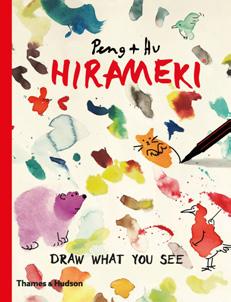
Hirameki: Draw What You See by Peng & Hu
Draw What You See is not your usual drawing book. It’s one that invites you to think outside the box using the Japanese art form of Hirameki, which translates to ‘flash of inspiration’. Each page is filled with colourful splodges and shapes for you to doodle into whatever your wildest imagination perceives.

healthier, happier, and in turn, more productive.
In Brain At Rest, he delves into why rest is so important, and reveals fascinating new research to back it up, from how silence can grow new brain cells, to how napping can boost the size of
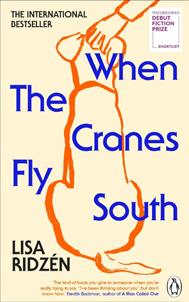
When the Cranes Fly South by Lisa Ridzén
Inspired by the notes that were left from her grandfather’s care team following the end of his life, Lisa’s moving novel is about a man facing the challenges of ageing, and his determination to preserve his independence. Shortlisted for the Waterstones Debut Fiction Prize 2025, it’s one that will resonate with those caring for struggling elderly loved ones.
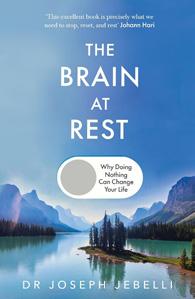
The Brain at Rest: Why Doing Nothing Can Change Your Life by Dr
Joseph Jebelli
your brain. So, if you’re someone who always feels the need to be on the go, or is prone to overworking, this read might just change your perspective for the better.
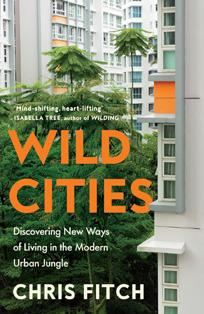
Wild Cities by Chris
Fitch
You might be surprised to learn that there are streets in Copenhagen designed specifically for residents to forage from, or that Flagstaff is the world’s first international ‘dark sky city’. These are just some of the innovative projects waiting to be uncovered in this book, that exist to bring biodiversity back to urban cities, and help residents feel more connected to nature.
Our annual poetry competition celebrating the best of mental health writing is back
Seasoned pro or fresh newbie, wherever you are in your writing journey, you are personally invited to enter the Happiful Poetry Prize 2026.
We’re looking for poems that explore the topic of mental health and wellbeing in unique, engaging, and empowering ways. The competition is free to enter, and no prior experience is necessary; the only thing you need is a passion for writing!
The winner will receive £100, and four shortlisted poets will receive a £25 National Book Token. All five poems will be published in issue 108 of Happiful.*
Please submit: • One entry per person, of a
• Your poem’s title.
• Your full name and address. • A short biography, no more than 50 words long.




How to write poetry that speaks your truth, even if you’re a complete beginner
Writing | Fiona Fletcher Reid
You might imagine that poetry isn’t for people like you. You might even have a picture in your mind of what a ‘real’ poet looks like – a pensive figure wielding a feather quill, or a confident speaker spitting rhymes under the spotlight. But the truth is that everyone can be, and arguably already is, a poet.
The idea that poetry must adhere to archaic rhyming schemes or specific structures is outdated. While there is certainly value in learning new techniques to strengthen your work, the underlying purpose of poetry is self-expression. It’s a way to communicate your perspective on the world, often in ways that regular prose simply doesn’t allow. When it comes to poetry, the beauty is that anything goes – and the sooner you free yourself on the page, the more exciting the process becomes!
But how can you tap into your personal truth, and turn it into a
poem? Let us share some tips on how to get started…
Let go of the ‘shoulds’
You likely have a preconceived idea of what poetry is ‘supposed’ to look like. But the truth is that rhyming, long words, complicated sentences, and strict verses don’t have to feature in your work if that’s not your style. You might find that free verse gives you complete freedom to let your words flow naturally. On the other hand, you might realise that rhyming connects you with a part of your experience that feels really authentic. However you write, make sure you’re writing for you, and not for the way you think it will be perceived.
There’s a common misconception that all poetry must be deep, heavy, and profound, but poetry can be about anything that matters to you. The way your partner
kisses your forehead when you’re sad. The relief of receiving an email about something that was making you anxious. The quiet comfort of finding a Netflix series to keep you occupied as you grieve. If it’s real to you, it’s worthy of poetry.
Being authentic in poetry doesn’t mean you have to expose yourself and dump all your trauma on the page – especially if you’re not ready to. It’s more about allowing yourself to say what is naturally asking to be said, in a way that feels true. This means getting comfortable with your personal perspective on the world, and acknowledging that all your experiences, feelings, and observations about the world are worth sharing – if you choose to. You don’t need to have lived through an extraordinary tragedy to have something worth saying. In fact, the ordinary moments are often where the most honest poetry lives. >>>

If you’re feeling the urge to try writing poetry, start exactly where you are right now. Don’t worry about creating something perfect – worry about creating something honest. Your first poem might be terrible. Your second might be worse. But your third? Your 10th? Who knows what you might discover about yourself in the process.
• List writing: The beautiful thing about poetry is that there are so many ways to approach it. List poems are exactly what they sound like – brilliant for capturing the details of a moment or feeling. You might write about “Things I notice when I’m anxious,” or “Reasons my dog makes me smile.”
• Micro poetry: Think just two or three lines that pack a punch, capturing a feeling in a single breath. Try writing a micro-poem that sums up the most important life lesson you’ve learned recently, or an emotion you’re struggling to make space for.
• Tell a story: Some poems follow a narrative arc, painting a picture of something happening, which can draw the reader in. It could be something that happened to you, a fictional story that illustrates an emotion you’re feeling, or a memory you’re still trying to process.
The sooner you free yourself on the page, the more exciting the process becomes
Whether you’ve dabbled in poetry before, or you’re terrified of putting pen to paper, you don’t need anyone’s permission to call yourself a poet. You don’t need to publish a book or win a competition, or even share your work with another human being. If you write poetry, you’re a poet. The unique way that you experience life, any hardships you’ve endured, or mental ups and downs along the way that you’ve learned from – how you communicate all of that through words is what combines to make the magic of you, and that is the basis of captivating poetry.
So, maybe it’s time to stop waiting for the ‘right’ moment or the ‘right’ level of skill. Maybe it’s time to just begin.
The best writers are great readers. Head to happiful.com/ poetry-prize to read our 2025 winning and shortlisted poems, as well as exclusive Q&As with the poets behind them.
Put your feet up, and your thinking gears in motion
Complete the grids so that the numbers in each row and column add up to the values at the edge. You can use the digits one to nine, but remember that each one can only be used once in each sum!
Q: I can be cracked, made, told, and played. What am I?
Q: What goes through glass, but doesn’t break it?
Q: What gets bigger, the more you take away?
Being there for someone you love from afar isn’t easy, but it is possible. Here, we’re offering four practical ways to show a friend you care, no matter the physical divide…
Writing | Holly Treacy-West
Remember when your friendship group was just a stone’s throw away? When popping round for a cuppa, meeting a mate in town, or being there in a crisis only took a quick phone call and a 10-minute stroll? Those were simpler times, but as our world grows through travel and technology, our friendships can often span cities, countries, or even continents.
When a friend who lives miles away is struggling, it’s easy to feel helpless and unsure of how to offer meaningful support. Physical distance can feel like a daunting challenge, but it doesn’t have to be. Staying emotionally close is not only possible, but can also be deeply rewarding for both you and your friend.
Dr Sophie Mort, a clinical psychologist and mental health expert at Headspace, underscores just how vital friendships are to our overall wellbeing. “When we’re separated by physical distance from our friends, it can certainly prevent us from feeling connected to our loved ones,” she explains. But the good news? We can nurture our bonds and provide
Illustrating | Rosan Magar
support across the miles with a little effort and intention.
According to Dr Mort, it’s all about being present, no matter where you are in the world. So, here are four practical and meaningful ways to offer your long-distance friendships the care and attention they deserve.
When my mum passed away, friends would drop off doorstep dinners and thoughtful gifts. It was a beautiful way of showing support. But, when you’re miles apart, it’s not always so simple. That said, Dr Mort suggests sending a thoughtful care package to a friend in need.
“It’s a powerful way to bridge the physical distance, and can remind our friends that we’re there for them, no matter how far apart we may be,” she says. “By choosing items that show we truly know and care about them, it makes the gesture even more meaningful, and helps to strengthen our connection with them.”
A care package could include their favourite treats, a handwritten note, or something
that brings back shared memories. “This can be especially meaningful during tough times,” Dr Mort adds, “offering our friends some comfort, and reminding them that we will always be here to support them.”
Meet online with intention
It might not be quite the same as grabbing a drink with your bestie, but Dr Mort says that establishing a regular schedule of virtual friend dates can help us to create consistency, and also offers us some quality time for connections.
“Thankfully, today’s tech devices offer us the opportunity to video call, replicating faceto-face time,” she shares. But, for Dr Mort, it’s important that we’re intentional with this time, ensuring that we’re present and engaged in the conversation, not distracted by other things. So, resist the temptation to call your friend while you’re juggling laundry, wrangling the kids, or answering the door. Instead, carve out focused time to truly slow down and connect – it’ll make a world of difference.
Add shared hobbies into your virtual dates
Want to take your virtual dates to the next level? Dr Mort suggests incorporating a hobby into your calls. “If there is a specific hobby you have in common, you could bring this to the call,” she advises. Whether it’s a joint yoga session, getting crafty together, or even cooking dinner at the same time, this transforms your catchup into a shared experience. These moments can make the interaction feel more dynamic and meaningful, helping to strengthen your bond in a way that goes beyond conversation alone. If books or movies are more your thing, Dr Mort recommends starting a mini book club, or
choosing your favourite TV show or movie to watch together.
“This can really help to create a sense of togetherness, and gives us new things to talk about and connect over.”
Start a shared project
“Collaborating on a shared goal can be a fun and meaningful way to stay connected with a friend at a distance,” Dr Mort explains. This could be as simple as tackling a fitness challenge together, learning to paint while sharing your progress, or even co-writing a short story.
“You could even plan a future trip you’d like to take,” she suggests. Having a shared goal or project gives you something exciting to work toward, and look forward to, strengthening
your bond, despite the miles between you.
Although distance may separate you geographically, with a little planning, creativity, and commitment to the cause, you can stay connected even when times get tough, showing that friendship knows no boundaries.
I found I could say things with colour and shapes that I couldn’t say any other way – things I had no words for.
Georgia O’Keeffe

| Gilbert

We investigate how ‘floodlighting’ in relationships can actually be manipulation masked as vulnerability…
Writing | Fiona Fletcher Reid
You’ve just finished a dinner date with someone who seems perfect – attractive, interesting, and refreshingly open. Within minutes, they shared deeply personal stories about their difficult childhood, recent breakup, or family trauma. You felt an immediate, intense connection. Here was someone brave enough to be vulnerable. But, on the way home, something feels off. Instead of the warm glow of a promising first date, you feel exhausted. Your mind is spinning with everything they offloaded, and you’re already wondering how you can help them through their struggles.
That spark? It might not have been chemistry after all. You may have experienced ‘floodlighting’ – a dating behaviour that involves overwhelming someone with personal revelations to create a false sense of intimacy. And, like being caught in actual floodlights, the initial brightness can leave you feeling disoriented once your eyes adjust to what’s really happening.
From catfishing to cuffing season, there are so many dating terms out there that it can be tempting to pathologise any unusual behaviours as toxic. The truth is most of us have experienced innocent oversharing; perhaps
you spilled your heart out to a stranger after a breakup, or offloaded a traumatic memory to a colleague. But there are elements to floodlighting that are more manipulative.
“The person essentially throws their trauma at you from the start, often to hook someone who has experienced their own hardships,” says integrative counsellor Donna Whitbread. “This fast-paced emotional sharing can create a false sense of closeness and trust, before a genuine bond has had time to form.”
Floodlighting is normally used to create a connection through shared vulnerability, and happens very early in a relationship. >>>
“Unlike other manipulative tactics that develop slowly and subtly, floodlighting is intense and immediate,” notes Donna. In the context of dating when a relationship hasn’t yet formed, oversharing isn’t necessarily the main problem. The real issue is the underlying intention to force an unnatural connection.
Not everyone will be drawn in by floodlighting, in fact, for some people it may be the red flag that takes a second date off the cards. But, for others, this sharing of emotion can create a dynamic that makes them feel somehow responsible for offering support. “When someone constantly shares their trauma, whether real or exaggerated, it can cast them as a victim in need of saving,” explains Donna. “In response, the other person may unconsciously take on the role of rescuer or caretaker. This imbalance can blur boundaries, leading the other person to feel a growing sense of obligation or emotional responsibility.”
If someone’s oversharing is making you feel anxious or under pressure to respond in a way that you don’t feel comfortable with, you’re likely being floodlit.
For many people, floodlighting is a defence mechanism that, confusingly, ends up acting as a barrier to reciprocal intimacy. “This oversharing of trauma or emotional pain can act as a form of disguise. By constantly focusing on their struggles, they
prevent the other person from truly getting to know them,” says Donna. By shining the light on the hardships they’ve faced, it may feel like the rest of their identity can remain safely in the shadows, away from any potential judgement.
The floodlighter may also use oversharing as a way to get what they want from the other person, fast-tracking the process instead of letting things unfold at a slower, more natural pace. “Floodlighting can be used to project a specific image, and manipulate the feelings of others,” says Donna. “If someone is primarily interested in getting what they want – whether that’s attention, sympathy, or control – floodlighting becomes a quick way to connect with emotionally vulnerable individuals.”
Some of the best introductions consist of honest admissions. But how can you tell the difference between this and floodlighting? According to Donna, there are some key questions you can ask yourself: “Does the interaction feel mutual and comfortable, or does it feel one-sided? Is this person genuinely interested in learning about you, or are they mostly focused on telling their own story?”
Meaningful connections involve presence, balance, and shared attention. “After a meaningful interaction, you should feel seen, heard, and perhaps even uplifted,” says Donna. “But if you walk away knowing only about their trauma and nothing about their values, personality, or interests, it may be

a sign that they’re hiding behind their vulnerability, instead of letting you see their whole self.”
If you suspect someone has been floodlighting you, here are some more words of advice from Donna:
Change the topic
It can be helpful to have a few phrases in the back of your mind to gently redirect the conversation. For example: “I appreciate you sharing that. I’d love to hear more about your hobbies/pets/work, etc.”
Zoom out from their trauma
Take a moment to think about how much you really know about them. Do you know anything other than their trauma or hardships? If not, the emotional intimacy you feel may not be genuine.

Post-date debrief
Check-in with how you feel after spending time together. “Do you feel emotionally drained or burdened with a sense of duty? Or do you feel heard, supported, and energised?” asks Donna. “If it’s the former, there may be manipulation at play.”
Reflect on the basis of your connection
Do you get the sense that they are interested in you as a person, or do you feel the connection is based on bonding over trauma? While genuine relationships can certainly include that bonding experience, they also involve learning about each other’s full selves, not only the painful or traumatic parts.

Not all forms of oversharing are cause for concern, but if you start to feel overwhelmed by their emotional intensity, Donna says it’s OK to slow things down, or step back. “You have a right to protect your emotional wellbeing, and ensure that trust and intimacy develop at a healthy pace.”
Whether you’re under the spotlight or shining it, remember, there is no shortcut to genuine emotional intimacy. Real connection builds through shared experiences, mutual interests, humour, values, and yes, appropriate vulnerability – but balanced with learning about each other over months, or even years.
When you encounter a vulnerable moment with someone new, ask yourself: “Is this sharing rooted in fear or authentic connection?” Only by developing this awareness can you create the foundation for relationships built on genuine understanding, rather than trauma bonding.

Donna Whitbread is an integrative counsellor specialising in trauma, attachment and LGBTQIA+ Visit the Counselling Directory to discover more.
self-sabotage
Self-sabotage can sneak into almost any area of life. It could be procrastination, like missing deadlines and convincing yourself you’ll start tomorrow. It can show up as perfectionism, where you’re endlessly tweaking a project so it’s never quite ready. Or, it can take the form of avoidance, such as leaving a relationship before it’s had a chance to grow. Whichever way it appears, it often leaves people asking: “Why do I always do this to myself?”
In therapy, I help clients understand self-sabotage not as a personal flaw, but as part of a wider pattern of thinking and behaving. It’s rarely about laziness, weakness, or lack of willpower. More often, it comes from behaviours that made perfect sense when we were growing up – strategies that helped us stay safe, be accepted, and get our needs met. I often say to clients that we carry psychological software from childhood, and sometimes it just needs an update.
From a transactional analysis (TA) perspective, self-sabotage can often be traced to what’s called a ‘life script’. This is an unconscious
blueprint for living, which we shape ourselves in early childhood based on messages from our family and society, telling us how to survive and belong. These scripts are made up of deeply embedded beliefs, decisions, and rules that once served us, but may now actually keep us stuck.
For instance, if you often heard “Don’t get too big for your boots,” or your family criticise someone for standing out, your script might say: “It’s safer not to shine.” As an adult, you might truly want to succeed, yet find yourself missing deadlines, pulling back from opportunities, or doubting your own abilities. It’s not because you lack ambition, it’s because your inner script is steering you toward the familiar safety of staying small.
One client I worked with dreamed of starting her own business. Each time she got close, she found reasons to delay, such as telling herself she wasn’t ready, or that she needed to do more research. When we explored her history, we found that ambition in her family was met with criticism and mockery. Her life script had taught her
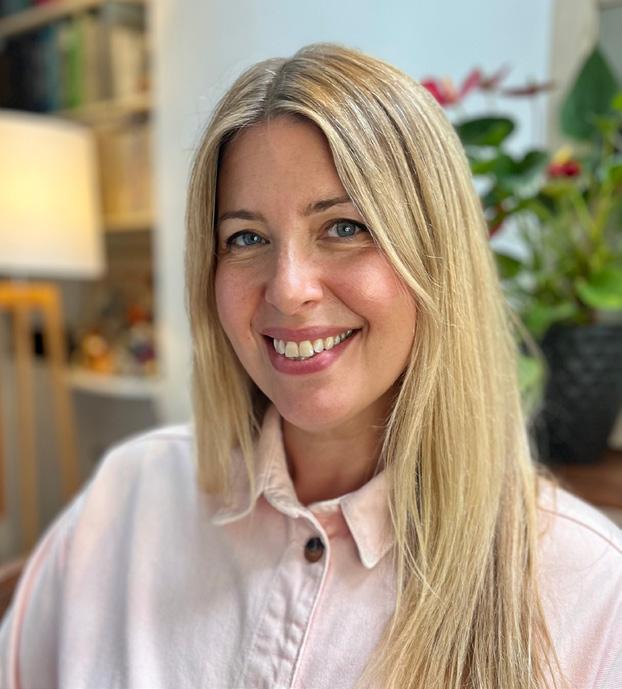
BEA APPLEBY BSc (Hons) Dip MBACP
Bea Appleby is a humanistic counsellor, working with adults and couples. Get in touch via the Counselling Directory.
that aiming high meant risking love and acceptance.
From this perspective, selfsabotage isn’t a failure, it’s a loyal but outdated strategy. By recognising the old story, you can begin to choose a new one. This time, you get to write it as an adult, with more resources, options, and autonomy than you had as a child. You might have learned to hold back to avoid criticism, to keep the peace, or meet someone else’s expectations. But those once-helpful strategies can quietly become the barriers to your personal growth.
Self-sabotage can also be understood through the lens of nervous system regulation. When a situation triggers anxiety, be that fear of failure, conflict, closeness, or even fear of success, the body can react as if it’s under threat. The nervous system can

slip into fight, flight, or freeze mode leading to procrastination, perfectionism, or checking out completely. In the shortterm, these states can soothe discomfort, but, over time, they create a cycle where avoiding stress keeps us from achieving our goals or having the life we want. Noticing what’s happening in the body, and trying to regulate with some grounding exercises, will help to break this cycle.
The most important thing to remember is that self-sabotage is not a moral failing. It’s a protective mechanism that’s become tangled
over time. Or a bodily response intended to keep us safe. When we approach this very human phenomenon with curiosity and kindness, rather than shame and self-criticism, we can begin to understand its purpose. Through therapy, reflection, and self-awareness, it is possible to rewrite your life story, reconnect with your authentic self, and integrate the parts of you that have been, until now, in conflict. That’s when self-sabotage stops being the enemy, and becomes a path to awareness, choice, and change.
Self-sabotage is not a moral failing. It’s a protective mechanism that’s become tangled over time
Start noticing
Catch yourself in the act of selfsabotage. Instead of beating yourself up, ask: ‘What’s this behaviour trying to protect me from?’
Discover your rules
Write down the phrases and rules you learned growing up. Are they still true for you, or are they someone else’s voice? Do these rules lead to tripping yourself up in adult life?
Let conflicting parts speak
If one part of you wants change and another resists, give each part a voice. You might be surprised by what each voice has to say.
Seek a safe relationship for exploration
Working with a counsellor offers a non-judgemental space to explore your patterns, challenge your script, and experiment with new ways of being.
Writing | Lydia Smith
Deciding whether to have kids is a deeply personal thing; for some people, it’s a future they’ve always envisioned for themselves, for others it may never have been on their radar. Some people are torn, or find their mind changes over time, while others have the choice taken away from them. But, for those who do enter parenthood, the complex decisions don’t stop – then comes the question: how many children do you want?
For many parents, the number of children you have tends to attract strong opinions from others. And often, women are made to feel guilty about choosing to be a ‘one-and-done’ parent. Recently, I was in the supermarket with my three-yearold son. A well-meaning woman commented on how cute he was, before asking if he would ever have a sister or brother. I smiled
politely, said I wasn’t sure, and left the shop. But, internally, it got me thinking – was I being selfish? If I didn’t have another child, would my son be lonely?
These seemingly innocuous questions and comments can easily trigger worry and guilt. They can be particularly harmful if you don’t want another child, you’re undecided, or if you’re experiencing fertility problems.
Between England and Wales hitting a record low fertility rate of 1.44 in 2023, according to the Office for National Statistics, along with anecdotal evidence, it seems like more parents are choosing to have one child. This could be for countless reasons, whether the result of financial concerns, career aspirations, political choices, environmental worries, or the lasting impact of traumatic births. Yet despite this, there is still pressure to avoid having
an ‘only child’ – a phrase that is unfairly loaded with negative connotations of spoiled, lonely children.

So, where does the pressure to have multiple children come from? And how can you manage the stigma of being a single-child family?
“This pressure and expectation that women will have more than one child is rooted in patriarchal ideology that has women in traditional roles of mother and homemaker,” says psychotherapist Caroline Fearns.
“Historically – and still, in more subtle ways today – there is an underlying assumption that women’s emotional fulfillment should come from motherhood
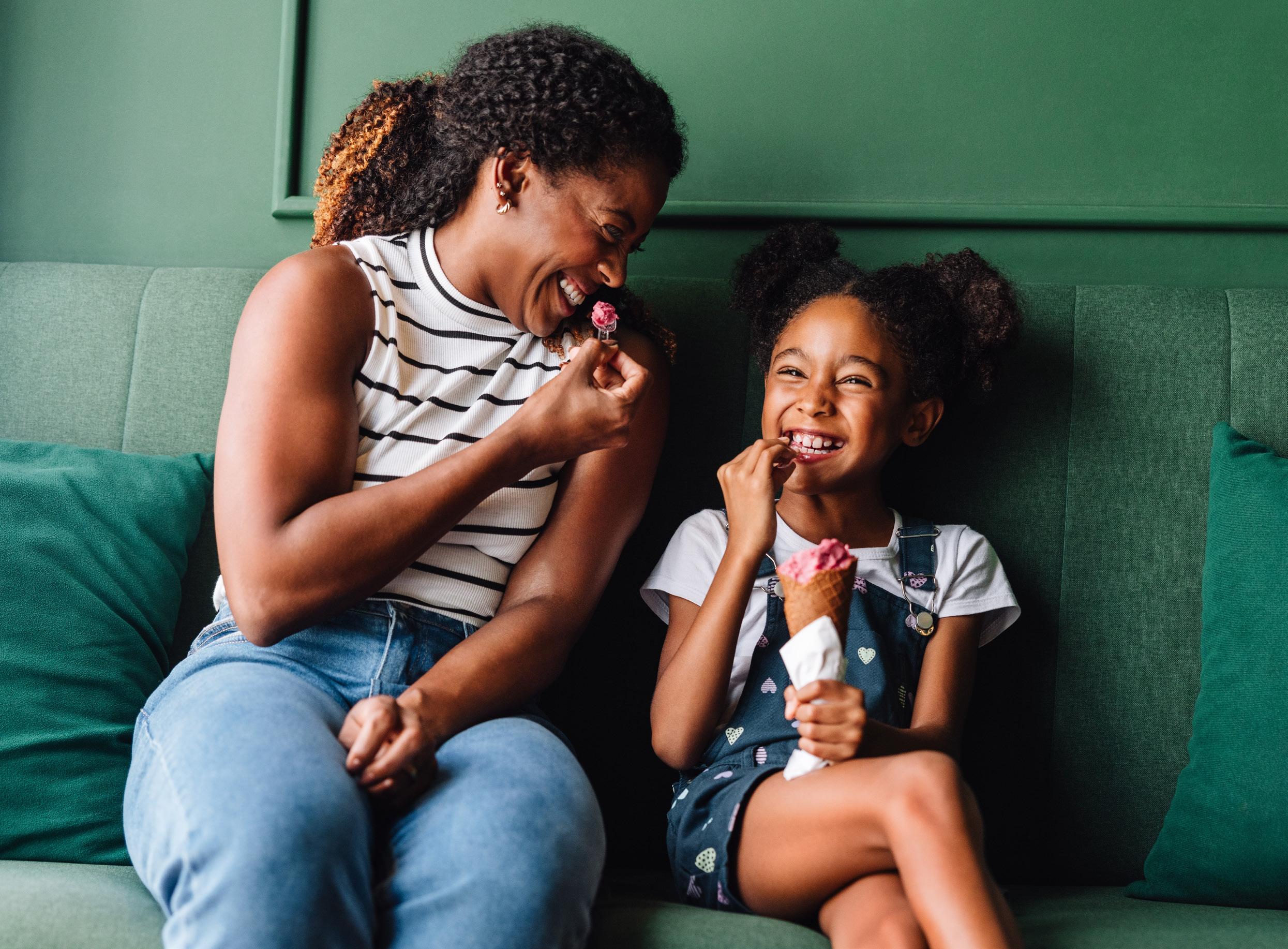
and raising children. This can lead to pressure for women to have more children, as if one child isn’t enough to meet this need.”
There are also long-standing stereotypes that only children are lonely, selfish, and maladjusted, which can fuel feelings of guilt. Early psychological research played a part in reinforcing those beliefs. In the late 1800s, psychologist G Stanley Hall declared that being an only child was a “disease in itself”. An article published in Monitor on Psychology notes that he claimed only children were typically known to be “jealous, selfish,
egotistical, dependent, aggressive, domineering, or quarrelsome” because of the attention they supposedly received.
Hall’s research – which has since been deemed unscientific – consisted of observations of certain children. And, like many of the psychologists of Hall’s time, his theories were biased as a result of outdated gender stereotypes, which declared women were born solely to be mothers and wives.
Research has shown Hall’s claims have no factual basis. In the 1980s, American researchers Toni Falbo and Denise Polit conducted an analysis of 141
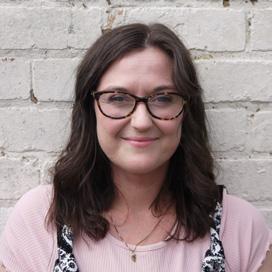
Find out more via the Counselling Directory.
studies about only children, published in Psychological Bulletin. They found that only children were comparable to those with siblings in terms of wellbeing and social development.
Contemporary, large-scale studies have found few personality differences between only children and those with siblings. A 2020 study of 8,689 US students, in Personality and Individual Differences, found no differences >>>

in facets of narcissism, including arrogance or entitlement.
Additionally, Falbo and Polit’s research suggests that only children tend to have more positive relationships with their parents than children with siblings. Despite this, these negative stereotypes continue to influence people today. “Pressure can come from family members who may expect multiple grandchildren,” explains Caroline. “Social media can make it even harder, because everything is so curated and idealised. It’s easy for fears around having an only child to be amplified, especially when we constantly see carefully curated images of big, happy families.”
The unfortunate truth is that guilt is an all too common side-effect of being a parent – whether it’s because you’re balancing work and family responsibilities, or comparing yourself to others online. But, there are ways to ease
negative feelings about being a one-and-done parent.
“Many of my clients have struggled with the pressure to have more than one child. It’s so hard to hear from multiple angles that a sibling is what is best for your child, especially when you know in your heart that one child is what is right for you and your family,” says Caroline.
“Know that you are not alone, and know that what your intuition is telling you is right. Having another child because you feel like you ‘should’ is not a course of action that is grounded in compassion for yourself, or what will ultimately be best for your family.”
If family members or friends are putting pressure on you, setting firm boundaries can help. It can help to state that you’re doing what’s best for your family and your child, which can help shut
down an unwanted discussion. You don’t owe anyone an explanation for your choices.
If the pressure is coming from social media, curate your feed so that you are exposed to supportive content that is going to lift you up.
“If you notice guilt or worry coming up around your decision to be one-and-done, know that this is just a sign that you are a great parent who cares about your child,” says Caroline.
Write down the positives of your set-up
It also can be helpful to sit down and write down the positives, or reasons why, having one child feels right for you. “If you are feeling overwhelmed by the pressure to have more than one child, reach out for support – a trusted person in your life or therapist is a good place to start,” Caroline says.
Follow your instinct
Often, there’s no way to win as a woman. If you don’t have kids, some people may call you selfish. If you have multiple kids and work, people may call you a bad parent. If you stay at home, people may judge you for not having a career. You can only do what is best for you.
“You will also be creating a culture within your family of trusting your instincts above external pressures and expectations,” says Caroline. “This is an amazing thing to model to a child, and sets them up to be able to confidently walk their own path in life.”

Emily Coxhead on her journey from sensory overload to soothing storytelling, and how her books are helping children understand their emotions, one sense at a time
Writing | Emily Coxhead
You’re in a new environment, and there are strong smells you don’t recognise. The music and chatter are too loud for you to focus on what any one person is saying. It’s too bright, you start overheating, and it all just becomes too much. This has been the story of my life for as long as I can remember, and I honestly thought everybody felt everything as intensely as I do.
I’m Emily, a 32-year-old illustrator, author, and founder of The Happy Newspaper –something I started almost 10 years ago in a spare room at my dad’s house. I was often called “very sensitive” or “too sensitive” (I still am sometimes!), and the world has always felt a little too loud and overwhelming.
It wasn’t until I came across the words ‘overstimulated’ and ‘sensory overload’ that I truly found language to describe how I’ve felt since childhood.
Sensory overload is when your brain receives more sensory input than it can process at once. It happens when one or more of your senses – sight, sound, smell, touch, taste – is overstimulated. Nobody has ever told me I have this; I’ve figured it out over the years, mostly by wondering if everyone’s clothes felt too tight, or their ears physically hurt from noise, whether they’d happily wear dark sunglasses 24/7, and feel like they need a little nap in a dark room after a social event –the list could go on.
Sensory overload can affect anyone, but certain people
are more likely to experience it intensely or frequently. For example, it can be a huge part of autism and attention deficit hyperactivity disorder (ADHD), as well as sensory processing disorder, anxiety, or chronic illnesses, and it is often experienced by children (especially those up to age seven), who are still developing the ability to regulate sensory input. In children, especially, this can show up through crying, tantrums, difficulty communicating, or withdrawal, where they may try to avoid certain situations.
Although I’ve never had any sort of neurodivergence assessment, it’s something I may explore in the future. Funnily enough, my husband went >>>
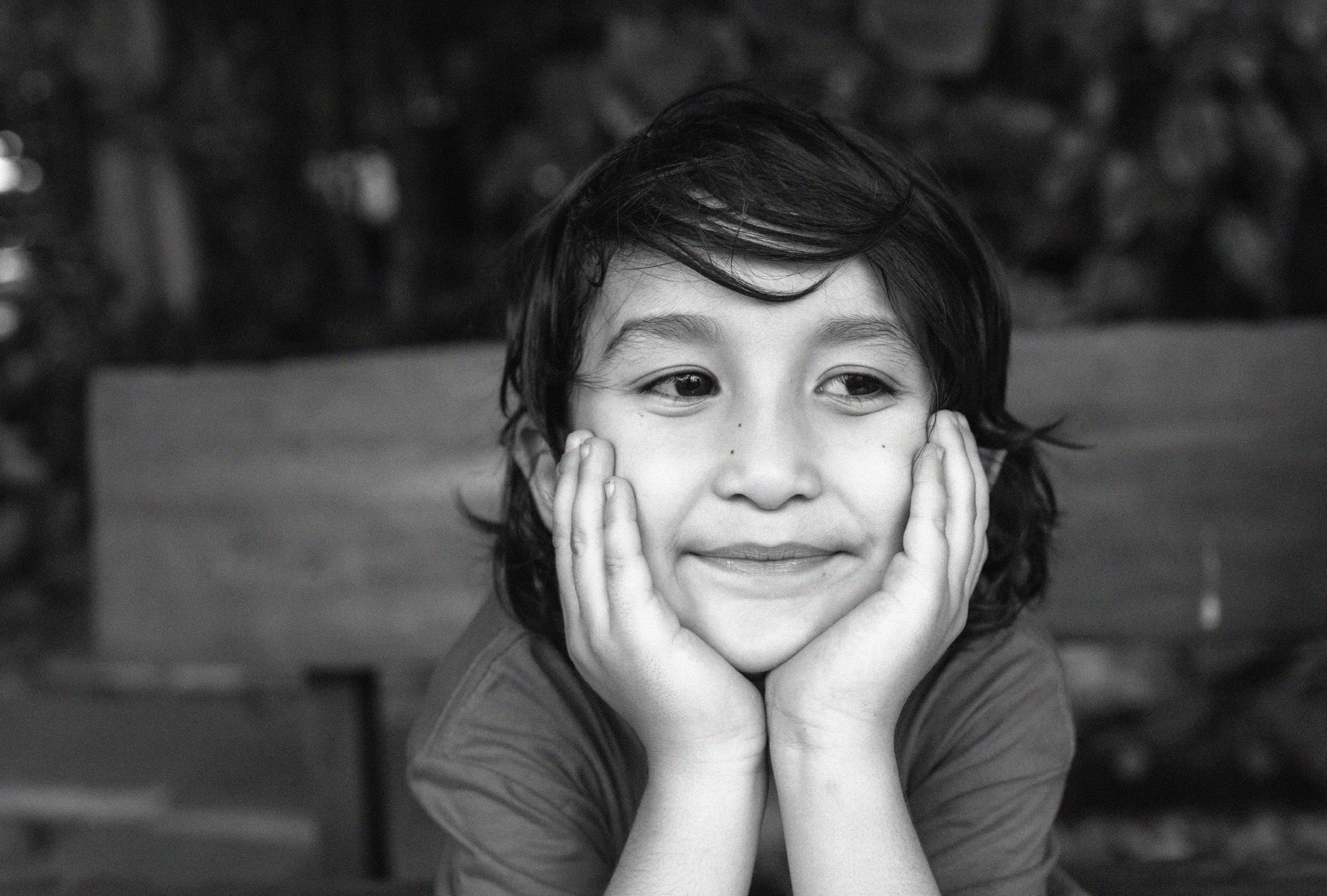
through an ADHD diagnosis a few years ago, after our little boy was born. It was a huge rollercoaster of emotions while going through the process and receiving the diagnosis, but it made so much sense. And once we’d got our heads around the whole thing, it felt like a real weight had been lifted.
Luckily, I’ve always considered my brain might be wired a little bit differently, and although it doesn’t make life easier – and definitely doesn’t help in explaining to others how I feel – it does give me a huge sense of understanding
and strength to continue trying to learn more about what helps (or doesn’t help) my brain.
Understanding more about ADHD, sensory processing disorder, and autism, has taught me a lot about how they affect people in so many different areas, not just in the typical ways that I was made aware of when I was much younger.
As well as the sensory element, I’ve always felt things deeply, from my own life experiences to watching tragedies on the news, and feeling like I can physically feel other people’s pain, which is why I started The Happy
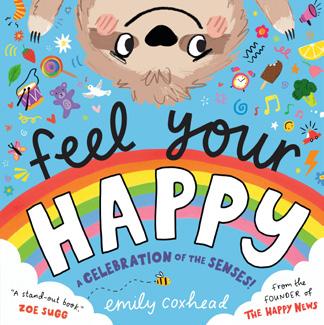

Newspaper. I was at one of my lowest points: I had recently graduated, with no idea what I was doing with my life, and my mum and dad were going through a messy divorce. News and social media were impacting me more than ever, and I started searching for the positives in a bid to share them with others, too. Ten years later, I’m lucky enough to still be sharing positive news with people all over the world, and now I’m
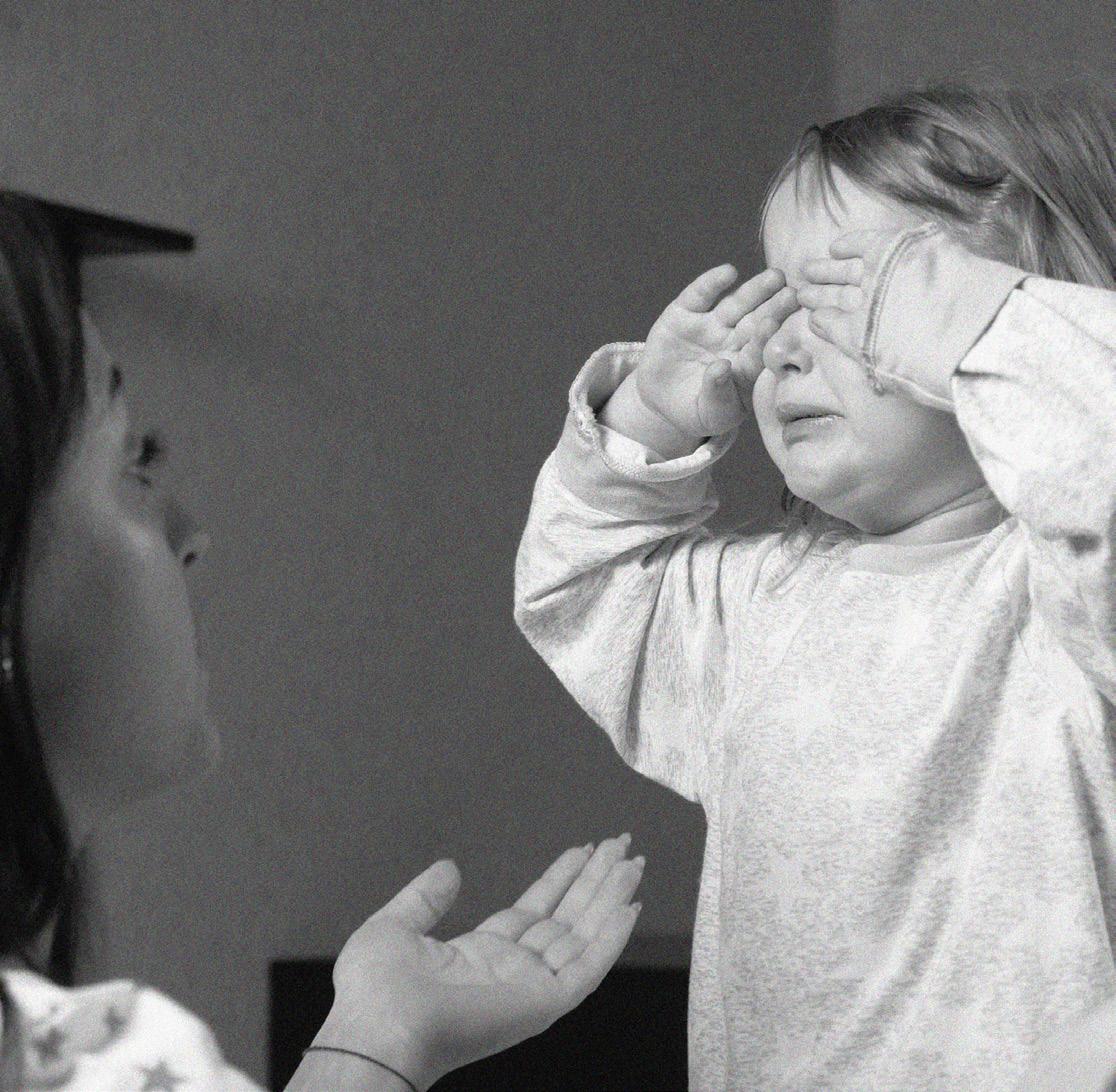

sharing some of that happiness through my books, too!
The premise behind my books is to help children (and adults) understand that we all feel a range of emotions, but it is possible to find happiness again. I also wrote Feel Your Happy with little me in mind – a book that would’ve helped me understand that I wasn’t being ‘too sensitive’ or difficult, I was experiencing the world in a more amplified way. As I’ve grown up, and now am a mum with my own little human to help navigate through all of this, I’ve realised that, as difficult as it is to experience the world this way at times, it also makes it incredibly magical. Friendships and relationships are more meaningful. Passions and dreams are stronger. My love for art, animals, and sitting on a beach, listening to the waves, is huge. As well as experiencing negative feelings and senses powerfully, it also works the other way round. Growing up like this, I’ve figured out simple, yet effective, ways I
As well as experiencing negative feelings and senses powerfully, it also works the other way round
can manage my overwhelm. One thing I’ve found recently that helps is wearing discreet earplugs in busy, loud, or overwhelming environments, such as the airport. I hadn’t realised just how much all the different sensory elements affected me until I put them in; it instantly quietened the overwhelm, and made the whole experience more manageable. Sometimes it’s hard to recognise when I’m on the edge of sensory overload, and it’s only when I change something (even as small as putting on sunglasses or stepping outside into fresh air) that I notice how I was feeling.
Focusing on the five senses, I share tried-and-tested coping mechanisms in my book, to help children centre themselves when things feel too much: from taking deep breaths and choosing comfy clothes, to tasting delicious food. These relatable and simple techniques are things that could help any of us feel a little less overwhelmed.
Little Sloth (the character in my books) is a comforting reminder that your feelings and the way you experience the world are part of what makes you, you. One of the biggest things for me growing up was recognising my differences, even if I didn’t understand them fully. And although I felt a constant battle to try to ‘fix’ these things – and still do at times, wondering: “Why can I not just switch that bit of my brain off?” – I’ve grown to accept and celebrate these parts of me as best as I can. I’m sure I wouldn’t be where I am today without them.
If you’re struggling, and any of this has resonated with you at all, please know you’re not alone. Some simple ways I find help are to speak to somebody you regard as safe, write down how you feel, and to step outside, and take some deep breaths. It’s no wonder everything feels overwhelming when you’re trying to fit into a world that isn’t necessarily set up for you.
Writing | Fiona Berry
The changing season invites us to slow down and turn inward – but modern life rarely allows for that. It’s no wonder that the pressure to launch into intense routines or overhaul habits often clashes with our body’s natural desire for warmth, rest, and grounding. Without aligning our goals with these seasonal rhythms, even the best intentions can fall away. Perhaps you find yourself wishing you could somehow delay winter’s inevitable arrival. Alternatively, you might have enjoyed a period of vitality earlier in the year, only to feel things subtly going awry as the seasons shift.
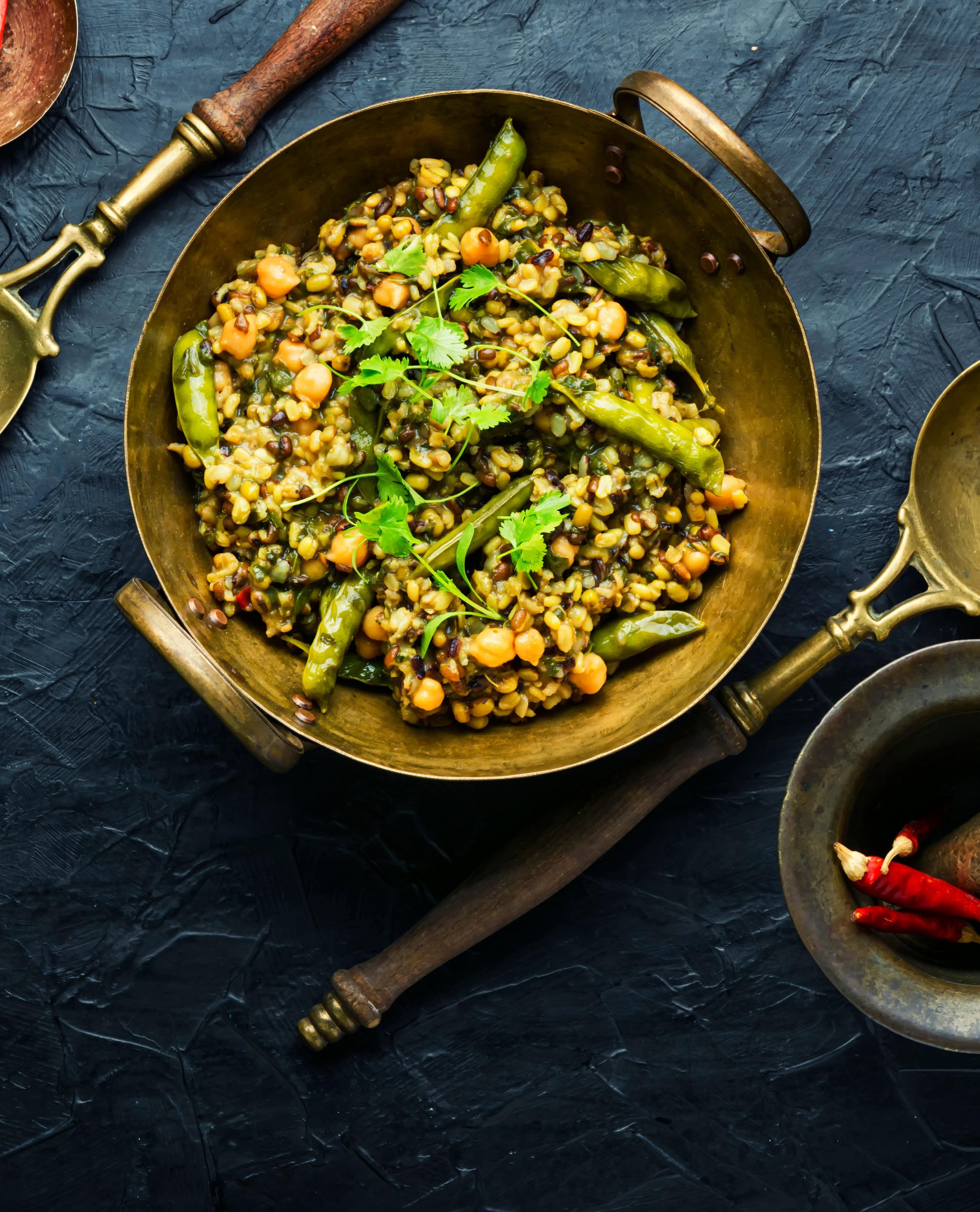
What if there was a much simpler way to approach health and wellbeing? Ancient wisdom offers a profound solution: wellbeing by seasons. This approach encourages you to deeply attune to your body’s ever-changing needs throughout the year, adapting your nutrition, daily rituals, and lifestyle to suit both your current state, as well as the prevailing season.
Here is an Ayurvedic healing dish that has been used for many years. It is my take on a traditional recipe that can be adjusted to your taste, and what you have in the fridge!
Autumn kitchari
Serves: 4
Prep: Soak mung beans 24 hours
Cook: 1 hour
Ingredients
For the bowls:
• ½ cup mung beans (soaked 24 hours)
• 1 tbsp each: cumin, coriander, fennel seeds
• ½ tsp black mustard seeds
• 1 tsp ghee or olive oil
• 2 garlic cloves, minced
• 1 tbsp fresh ginger, grated
• 1 red chilli, chopped
• 1 tsp turmeric
• ¼ tsp cinnamon
• Root veg (cut into 2cm cubes): carrot, parsnip, butternut squash, celeriac, leek, swede, fennel bulb
• ½ cup brown basmati rice
• Bay leaf
• Soft veg (cut into 2cm cubes): cauliflower, courgette, spinach, cavolo nero, tomato
• Juice of ½ lemon
• Handful of each, chopped: coriander, parsley, thyme
Method
• Toast your spices (cumin, coriander, fennel, and mustard seeds) in 1 tbsp ghee or olive oil for 30 seconds. Once fragrant, add the garlic, ginger, chilli, turmeric, and cinnamon.
• Once mixed, add your root veg. Cook for 3–5 minutes.
• Stir in the mung beans and
rice. Add 5–6 cups of water, a bay leaf, and thyme. Bring to a simmer and cook for 45 mins.
• Add your soft veg (cauliflower, courgette, spinach, cavolo nero, tomato). Cook for 10–15 mins until creamy.
• Finish with lemon juice, chopped herbs, and salt to taste.
Optional toppings: Coconut yoghurt, toasted pumpkin seeds.
The truth is we cannot expect to maintain the same eating patterns or living habits year-round and truly thrive. By consciously adjusting our routines in tune with the seasons, we unlock a wealth of benefits – through dietary diversity, a wider range of nutrients, and eating foods at their peak nutrition and flavour, as they are harvested when naturally abundant. It’s a win-win: supporting both our health, and our enjoyment of food. Autumn, in particular, is symbolic. It’s a time for introspection, to shed what no longer serves us – be those habits, routines, or mindsets. At the same time, it’s a crucial opportunity to prepare our bodies for winter, which often brings more circulating viruses, lower mood due to decreased daylight, and reduced physical activity. What
Find more nutritional insight and to connect with professional support on the Nutritionist Resource
we do in autumn can either buffer, or intensify, these effects. That’s why embracing seasonal foods and slower rituals now is so impactful. Conversely, autumn is also a time of abundance. So much is naturally in season, and many of the fruits and vegetables available are rich in antioxidants – think dark leafy greens, squash, and vibrant berries. We naturally begin to crave warm, slow-cooked dishes like stews, soups, and roasts. This shift is nature’s way of preparing our gut microbiome and immune system for the colder months ahead. Embracing seasonal eating in autumn is a conscious act of self-care, equipping our bodies with resilience and vitality.
Eating 30 plants a week is considered one of the best ways to improve gut diversity, and overall health. Making a batch of this warming, gut-friendly, and gently cleansing dish is a great way to give yourself a nourishing head start for the week.
The combination of mung beans and brown rice offers a complete amino acid profile – ideal for anyone exploring more plantbased eating without sacrificing protein. Warming, grounding, and nutrient-dense – this is seasonal self-care in a bowl.
Fiona Berry is a registered nutritionist and the founder of Itstheberries.
What it’s really like to go on an adventure, or enjoy some quality restorative time, where your only companion is your truest self
Writing | Michelle Elman
Ahead of turning 30 last year, I looked at my bucket list and spotted one goal that I had yet to tick off, and was determined to achieve by the end of the year: going on a solo trip.
When I was young, my mum was cabin crew, so I’ve travelled a lot, and as I got older, my preferred method of travelling was with one friend. But I’d never taken the leap to explore completely on my own, and I wanted to, at the very least, try it – even if I hated it. With a lot of encouragement from my life coach, and my boyfriend at the time, I made a plan. I adore a beach and a pool, and my favourite type of holidays are ones where you are doing little to nothing – something I hadn’t been able to enjoy for a few years as my boyfriend at the time was a museum and audiotour kind of guy. I also decided it would be the perfect venue to finish my book, Bad Friend. I will admit I was nervous; I’m not the best at locating myself, even in my own neighbourhood, so what about in a completely different country?
But, I embraced the idea that it was going to be a challenge, and accepted that the worst thing that would happen would be that I would hate it. That was far from the case though!
The moment I landed in Dubai, I realised that when travelling alone, you have way more freedom, control, and the ability to be spontaneous – not only on the trip, but in the booking of it. You don’t need to get approval on the hotel or amenities, or organise it around anyone else’s schedule. It was even silly things, like I was able to order room service whenever I wanted, or go into the forbidden mini fridge that I was never allowed access to as a child. I was able to decide when to eat, what to eat, what time to wake up, where to go, and how much or how little I wanted to do. My time was completely mine!
This year, when I found myself in the same position with no summer plans, I did hesitate to book another solo trip. I had loved my last one, but, this year, I’d already processed so much loneliness that I was worried being alone in a
foreign country would mean that I would feel even more lonely than I needed to. Then it occurred to me, if I was going to feel lonely, I might as well feel lonely by a beach or the pool, so I booked it again –this time to Ibiza. And, like last time, I came equipped. I brought books, as well as paints with me so I could paint by the pool, and I downloaded a few extra TV shows in case I wanted to stay in on the evenings.
One of the hardest parts of solo travel, I found, was solo dining. It can often be a reminder that you’re alone when you look around the restaurant and see everyone else with their loved ones, but I found the best thing to do in those moments was to focus on my own experience, whether it was the food that was on my plate or the view from my table. When moments of loneliness arose, I just sat in it. It’s shocking how even the uncomfortable emotions can just exist without you needing to act on them, do anything about them, or let that one feeling spiral into a bunch of thoughts that feed into you feeling

bad. Recognising the thought by saying “I’m lonely and that’s OK,” breathing into the part of my body where that loneliness sat, and even comforting myself with a gentle hand on me as a self-soothing technique expanded my window of tolerance, and taught me that loneliness doesn’t have to be this scary thing – it can exist alongside a beautiful moment, like having yummy food on a beach. The loneliness doesn’t
negate it, because two emotions can exist at the same time, and both are just as valid as each other. The one thing I realised, this time, was that solo travel as an introvert is more restorative in a way that travelling with others isn’t. Maybe it’s because my friends are quite active people, or perhaps it’s because having that silence and solitude meant my brain could actually slow down and relax. I didn’t need to
Loneliness doesn’t have to be this scary thing, but can exist alongside a beautiful moment, like having yummy food on a beach
accommodate anyone else, and having a whole week to only think about yourself is an immense privilege – but if I have that privilege, why wasn’t I using it, maximising it, and enjoying it?
More than anything, solo travel has been an active reminder that I’m a grown adult with free will. In my 20s, I learned that I should never wait for a man to live my life, and, in my 30s, I realised that you shouldn’t wait for friends either, and solo travel was my way of putting into action that if I want my dream life, I need to create it first. The irony about having the confidence to do things alone is that it tends to attract the right kind of people in your life, but, even if it doesn’t, it means you are living the kind of life you have always dreamed of.
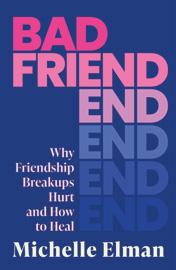
‘Bad
Friend: Why Friendship Breakups Hurt and How to Heal’ by Michelle Elman is out now (Renegade Books, £20)
We’ve all heard the phrases ‘getting hot-headed’, or ‘boiling over’, and, in turn, the need to ‘cool off’ and ‘chill out’, but it seems these temperature-related turns of phrase might actually be based on a reality worth exploring.
‘Heat rage’ is a phenomenon many of us will have experienced, where we feel more irritable, anxious, or angry as temperatures rise. But it’s not just your day-today mood that seems susceptible, with a 2015 study in the Journal of Sport Health and Science noting that American football players were more likely to commit ‘aggressive fouls’ in hotter weather.

On the more extreme end of examples, reports even suggests that crime rates rise in hot weather – as noted in a 2021 review of studies published in The Lancet Planetary Health –specifically referencing how every 5°C rise in daily mean temperature between 2007 and 2017, in a study of seven cities across the US, was associated with a 4–5% increase in sex offences over the course of the following eight days.
So, why exactly are people more prone to rage as temperatures rise, and what can we do about it?
While numerous studies have found a link between heat and aggression, it’s a little trickier to pinpoint an exact cause. However, scientists do have theories.
Discomfort is believed to be a key factor, resulting in us having less patience, being more snappy, or prone to taking things in a personal or more negative way. So, small things that might dissipate in usual circumstances suddenly boil over instead.
A 2021 study, in the Journal of Thermal Biology, explains how heat exposure can impact “several physiological, neuronal, and emotional functions”, including neurotransmitters like noradrenaline, dopamine, and serotonin, which help to regulate some of our basic bodily functions, like energy balance and thermoregulation. Therefore, we may be more likely to feel ‘out of sorts’, as our bodies aren’t functioning at their usual, or optimal, levels.
Additionally, in an effort to cool down, our bodies may need to divert energy from elsewhere to prioritise this. Our prefrontal cortex, responsible for decisionmaking, takes up a lot of energy, and so, if some of this is required elsewhere, we may end up being more rash and impulsive – i.e. less able to reason with ourselves in situations where we might feel frustrated or irritated.
Discomfort doesn’t just impact our mood in the day, though. Higher temperatures can lead to disrupted, or poor quality, sleep, and without being well-rested, our prefrontal cortex (which also
helps to regulate our amygdala, the area of the brain responsible for processing emotions) is less able to function properly. The simple fact that people are more likely to socialise and be outside in warmer weather also increases the opportunities for interactions, and, in turn, to get on each other’s nerves – whether that’s road rage while you’re sweating in a traffic jam, or losing your temper with a loved one.
What can you do to manage heat rage?
We can separate our approach to addressing heat rage into two areas:
• Stay hydrated. Replace fluid lost through sweating and give your body the hydration it needs to function properly. Keeping a bottle of cold water with you can not only satiate your thirst, but could also be used as a cooling tool by resting it against your skin.
• Reduce your heat exposure. Avoid strenuous activity where possible, especially during the hottest hours of the day, and wear lighter, looser fabrics for better airflow. You might also want to keep blinds or curtains shut during the day to try to keep the heat out of your home.
• Create a cooling environment for sleep. To counter the negative nighttime impact of the heat, you could take a cold shower before bed, swap out your sheets for
It’s important to note that anger in itself isn’t a ‘bad’ emotion, or something to suppress. However, it’s important to have healthy ways to express it, and to understand what it’s telling you about your own needs right now. The concern with ‘heat rage’ is that our ability to selfregulate is diminished, and so we can be more prone to rash outbursts, rather than releasing our anger via healthy, considered means.
lighter ones, and maximise airflow by keeping internal doors in your home open. Get strategic with fans by facing it out of the window if the temperature outside is lower than inside (which might seem counterintuitive, but actually helps draw the cooler air in, and send the hot air outside).
• Identify your triggers. Being aware of what exacerbates your rage can help you to minimise situations that provoke you, especially when things are hotting up.
• Give yourself space. When you recognise your anger rising, it can be worth removing yourself from those situations so you’re less likely to react rashly.
• Establish healthy coping mechanisms. Finding healthy ways to process your anger is key – regardless of the temperature. This could be through venting with consenting friends, putting it on the page with journaling, or speaking to a trusted professional.
The feeling of ‘dissociating’ can be distressing, so how can you pull yourself back to reality?
Writing | Kerry Law
Most of us will be familiar with the sensation of ‘zoning out’ occasionally – but this can go deeper. Have you ever experienced emotional numbness, and felt like you’re watching yourself in a movie? Struggled to remember large chunks of time, or even recognise your own reflection? From mild to severe, these are all signs of dissociation.
What is dissociation, and what triggers it?
Dissociation is a psychological detachment from yourself or your surroundings, often in response to stressful or traumatic situations. A dissociative episode can range from a few minutes or hours of feeling ‘spaced out’ and unable to focus, to days or even months of memory blackouts, not recognising familiar faces and places, and feeling that life isn’t ‘real’.
We’re most likely to experience dissociation in physically or emotionally troubling situations, explains person-centred counsellor Georgina Gardner Stockley: “It’s a way in which our bodies and minds protect us
from becoming overwhelmed by unpleasant, intense, or frightening experiences. Broadly, dissociation will be triggered by something which is perceived as a threat.”
But that doesn’t always mean in the immediate circumstance. “[The threat] could be a smell, emotion, sound, or situation that reminds us of something that previously hurt us,” she adds.
It’s important to remember that dissociation is a natural coping mechanism, but it can be problematic if it interferes with daily life, or causes us distress. In many cases, the mind will come out of a dissociative state when it perceives the threat to have passed.
If you feel yourself dissociating, Georgina and clinical psychologist Dr Aisha Tariq recommend these practical ways to get back in control, and to recognise when you need professional help.
When symptoms are mild, Dr Tariq recommends some simple grounding techniques: “Engaging
your senses is one of the most effective ways to reconnect with reality. Touch an object with a distinct texture, listen closely to the sounds around you, or focus on what’s happening in your environment. These actions help move you from dissociation into awareness.
“Movement is another grounding tool. Whether it’s standing, stretching, or walking, any small movement can remind you that you’re present in your body and surroundings,” adds Dr Tariq.
If the mind dissociates in a frightening, seemingly ‘unsafe’ situation, it follows that things you associate with ‘safety’ will bring you back. “Experience connection with another human or an animal,” Georgina says. “Stroking a pet works on multiple levels as it provides fodder for your senses through texture –and, depending on your animal, it may also provide scent – as well as a sense of love and bonding.” Or give yourself a hug. “Some people find comfort in being made more aware of the
boundary of their body, so wrapping yourself in a blanket may be soothing,” she suggests.
Seek support to help make a plan
Georgina reassures that being in a dissociated state is rarely a crisis, but acknowledges, “it’s innately disconcerting to have memory gaps, therefore, many people are fearful of their dissociation.
“If you’re worried that you might hurt yourself, or others, while dissociated, speak to a therapist. They can help you identify triggers, learn regulation techniques, and create a plan as to how to protect yourself in future episodes.”
If you suffer from mild but persistent dissociation and don’t address it, it can take its toll, warns Dr Tariq. “Over time, dissociation can prevent you from fully engaging in life, which makes it difficult to process past trauma. Emotional pain and stress may resurface in other ways, such as anxiety or depression.” She adds that during severe episodes where you fear there is a considerable risk of harm, the emergency services should be contacted immediately.
Recognise ‘healthy’ vs ‘unhealthy’ dissociation
Dissociation isn’t necessarily always a bad thing. Knowing the signs of healthy dissociation can help you embrace the positives, and stop you spiralling into an unhealthy state.
“Experiencing a ‘flow state’ can be a positive form of dissociation,” explains Dr Tariq. “When you’re completely immersed in an activity, and lose track of time, it can boost creativity and performance.
Daydreaming is another type of dissociation that can be harmless, and even helpful, when done in moderation. It provides a mental break from the stresses of everyday life, and allows your mind to recharge.

“However, the key difference between healthy and unhealthy dissociation is whether it interferes with your ability to function or engage with your emotions.” So, if your dissociation is a way of avoiding difficult feelings, know that it’s time to talk to a professional.

Georgina Gardner Stockley is a personcentred counsellor.
Dr Aisha Tariq is a clinical psychologist.

Connect with both via the Counselling Directory.

Over time, dissociation can prevent you from fully engaging in life, which makes it difficult to process past trauma
Use this cheat sheet to start your day the best you can
Do you feel well-rested? NO
10 mins journaling
Consider why you struggled to sleep? Is something preoccupying your thoughts? Are you anxious, or excited?
Enjoy gentle movement
This could be stretching, pilates, a quick run –something to connect with your body and release endorphins.
Do you want to shower?
Dress for the day
Consider if you want comfort or confidence, or perhaps a certain colour is calling you.








Clear your space
Spend 10 minutes making progress, whether it’s making the bed, a quick hoover, or clearing the clutter in one room.
Show yourself compassion
It’s OK to take things slow, listen to what you need, and save your energy for something else.
Use a soothing technique
Try a breathing exercise, repeat an encouraging affirmation, or phone a friend.
Keep the good energy flowing
Mentally consider three things you’re grateful for right now.
You’re starting off strong
Listening to your body, and tuning-in to your needs, helps set you up for success – even if that looks different each day.
Eat breakfast
Nourish yourself, and take a moment to connect with what you’re consuming. Don’t rush or multitask if you can.
Writing | Katie Scott Illustrating | Rosan Magar
Throughout the year, during a wander along the Sussex coast, you might catch sight of groups of people methodically examining what’s at their feet. They might be chatting as they explore, stooping occasionally to pick up a piece of kelp, or stopping before calling over a friend.
Many of us would have spent hours peering into rock pools as children, turning over shells or pebbles to see what’s underneath, and shouting excitedly if we saw a crab or small fish. What these people are doing is much the same, but their observations go beyond an interesting anecdote – they are recorded, and used as data to assess the health of our coastline ecosystems. What they find, as citizen scientists, raises awareness, and can even bring about political change.
All across the country, projects like this exist. You can count butterflies from the comfort of your garden for the Butterfly Conservation’s nationwide event, or birds for the British Trust for Ornithology. Perhaps you want
to join Hedgehog Champions, and submit to its BIG Hedgehog Map, or help to protect our oceans by joining the Sea Litter Quest, tracking trash for the Marine Conservation Society. The requests for volunteers are beautifully diverse, so there’s certainly something to pique anyone’s interest. You could help with transcribing wills from the sixteenth to eighteenth centuries, or even search for cosmic cataclysms with NASA.
But academics have proven that these projects are not just good for the causes involved, but also for our own wellbeing. Researchers from the UK Centre for Ecology and Hydrology (UKCEH) measured the wellbeing benefits of 500 volunteers, who were randomly selected to carry out a 10-minute nature-based activity, at least five times per day, over the course of eight days during the 2020 pandemic restrictions. This was a time of high stress for many, and yet the researchers found that all volunteers showed increased scores in wellbeing.
“Helping an individual often creates a deeper, more personal connection that builds closeness and empathy. Being part of a cause or community project, however, taps into something wider: more of a shared sense of purpose, and feelings of belonging to a group with shared values,” Dr Kate Mason, a clinical psychologist and founder of womenandwild.co.uk, explains, noting how both helping an individual and being involved in a cause or community project will impact us positively, but in different ways. “When we work toward a common goal with others, we become part of a collective effort that’s bigger than ourselves, which can inspire us, increase motivation, and foster a sense of unity – which is especially powerful in times of uncertainty or crisis.”
For organisations, the power of citizen science comes from the sheer number of people that projects can attract, and what they can achieve. Ella Garrud is coastal communities officer for Sussex Wildlife Trust’s >>>
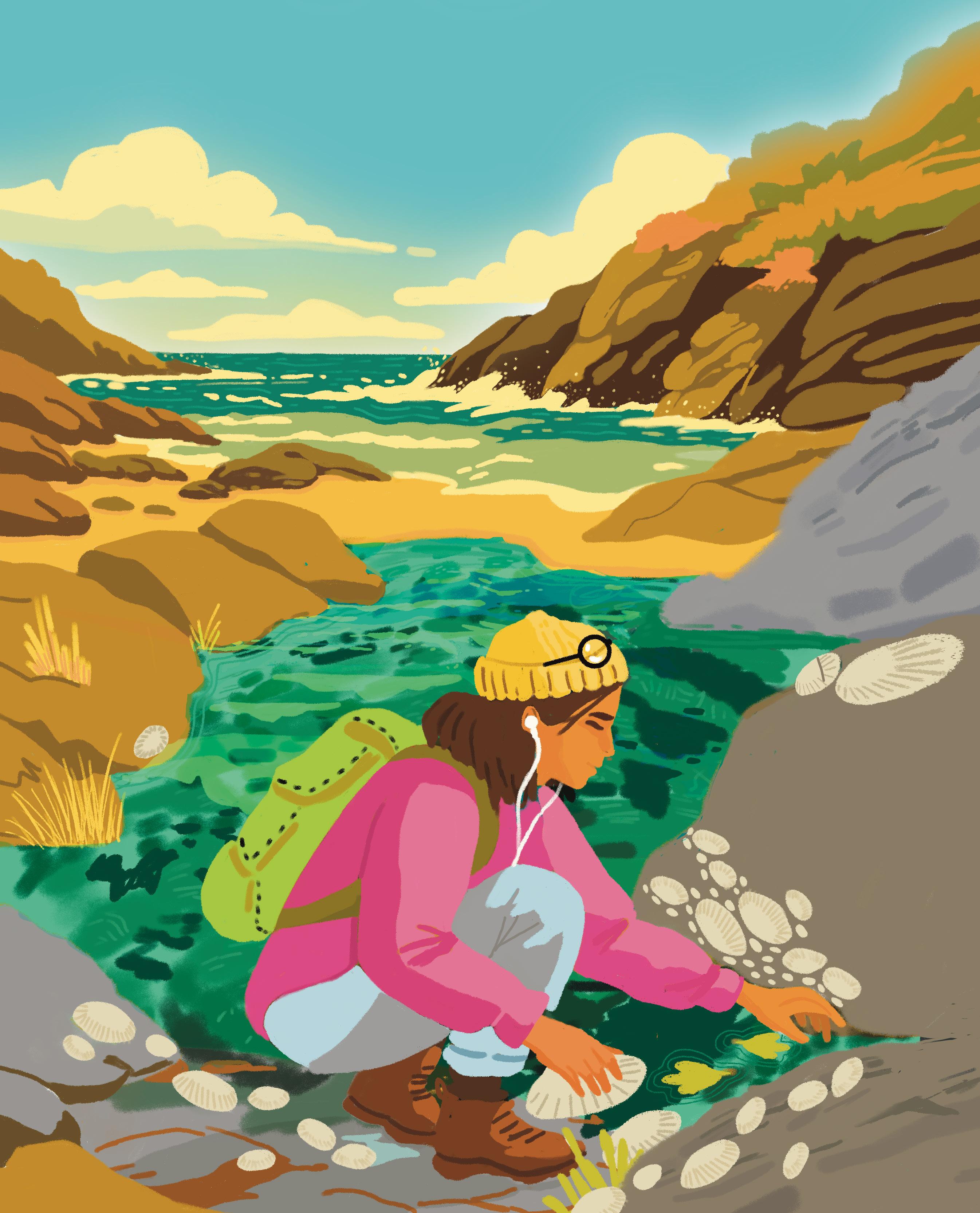
Find a project to join
• Zooniverse (zooniverse. org) is a platform sharing projects from all over the world seeking volunteers.
• The Wildlife Trusts (wildlifetrusts.org/ citizen-science) details projects across the UK, including region-specific options.
• Earthwatch Europe (earthwatch.org.uk) has a focus on nature-based projects you can take part in.
Shoresearch project, which monitors species and habitats in the intertidal zone. That’s basically the area of the coast that is covered by the tide when it comes in, and becomes exposed when the tide goes out.
“We use the power of volunteers to help us collect the data. If we didn’t have them, there’s no way we could collect the amount of data that we do,” she explains. “The data then goes into a big national database, where it’s then verified by external experts, and can then be used to put real world conservation measures into action.” In fact, this data that’s been collected played a key role in the creation of the 91 Marine Conservation Zones around England, as it proved how important they were.
This is hugely empowering for the citizen scientists involved, who, like so many of us, might have been feeling helpless in the face of our ecological crisis. Ruby Stothard is a member of the Sussex Underwater team, which, alongside an umbrella organisation (called Sussex Bay), is raising awareness of the life teeming in the waters around the coast, including pushing for a restoration of the kelp beds that have been destroyed by trawlers.
She says: “It’s hard to feel like you can make a difference with the current state of the world, but actually, you can be involved in first-hand monitoring, and recording the recovery of nature. You can get involved, and work with people who are trying to do the right thing.”
But how accessible are these projects? Do you need to come armed with extensive knowledge to be of use? Paul Boniface also works with the Sussex Underwater project, and is part of a team of almost 20,000 people studying the kelp forest off the coast of Bognor Regis. He emphasises that prior knowledge is not necessary. “What I love is that, as a community, we are learning together,” he explains, adding that the group works with PhD researchers from the University of Sussex.
“Over the past four years, my knowledge has gone through the roof,” he shares. “It’s a quid pro quo relationship. We’re helping them with our data, and they help us expand our knowledge of our local environment.”
Ella Garrud adds that their volunteers usually share “an initial interest in wildlife conservation of the marine and coastal environments”, but they “learn on the job”. She adds that it’s
Data that’s been collected played a key
role in the creation of the 91 Marine Conservation Zones around England
been beautiful to watch longterm volunteers pass down their knowledge to others, but also to see friendships being formed.
As Dr Mason explains: “Being part of a group gives us access to a social support network, which is invaluable for resilience and mental wellbeing. It reminds us that we’re not alone in facing challenges, and that, together, we can make a difference.”
Combing a beach for marine life, learning from experts, and having a chat as you do so seems like a beautiful way to spend an afternoon. But it also comes with the knowledge that you are making a tangible impact. As Dr Mason states, these projects can “shift us from fear to empowerment, because we gain a sense of knowing that our efforts matter, however small”. But they also deliver what she calls a “vital psychological boost” by giving us a sense of purpose, encouraging us with the knowledge we are helping, and giving us hope as we work with likeminded souls who also want to make a difference.
From the revival of an intricate ancient papercraft to an outdoor activity for city explorers, try one of our top 10 wellbeing recommendations
Writing | Lauren Bromley-Bird
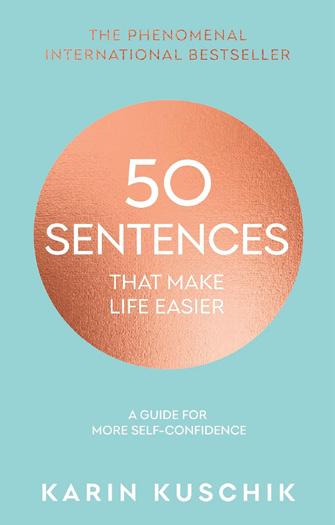
Microvolunteering for Macmillan
50 Sentences That Make Life Easier by Karin Kuschik
For anyone who struggles to find the right words in difficult or uncomfortable situations, this book holds 50 confidence-building sentences that will make navigating them a little bit easier. From ‘I’d rather not promise you that’ for boundary-setting, to ‘I think I’d better forgive myself’ for selfcompassion, Karin demonstrates how to use your words to take back control. (Out now)
1 2
There are ways to give back, even when you don’t have much time on your hands, and you can start with microvolunteering for cancer charity Macmillan. Help with a number of tasks, such as writing good luck cards to fundraisers or distributing postcards in your local area. (Visit macmillan.org.uk to view new opportunities)
‘ChatterBeans’
3 4 5
Everyone has a story, they just haven’t been told yet.
‘ChatterBeans’ is a space for stories to be shared, and new lessons to be learnt. Podcast host Isaac Kong invites people from around the world to chat about all sort of things, from personal journeys to challenges and achievements. (Available on all podcast platforms)

Go on a local landmarks hunt
We’re talking about exploring those significant bridges with the stunning panoramic views, or those monuments rich in history that you usually skip past each day when rushing from place to place. Give yourself permission to slow down, wander around, and uncover the things that make your local area unique.
Charles Rose
You’ve probably never thought about what a tree’s heartbeat sounds like, or even what noise a snail makes as it slides over a leaf, but there’s a tranquil beauty that can be found in listening to these unexplored sounds. Charles is a French field recorder who captures nature’s symphonies that we don’t often hear by ear alone. (Follow @chasseurdesons on TikTok)
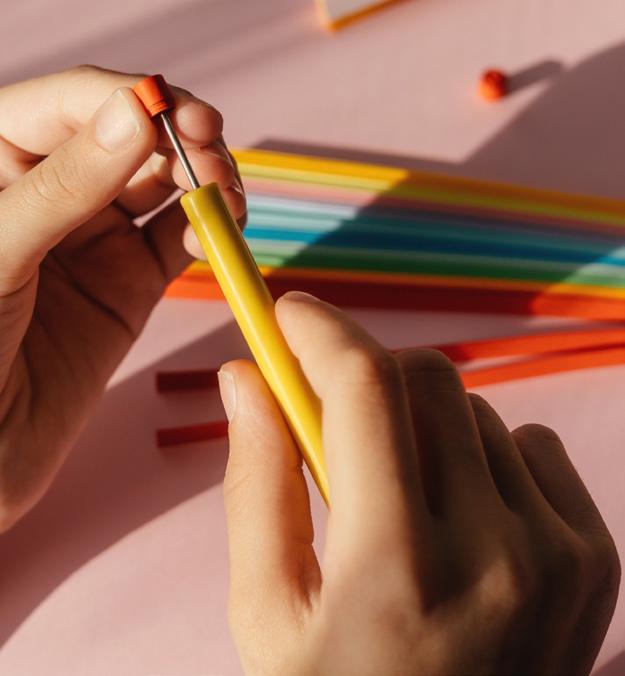
7
BookKind is an online bookshop on a mission to make a meaningful impact in the world. When you buy a book through its website, 10% of the value of your purchase will be donated to a charitable cause that is meaningful to you. (Visit bookkind.co.uk to find out more)
Try paper quilling
Even though paper quilling is not widely known in today’s era, it’s a beautiful ancient papercraft that was the go-to during the Renaissance. The idea is to roll and shape strips of paper to create intricate pieces of 3D art. Finished reading your magazine? See what you can make from our pages, and tag us in your photos. (Find tutorials on YouTube)
9
6 10
8
Combine badminton, tennis, and ping pong, and what do you get? Pickleball! The aim of this fastgrowing sport is to hit the ball over the net in either singles or doubles, as you would with tennis or badminton, but with paddles instead of racquets. Its simple game rules make it the perfect match for people of all ages.
Despite changing attitudes towards mental health, many still hesitate to seek out therapy. In Change Your Mind, Change Your Life, we see just how transformational it can be, as leading therapists open the doors to their rooms for us to take a behind-the-scenes look into the sessions of real people. (Watch the series on BBC iPlayer)
Mind Cards
Building a consistent self-care routine doesn’t need to take up all your time, it can be as simple as making one small change every day. With Mind Cards, you can pick a card at random each day to find an actionable prompt to help you cultivate better wellbeing. By the way, they are all therapist-approved. (lswmindcards.com, £14.99)
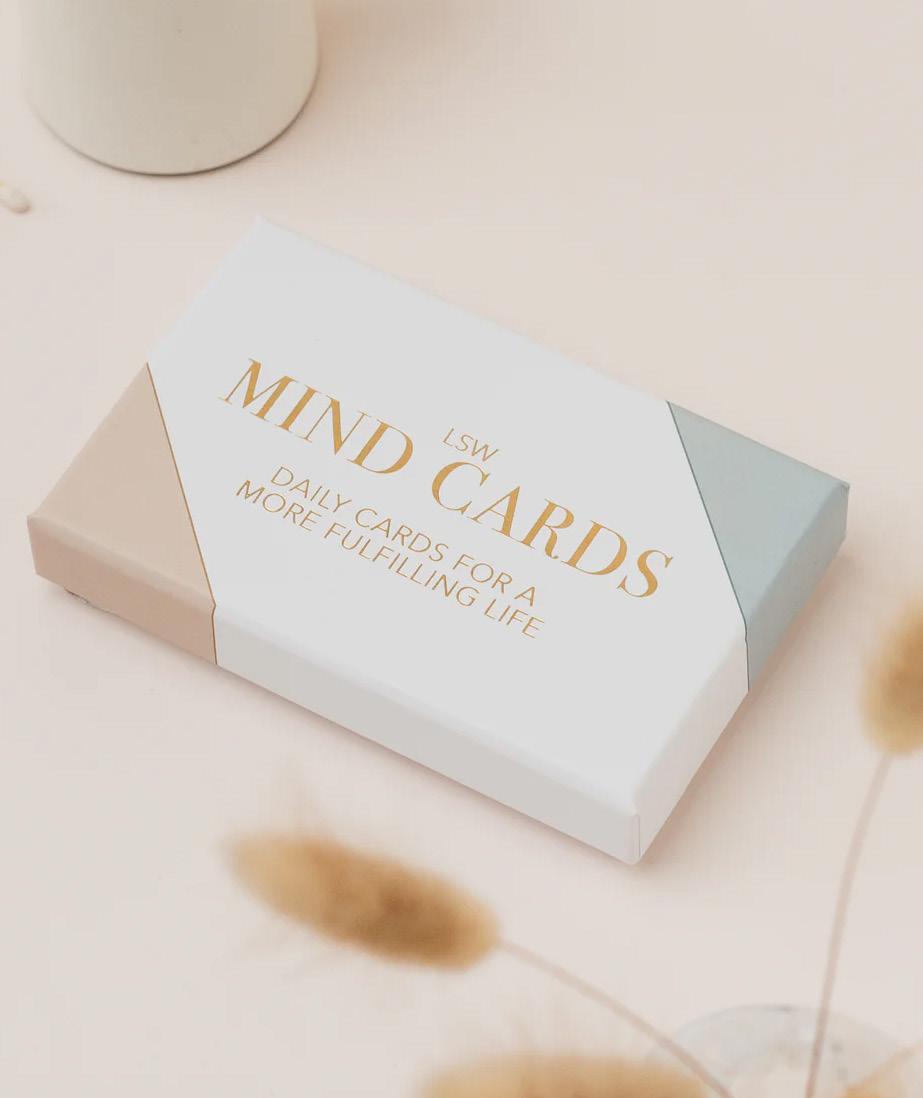
For your chance to win, simply email your answer to the following question to competitions@happiful.com
Which breathing exercise asks you to visualise a shape?
a) Pursed lip breathing
b) Alternate nostril breathing
c) Box breathing
*Competition closes 31 October 2025. UK and NI only. Good luck!
Making decisions can feel like playing a frantic game of pinball, with our thoughts zipping around wildly. But, can understanding the science behind our choices help us regain some strategic control?
Writing | Ilona Cabral
Did you know that the average adult makes between 33,000 and 35,000 decisions every day? Some of these are conscious, such as ‘What will I have for breakfast?’ or ‘Will I go to the gym today?’ but thousands of them are quietly informed by our subconscious biases.
Like many young people, I recently decided to leave behind my corporate nine-to-five job, and began a solo travelling adventure. It was by no means a snap decision, and made me think deeply about the entire decisionmaking process: how decisions are made, the different ways to approach them, and how to make what we might call the ‘right decisions’. Here’s what I learnt.
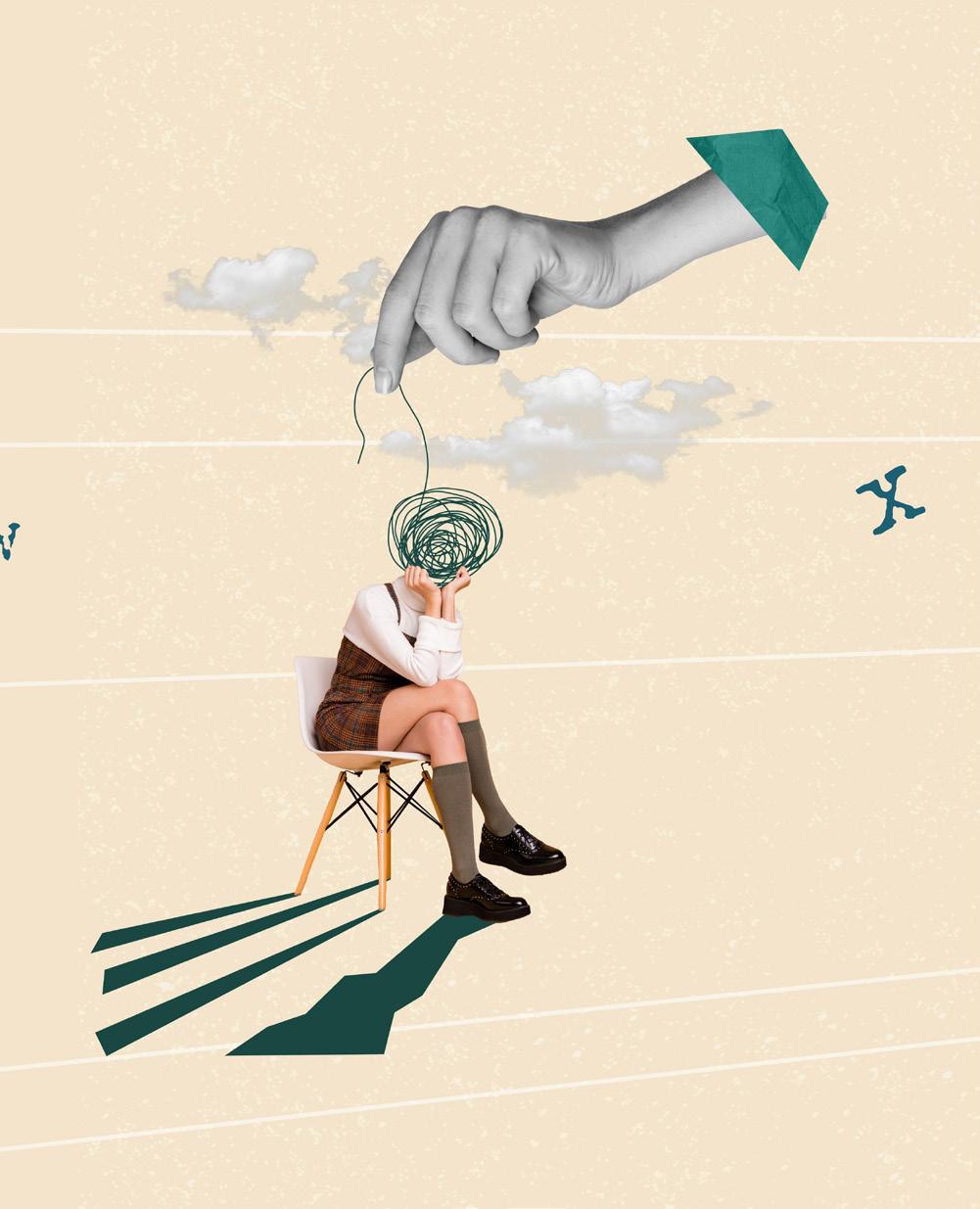
The brain and the decision-making process
What really happens in our minds when making decisions? Well, there is no simple answer. A multitude of neural, emotional, and hormonal triggers impact the choices that we make.
Research has examined the “changes in cerebral blood flow in participants playing interactive social games inside an MRI scanner”, as noted in 2020 research in InPsych, and found that blood flow increased to the prefrontal cortex in the brain. This is the “higher-order association centre in the brain”, responsible for “decisionmaking, reasoning, personality expression, maintaining social appropriateness, and other
complex cognitive behaviours”, as stated in a 2023 paper in StatPearls. The limbic system, within the prefrontal cortex, is particularly important during decision-making, taking things like emotions and memories into account, which can result in irrational or unpredictable decisions.
A vast range of hormones impact the decisions we make, including oxytocin (which influences our social behaviour), cortisol (a stress hormone), dopamine (a feel-good hormone), hunger hormones, and many more.
I’m sure you have heard of the expression, ‘butterflies in your stomach’ or ‘following your
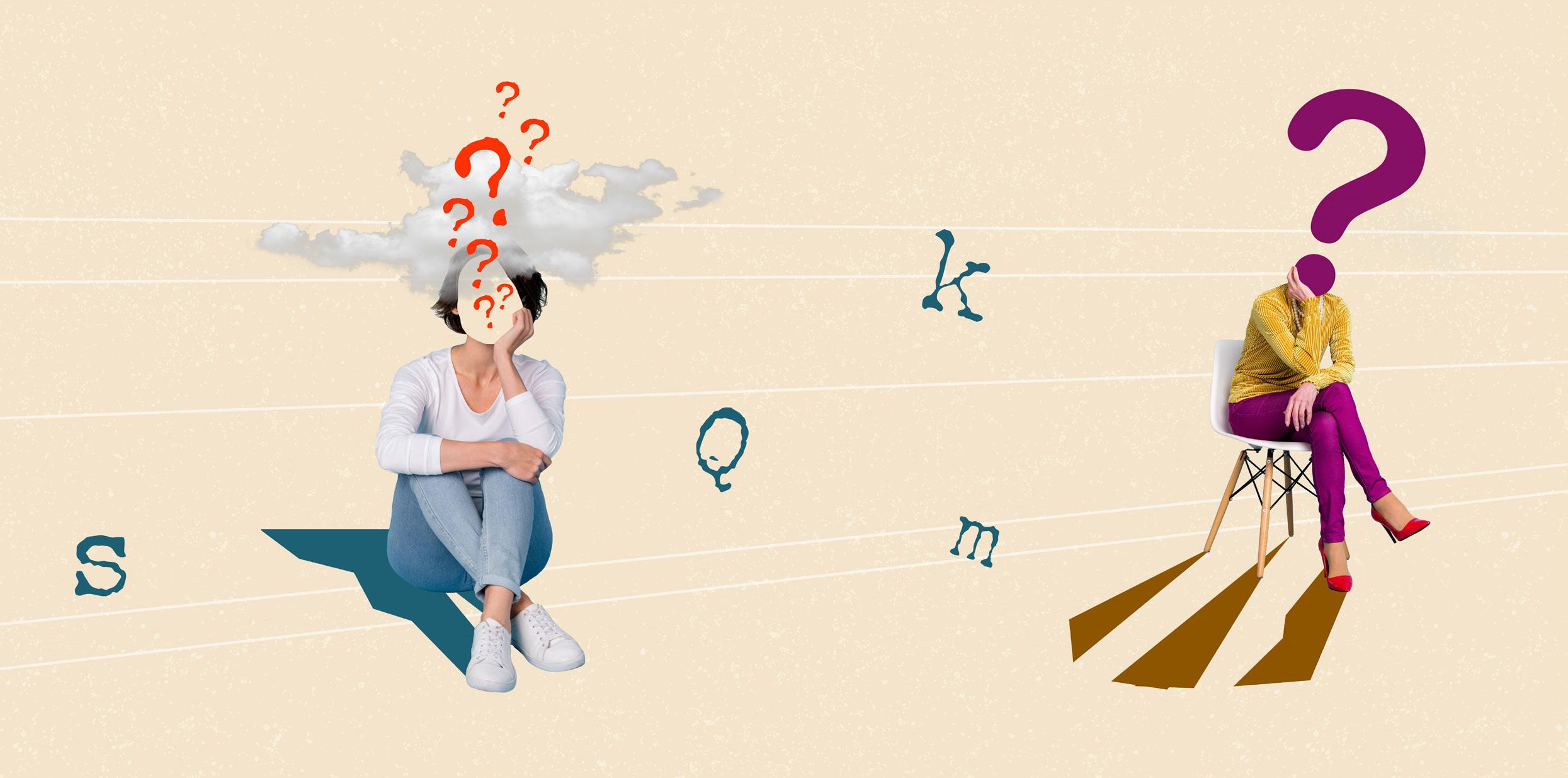
intuition’. But what do these phrases actually mean? Are these sensations informed by an internal logic, or something else?
The feeling of butterflies can occur in many different circumstances – when we’re stressed, anxious, excited, or perhaps meeting a romantic partner. Far from being a mystical signal, the sensation is actually caused by a reduction of blood flow to our digestive system, triggered by the body’s fight-or-flight response. As our adrenaline or cortisol levels rise in response to a supposed ‘threat’, our heart rate increases, and blood rushes to our muscles and away from the digestive system.
The blood vessels around our stomach and intestines then narrow, and the digestive system muscles contract.
Often heralded as the best way to make decisions, intuition is tricky to define; it seems like an instinctual sense of selfpreservation left over from days of old. However, scientists and psychologists believe that intuition is a largely subconscious process informed by ‘pattern-matching’ memories and situational context, which then guides our actions as a result. The automatic information generated in our brains by a scenario informs our judgements, which often don’t appear to require conscious thought.
As we fixate upon decisions, many of us become more anxious, overwhelmed by numerous options, and concerned about future consequences – either positive or negative. Fearful of making a ‘mistake’ and regretting our decision, we may procrastinate, only to find that the decision looms larger when we return to it at a later date. This is decision paralysis.
Even when making a seemingly tiny decision, it can feel enormous. As our neural circuits fire and loop, like a merry-goround, our bodies can overreact, producing stress hormones, which prepare us for a crisis. >>>

Some people may even begin to feel physical indicators of stress, such as a raised heartbeat, increased blood pressure, faster breathing, and, in some cases, panic attacks.
Allowing stress to influence our decisions can lead to impulsivity, with the emotional limbic system dominating the logical and precise, prefrontal cortex. To escape this decision paralysis, we must wrestle back control, and recognise the real consequences of the decision, rather than our imagined ones.
Tips to help you make decisions
Reframe your thoughts
This technique is all about changing your perception about your decisions. During this practice, you should try to analyse your current thought processes,
identify any negative thoughts, and then flip them on their head to find the positives. Throughout this process, try to be aware, realistic, and grateful.
Take time to reflect
Rushing decisions or acting rashly can lead to impulsive choices. Give yourself time to make the decision, as well as space to reflect and consider. Remember to be kind to yourself and give yourself a break, while setting a realistic deadline for your decision. You may find that other activities like journaling your thoughts, or meditating upon the issue, can help you decide.
Pro and con lists
You knew it was coming: it’s the tried and tested pro and con list. When making a pro-con list, it’s best to work in binaries, breaking down one decision, and examining the potential positive and negative outcomes. For example: ‘What would happen if I take the job?’ or ‘What would happen if I don’t take the job?’ If some pros or cons seem to outweigh each other, try assigning a numerical value to each statement, e.g. is this worth +5 points or -3 points?
Imagine yourself one year into the future
Remember, one decision is unlikely to entirely shift your reality forever. Imagine yourself as one year older (and, hopefully wiser) having made one decision –e.g. What would your life look like if you got a dog? What would it look like if you didn’t?’ How would these imagined realities differ? Perhaps this decision, which seems so
enormous now, won’t make such a huge impact on your overall life and wellbeing.
your mistakes
The fortunate, and unfortunate, thing about mistakes is that, by the time you realise them, they have often already occurred. In the face of regret, it’s important to accept your mistakes, learn, and move on. Try to appreciate each mistake, and let them guide future actions. Nothing is gained by dwelling on, and being consumed by, your less fortunate choices.
Share the load
It can get very noisy in your head as you consider and reconsider different decisions. Speaking aloud can dispel the noise, and help you break free from stress spirals. Consider sharing your feelings and concerns with friends, family, and even a trained professional if you feel like you need the support. Talking through a decision can corral whirling ideas into clear trains of thought.
Accept the consequences
It is difficult to stomach, but there are consequences to all decisions in life, both good and bad. Accepting this fact from the outset of your decision will help you to make your choice. It’s all about weighing the value, or cost, of each consequence, and choosing the so-called ‘best approach’. Remember there is not always a ‘right decision’, you could live your life a million different ways, but you only get to experience one of those realities.
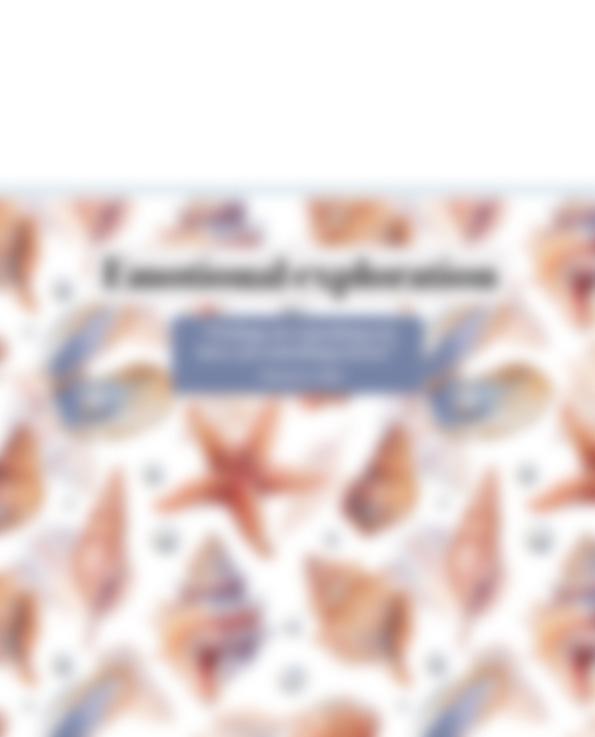
Looking for support with your mental health?
Here are some places that can help:
If you are in crisis and are concerned for your own safety, call 999 or go to A&E
Call Samaritans on 116 123 or email them at jo@samaritans.org
SANEline
SANEline offers support and information from 4pm–10pm: 0300 304 7000
Mind
Mind offers advice Mon–Fri 9am–6pm, except bank holidays: 0300 123 3393. Or email: info@mind.org.uk
Switchboard
Switchboard is a line for LGBT+ support. Open from 10am–10pm: 0800 0119 100. Or web chat: switchboard.lgbt

• Pass me on to a friend who might appreciate some articles.
• Get crafty and use me for a vision board or collage.
• Keep me on a coffee table to pick up when you need a boost
• Remember I’m 100% recyclable, so pop me in your recycling bin.
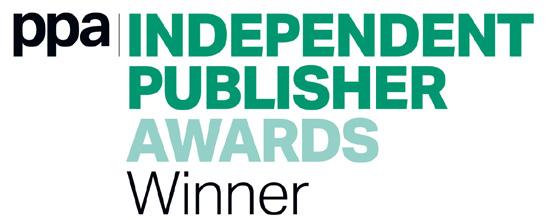
p16
MANAGING MENOPAUSE
For news, information, and free resources, visit menopausesupport.co.uk

p22
p55
CHILD AUTISM SUPPORT
Visit childautism.org.uk or call 01344 882248 for advice and support. Lines are open 9am–6pm.
EMOTIONAL ABUSE
Visit nationaldahelpline.org.uk or call 0808 2000 247 to access support. Lines are open 24/7.
Our two-for-one tree commitment is made of two parts. Firstly, we source all our paper from FSC® certified sources. The FSC® label guarantees that the trees harvested are replaced, or allowed to regenerate naturally. Secondly, we will ensure an additional tree is planted for each one used, by making a suitable donation to a forestry charity. Happiful is a brand of Memiah Limited. The opinions, views and values expressed in Happiful are those of the authors of that content and do not necessarily represent our opinions, views or values. Nothing in the magazine constitutes advice on which you should rely. It is provided for general information purposes only. We work hard to achieve the highest possible editorial standards, however if you would like to pass on your feedback or have a complaint about Happiful, please email us at feedback@happiful.com. We do not accept liability for products and/or services offered by third parties. Memiah Limited is a private company limited by shares and registered in England and Wales with company number 05489185 and VAT number GB 920805837. Our registered office address is Building B, Riverside Way, Camberley, Surrey, GU15 3YL.
